2023/2024
- Andy Keith
-
Andy Keith
Digital Media Officer
My journey with Flag Football started back in 2017 after a few years playing the fully kitted side of American Football (helmets and shoulder pads). I wasn't enjoying playing kitted but also wasn't ready to give up the sport entirely.

That's when I came across Flag Football and the Aberdeen Oilcats. Flag is a fast-paced, non-contact, five-a-side version of American Football and to me, being able to avoid being battered around the field while still keeping my favourite part of the sport - the exciting touchdown runs and catches - really caught my attention and felt much better suited for someone of my size and skillset. I went along to the Oilcats Rookie Day and haven't stopped since.
Aberdeen Flag Football Club has been around since 2003 and are one of the longest established Flag Football organisations in the country.
Today we are a 365 day a year club competing in both tiers of the British American Football Association (BAFA) National Flag Football League (NFFL), with our Premiership side, the Oilcats, and our Division 1 side, the Silvercats. The NFFL, which is made up of around 70 teams across the whole of Britain and is made up of mixed-gender teams, typically runs from April to September.
The club is entering our first ever all-Women's team into the BAFA Women's Flag Football League this season, making us the home of the only Women's team north of the central belt in the UK. This is a really exciting milestone for the club and something we've been hoping to do for a long time.
We're also running Friday Night Flag over at ASV every Friday night over winter for anyone who wants to join in on playing Flag without the commitment of joining a nationally competing team.
A game is made up of two halves of 20 minutes played on a field about half the size of a normal full-sized American football field. Each team has five players on the field at a time. Each player wears “flags”, tags attached to their belts. Points are scored in the same way as the kitted game, scoring touchdowns by moving the ball into your opponent's endzone, either by running it or throwing/catching it. Defenders aim to stop this by tackling players with the ball or intercepting passes.
Getting into the details and the strategies is where the game can get interesting. There's something very satisfying about running a well-executed play, with all five players on the same page. I've always loved team sports and the camaraderies you can make. Watching the team grow and playing a part in that is really rewarding. But honestly, selfishly, nothing really beats catching touchdowns!
My favourite day came in last year's playoffs down in Manchester. It was a scorching day playing in 30 degree heat and we had a tough slate of games against really good teams. We won our first game of the day, which meant our reward was a matchup against the defending National Champions the London Smoke. We didn't win that game in the end but it was a really high-level and close game right to the very end, which no one expected us to really compete in. We ended up playing five games that day, the maximum possible number. We finished 6th in the country and the team spirit and general vibes of the day was really high. The most fun day of Flag I've ever played.
I have also been working with the Great Britain national teams as a photographer for a bit over a year now. I felt there'd been a real lack of coverage regarding the GB Flag teams over the years and in the build up to the European Championships last year I tracked down the email address of the people in charge and told them why that should change and why I should be the person to do it! After working at a training camp I ended up securing a media pass for the Championships in Ireland and have been working with the team ever since, travelling to camps in England and Prague, the Euros in Limerick and World Championships in Lahti, Finland. And our Women's team did win the Euros by the way!
You can see a bunch of those pictures on my site: andykeith.photo
If you're interested in trying Flag, find your nearest team and try it! The sport is going through a big surge in popularity across the world after the announcement it will be included in the Olympic Games in Los Angeles in 2028 so whether you're a casual fan of the NFL, looking for a new hobby or think you could make the Olympic squad there's never been a better time to get involved. The sport is inclusive with teams of all ages, sizes and experience levels. Feel free to get in touch with me or the team at @aberdeenflagfootball on social media.
- Catherine Andrews
-
Catherine Andrews
Administrative Officer (Curriculum) - Registry
Since April 2022 I have been a percussionist with the Bon-Accord Silver 'B' Band. When I was young I was very involved in music, playing various instruments including clarinet in my local youth orchestra. However I had not played for many years and wanted to get back into music and reconnect with people after the isolating Covid restrictions.
The Band had a vacancy for a percussionist so I thought why not? I can read music and follow a conductor, even though percussion was new to me. My daughter was also with the Band and luckily she didn't mind her Mum coming along and having a go!
Playing concerts and contests is always exciting (if nerve-wracking!) but the highlight so far has to be winning our section at the Scottish Regional Brass Band Championships in March 2024. This means that we have qualified to represent Scotland at the National Finals in Cheltenham in September. It will be a very long bus journey but we are all thrilled to be representing Scotland and Aberdeen.
The band members will largely be paying for the trip themselves, but the travel and accommodation will not be cheap, so we are fundraising to help relieve the financial burden a little bit. As part of this we have set up a GoFundMe and any support would be greatly appreciated.
Visit the Band's website to find out more.
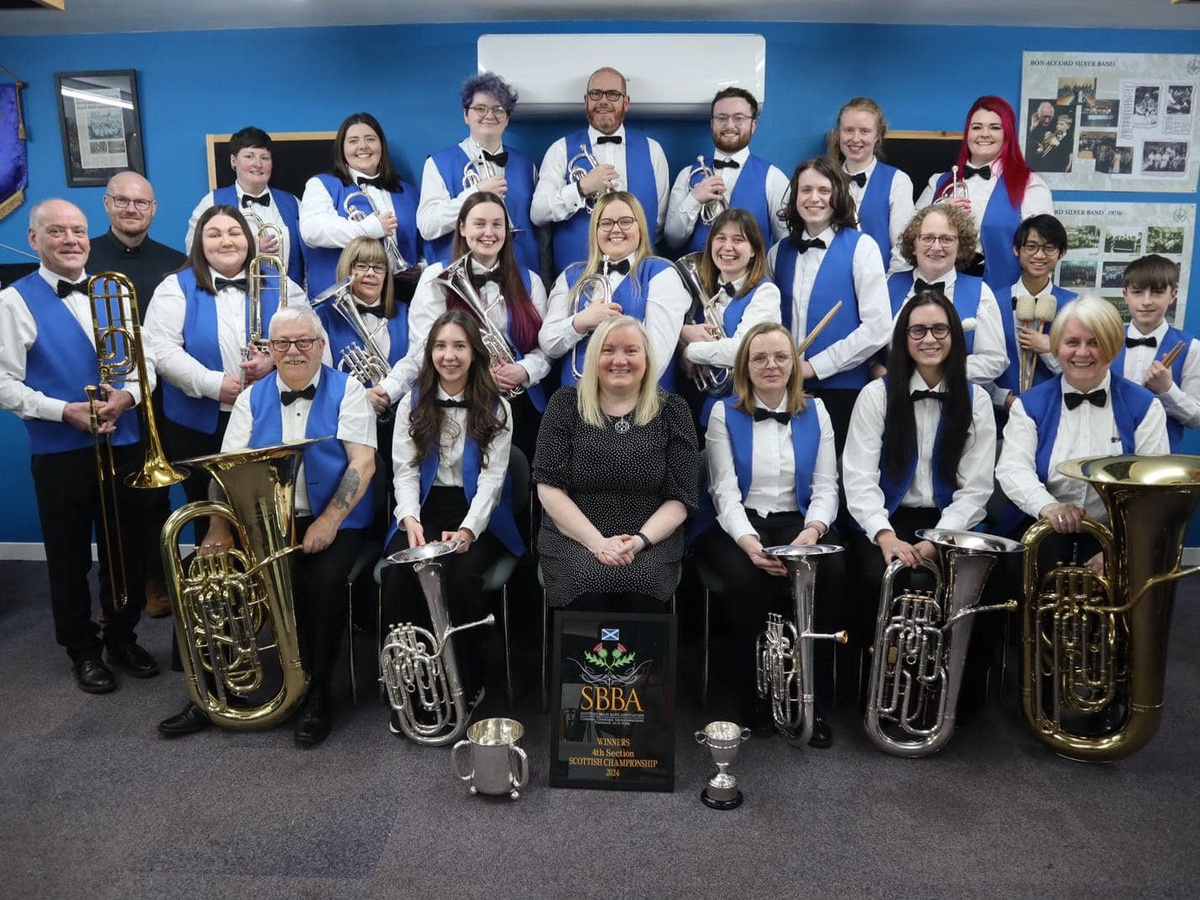
- Reuben Jarvis
-
Reuben Jarvis
Human Resources Systems Administrator
I am one of the founding members of the Transmanian Devils, the UK's first and only trans rugby club. The team is a
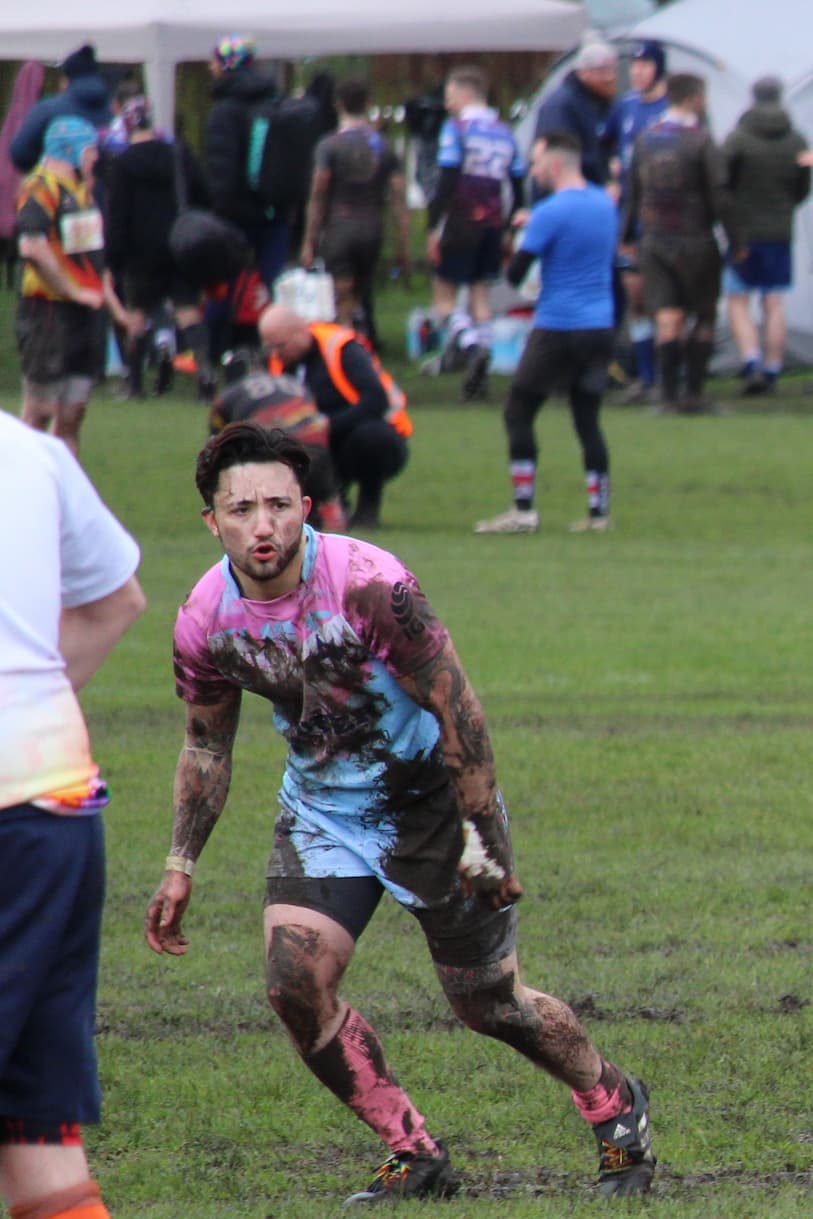
We formed in March 2023 and are celebrating our first anniversary this week. Earlier this month we played at our second tournament, in Newcastle, where we won our first game.
We created the team to take up space and fight for trans rights in a sport that has excluded trans women and placed extra restrictions on trans men. We are liaising with the English, Welsh and Scottish Rugby Unions to hopefully overturn the discriminatory policies currently in place. We are also working to remove discriminatory practices at a club level. We have a handful of games coming up throughout the UK this year, including our bootcamp in August in Manchester and a tournament in Edinburgh in October.
It feels amazing to have won our first game. It evidences the fact that trans people belong in sport.
I studied human rights in my law degree, but it feels good to be on the ground floor liaising with organisations and effecting real change. Being a part of the Devils has given me so much enthusiasm to improve the world for trans people and has led me on to getting involved in healthcare campaigning for trans patients.
I also enjoy giving our supporters and other teams at tournaments the chance to see just how good trans people can be if they are given a chance to excel. Every single lovely message in the group chat after a match or tournament about how safe people feel with us to express themselves and how much they love our focus on cultivating joy makes my heart burst.
You can find out more about the team on Facebook .
27 March 2024
- Rachel Elliott
-
Rachel Elliott
CPD Business Development Officer (Research & Innovation)
I usually rush out of the office on a Thursday as I am a Girls' Brigade leader in the 3rd Aberdeen company at Garthdee.
.jpg)
Every Thursday I work with 20 excitable Juniors (aged eight to 12) as a leader in their section. We do crafts, dancing, games and other activities and I help them to develop confidence and new skills. We also take the older girls away on team building weekend trips that have them doing things like abseiling and kayaking.
I joined Girls' Brigade in 1991 at the wee age of five and came through the Explorer, Junior and Senior and Brigader sections. I made lots of friends, did my Duke of Edinburgh Award, took part in competitions and got my Queen's Award. At 18 I chose to do my leadership training in order to give other girls the same opportunities and fun Girls' Brigade gave to me and I'm now close to 20 years as a leader. In that time I've worked in my company, been a training mentor for young leaders, helped organise our annual divisional display and a visit from Her Majesty Queen Camilla to my company at Garthdee when she became patron of Girls' Brigade in Scotland.
The leaders in my company recently totalled up that over the last 20 years we've seen more than 450 girls come through the company in some form. Some have stayed for just a couple of years while others have joined at five then left us at 18. Seeing all our girls go out into the world with more confidence than they did, because of Girls' Brigade, is very rewarding.
One of the more recent highlights has been seeing my daughter join and seeing her win her first trophy and enjoying taking part in the most recent Aberdeen Division annual display. I hope she loves it as much as I have.
There are Girls' Brigade companies across Aberdeen and Aberdeenshire, and we always welcome new girls and leaders. For more info visit the division's Facebook page .
26 April 2023
- Pam Thomson
-
Pam Thomson
School Administration Manager
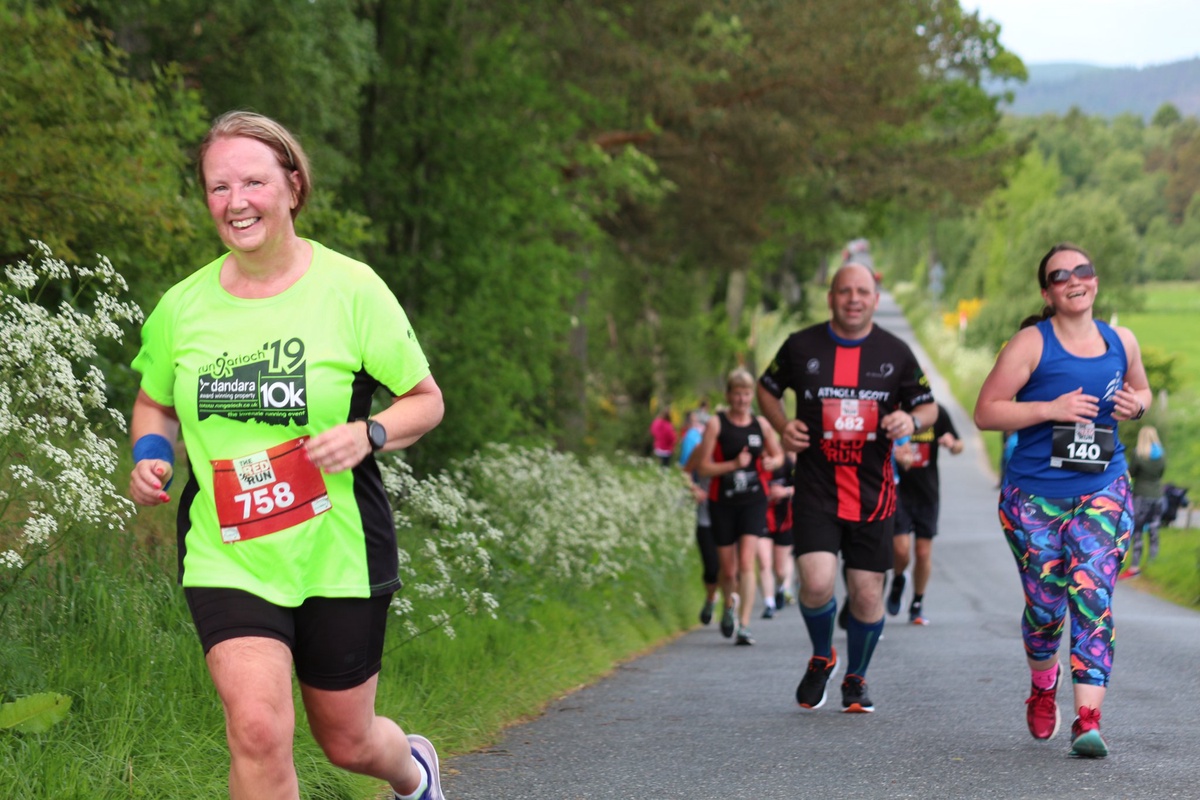
That very quickly changed, and I swiftly fell in love with running. A lot of that is down to the support I received from staff at ASV. Thanks to them I have had the confidence to set and achieve many goals: significant weight-loss, vastly improved health, signing-up for and completing first 5ks, then 10ks and even a handful of half marathons.
.jpg)
In October 2015 I ran my first half marathon - the Royal Parks HM in London, dubbed Britain's most beautiful half marathon. It was a big birthday year for me and as I love London it seemed ideal, so I entered the ballot and landed a place. This run takes in some of the capital's world-famous landmarks, all on closed roads and including four of London's eight Royal Parks - Hyde Park, Green Park, St James's Park and Kensington Gardens. The medal was my first sustainable one - made from wood from the trees felled as part of the Royal Parks Tree Management Policy.
I also decided it was a great opportunity to raise money for charity, so I ran for Diabetes Scotland who provided me with a running vest, training plan and lots of encouragement. I asked people to sponsor me and to select their favourite song which I made into my playlist for race day. I raised £1,200 with the help and support of family, friends and my colleagues at work, and it was fitting that I crossed the finish line whilst my husband's choice for my race day playlist was playing - he's my biggest supporter. Diabetes Scotland also selected a picture of me on the start line of RPHM to feature on one of their fundraising posters.
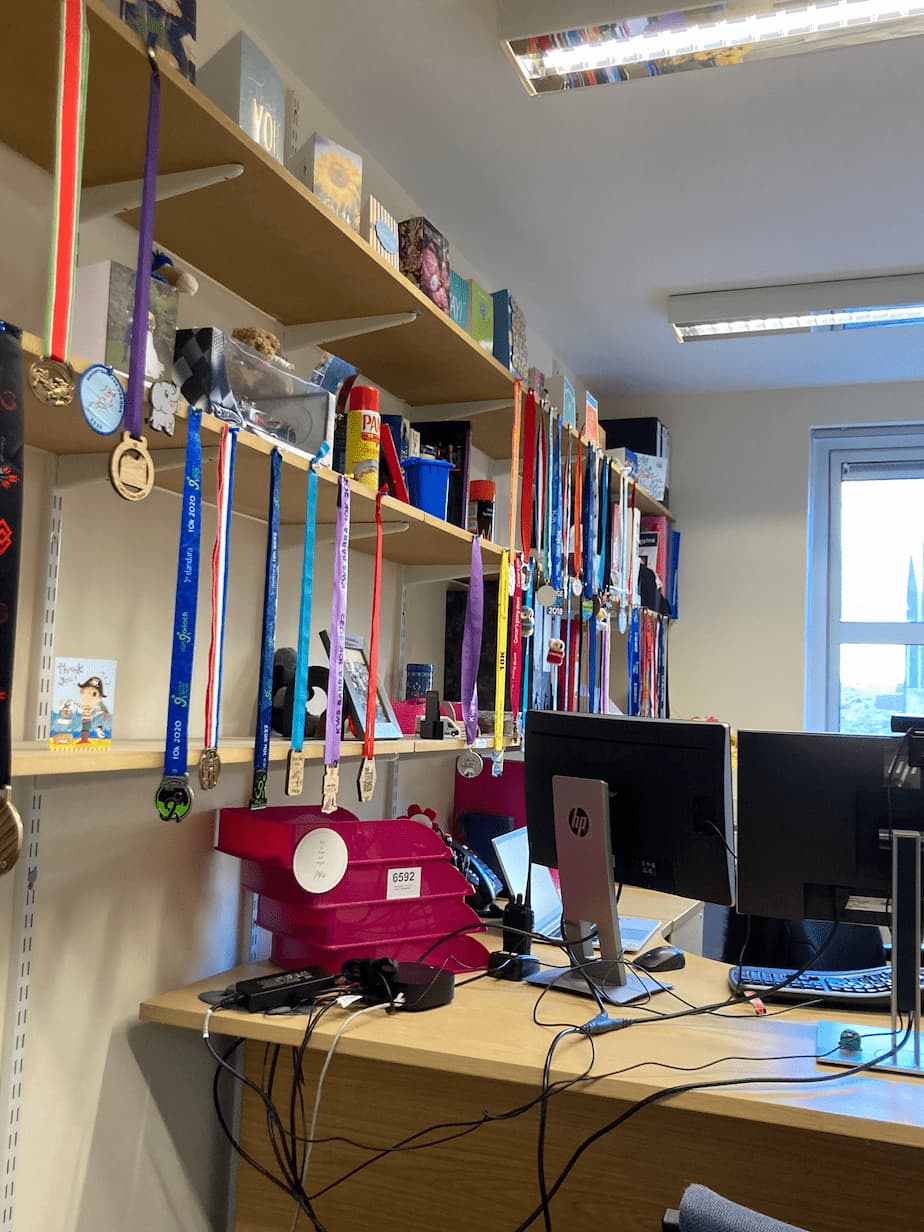
In recent years the medals, and the race events too, have become more sustainable, so the number of wooden medals is increasing rapidly. I've over 70 medals, all hanging in my office. They are my motivation, and they add a real splash of colour as all the ribbons are different.
First up for me this year is the annual Newburgh 'Beach Bash', a real local favourite that sells out within hours - that's another buzz you get from running: securing a place in the most popular races. After that my diary is currently empty, but I doubt it'll stay that way for long!
It's hard to describe how running has changed my life - its not all about physical fitness and mental health, it's about fresh air, scenery, nature, friendship and the feeling of achievement. I never thought I'd be a runner, or a poster girl or a writer - running has brought me a lot of joy!
22 March 2023
- Ian Duggan
-
Server Infrastructure Engineer
My wife and I have been married for nearly 15 years, and until
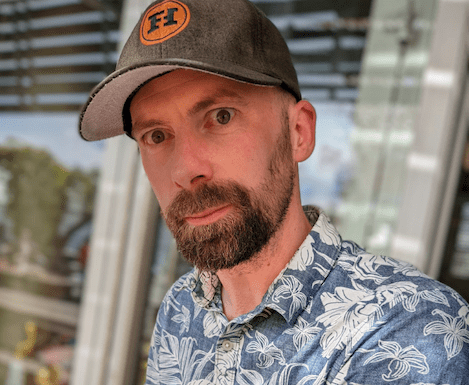
Fast forward to the end of summer in 2022, we're all settled into our new house, and regularly saying things like “hmmm, it seems a bit empty, doesn't it?” Or “really, every home needs some sort of pet…"
We were still unsure though, and to be honest probably not quite emotionally ready to replace our previous pack members. But fostering... well, that could be a nice little trial. Have a dog around again and remind ourselves of the highs and lows of canine ownership, but without committing to another 14 years.
A few days and a quick Google search later, I filled out the form on the Give A Greyhound A Home website and we patiently waited to see what would happen. A few days after that, a lady from GAGAH phoned. We had a lovely chat about what we were hoping to do, how GAGAH worked, and what we could do to help. She also introduced the concept of failed fostering i.e. going through the fostering process and then keeping the dog. The plan was we would get a greyhound that was fresh from a trainer, have them stay with us for a while, get them checked out by a vet, do some basic assessment on their behaviour and personalities, and then assist with getting them settled into a new forever home. And potentially, that new home was ours. Win-win basically.

Our first foster was Sonny, a 36kg male that was able to put his front paws on my shoulders without much effort (“no, down, bad dog” I muttered, stumbling backwards as he tried to lick my face). Basically, a horse. 12 weeks later, he was off to his new home in Alford living with two experienced owners, a new doggie best friend, and a nine-year-old girl who simply adored him. During his time with us, we discovered he liked carrots but not bananas; he was fairly interested and friendly with all types of dogs but loved people; he was too interested in cats and small furry things; he loved tearing round the house at full speed but was very gentle and careful with kids; and he didn't like to be alone, especially at night-time.
When he left, he took a bit of our hearts with him. We have a framed photograph of him on our wall now. So do my parents (his foster grandparents).
Sonny was of esteemed breeding (his sire had won the Irish Open a few years ago) but he was a failed racer. Somebody had paid quite a lot of money for him, but he'd been given up after he “refused to chase”, and in his only trial race was disqualified for barging another dog. When first meeting him you would be forgiven for thinking he was a show dog. Our second foster, Fred, was the opposite. He had a pretty hard start to his life, the first few years of it spent racing regularly in small races around Ireland, and the third year completely off the records,
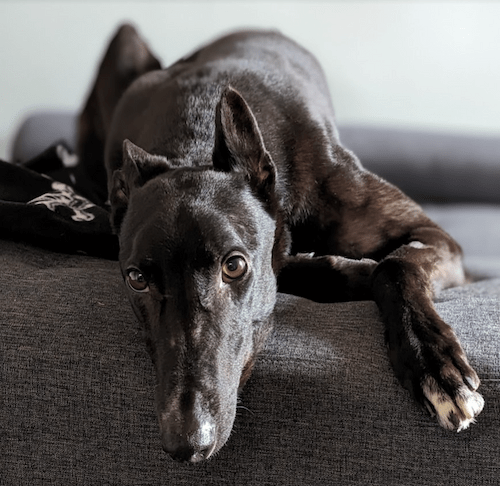
We barely had him settled in, when he was whisked off to his new home near Inverness, by a young couple who came to meet him and immediately fell in love with him. He used to spend 23 hours a day in a cold concrete shed by himself; now he lives in a loving home and sits on a comfy bed whilst watching the world go by through a large window.
His photo is on the wall too.
We've just recently picked up foster number three who's called Frank. Like Fred, he's also from the wrong side of
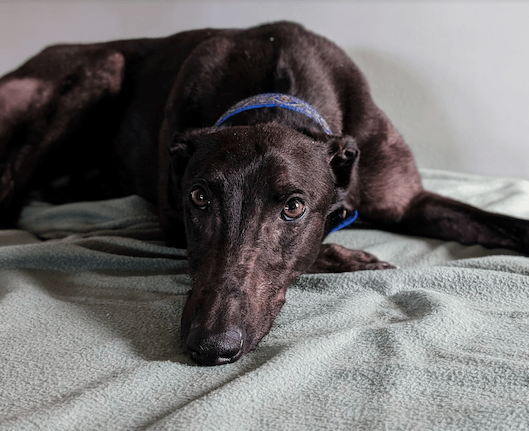
Or maybe not. Maybe this will be the foster that fails.
For more information on rescue greyhounds, please go to https://www.gagah.co.uk/ or https://www.facebook.com/giveagreyhoundahome/
15 March 2023
2022
- Liam Gunn
-
Enquiry Assistant, Directorate of External Relations
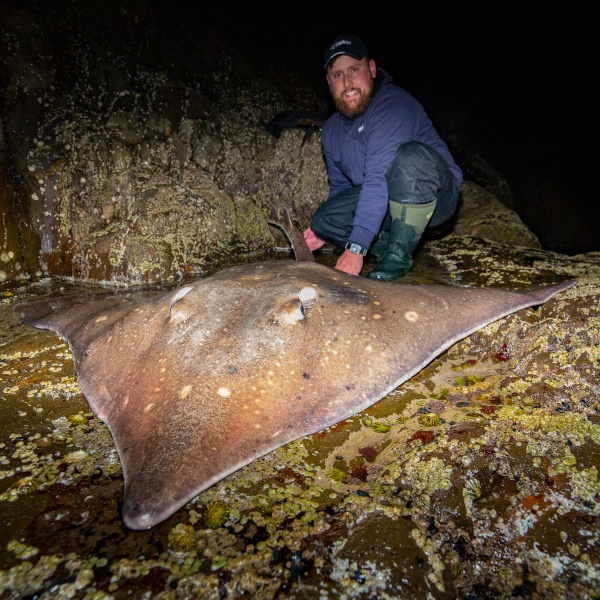
Hello! I'm Liam, and I work as part of the Enquiry team, within the amazing wider team that is Engagement and Conversion. I love what I do, and the amazing people I work around make it all the better!
I am an angling journalist in my spare time and I write articles and photograph specimen fish for the UK's best selling angling magazine, Sea Angler. Angling is a hobby I have been utterly obsessed with since the age of 7, where it all started with the capture of my first fish on a hand line, down at my local harbour, where I grew up in the isolated and exposed Shetland Islands. Every excuse I get to fish or be involved with fishing - I take it.
When I was 11 years old, I was awarded a Blue Peter badge, by Konnie Huq herself, when I happened to meet her on a particularly rainy day in Shetland. She watched me fishing for a while and was impressed with my efforts and enthusiasm for the sport so awarded me the green badge which, if I recall, is the environmental badge. When I ran home to tell my parents, I don't think they believed me until I pulled the badge, still in plastic wrapping, out of my pocket.
Some years later, I felt proud to represent Scotland, where I fished on an international level, in the Home Nations against Wales, Ireland and England. I came home with a medal, so I was absolutely over the moon!
In more recent years my exploits in fishing have somewhat changed. I am less involved in the competitive aspect of fishing and more into the specimen hunting aspect, with a large focus on the conservation of some of these larger fish that I like to target.
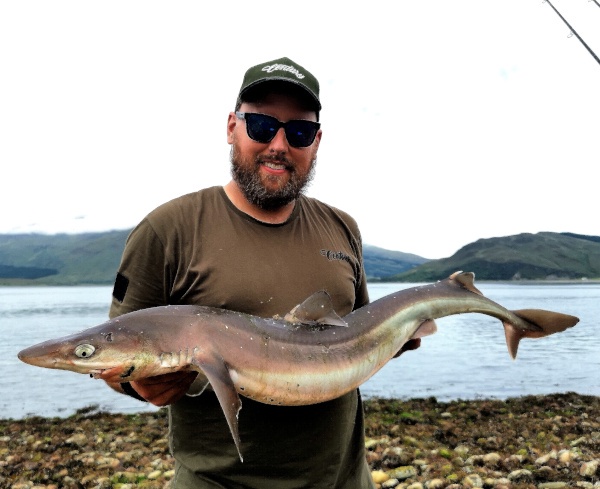
Most of my fishing is done scrambling across kelp-strewn rocks, cliffs and beaches, and often at night - you must always have your wits about you, and know a good deal about how the weather, tide and moon phase can have an effect on the areas that I tend to fish.
My largest capture to date, is a common skate which was measured to convert the weight and came in at an astonishing 202lbs. The conservation of these fish is of utmost importance, so we collect data while fishing for them in an effort to understand their movements and where they end up going along the Scottish coastline.
Additionally, I am involved with a conservation programme called Spurwatch, which has a focus on a species of shark called Spurdog, which over the years have not received fair treatment. This is an effort to raise awareness for their conservation and biology.
15 September 2022
- Caitlin Gunn
-
Digital marketing Officer, Directorate of External Relations
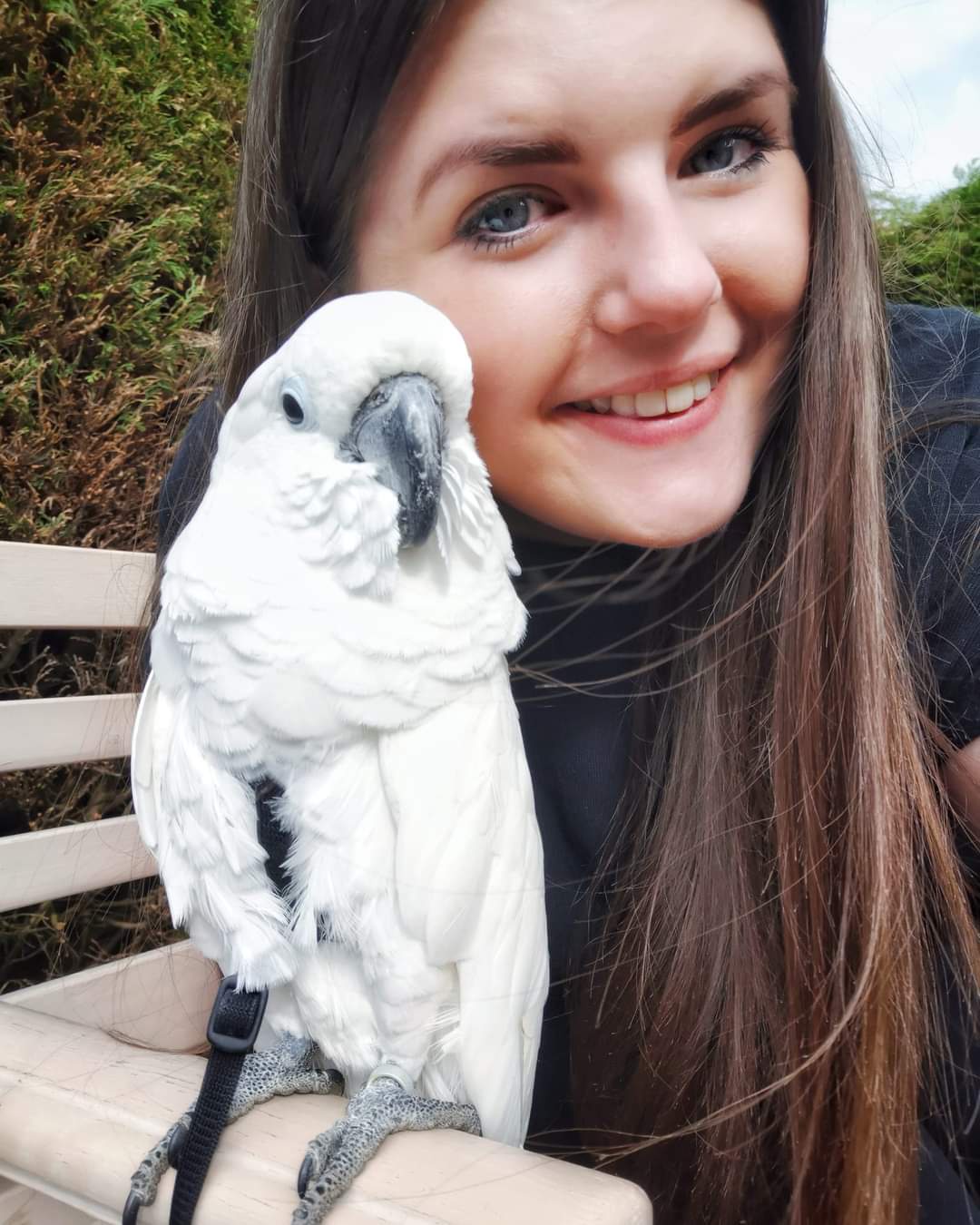
Barney the umbrella cockatoo came to live with us in June 2021. We adopted him through Birdline UK, a parrot rescue charity run entirely by volunteers that rescues, rehabilitates and rehomes unwanted, neglected and injured birds. Birdline UK accommodates every bird from tiny budgies to magnificent macaws.
It took Barney a good six to eight months to settle into his new home with us after being bounced around a number of previous homes and even having the police phoned on him in a previous home for screaming too loudly - cockatoos are not for the faint of heart.
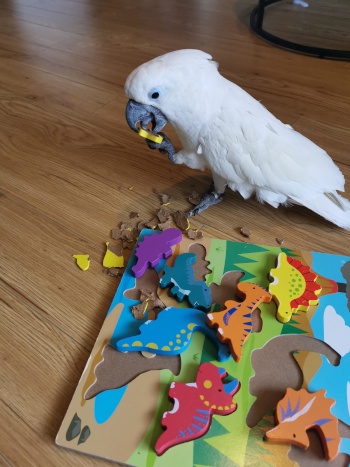
After Barney had settled in and, hearing that the charity was struggling for volunteers in Scotland, I decided I just had to get involved. So in my spare time I now volunteer as one of the rehoming officers.
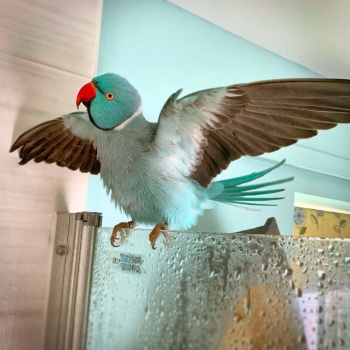
You can find out more about Birdline UK and if you're thinking of adding a feathered friend to your family then feel free to get in touch with me at caitlin@birdline.co.uk
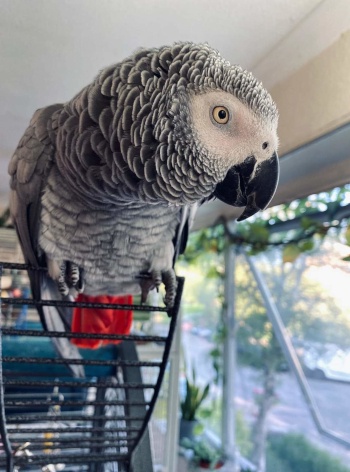
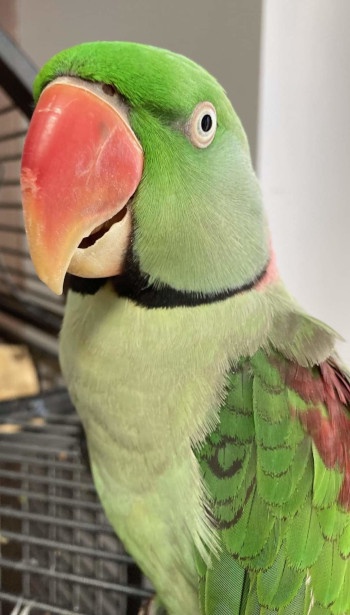

18 August 2022
- Jackie Willox
-
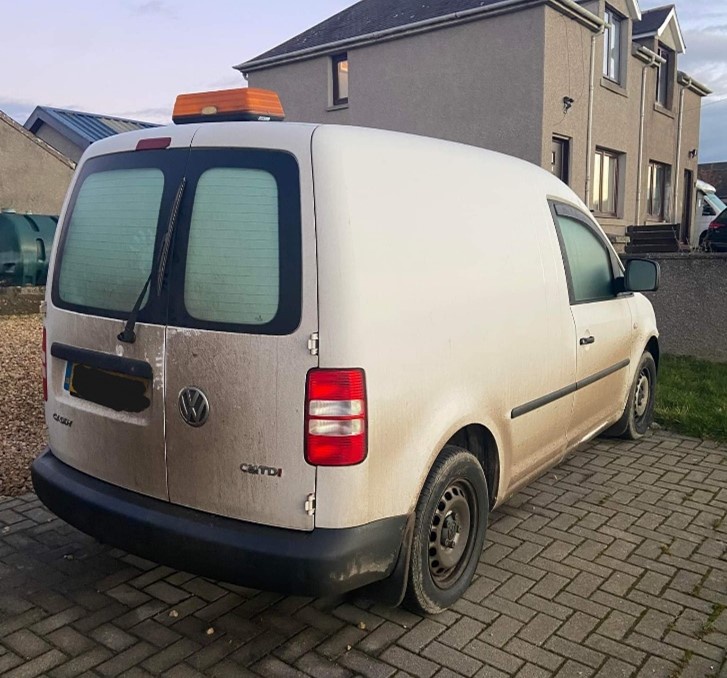
Back in 2019, following a change in personal circumstances I decided I wanted to do something for myself and a friend was doing a walk along the Lairig Ghru for Mental Health Aberdeen.
Totally out of my comfort zone I joined him and 10 others to walk the 20 miles, twice over two days. Surrounded by all these immense mountains I was inspired to also climb my first munro later that year.
Two and half years on and that tally now sits at 45 with a number of wild camps also under my belt. The hills are getting further away, however, and I decided at the beginning of the year that a wee van might be a better option for rocking up the night before and not having to worry about a tent pitch late in an evening, or vice-versa at the end of the day when you've been out in the hills and can't face a drive home.
So I bought a van back in February… it didn't look very appealing to sleep in and it was filthy! Eager to get to work though, I removed all the panels and got to work cleaning it out, adding sound deadening, bottle insulation, thermowrap and then carpeting over the original panels - all over the course of about six weeks and aided by YouTube.
This was then followed by adding rubber mat panels to the floor and repurposing a laundry shelf unit to provide storage and magnetic blackout panels for the rear windows. The beacon on the roof was removed and now powers an LED light / USB port in the rear. A blackout curtain was added to the driver's side of the bulkhead.
I've not gone full camper with it as I still want the ability to use it as a van if needs be but it's amazing what you can fit in such a small space and what a bungee cord or tie-wrap can hold up.
So far I've had two overnight trips around the Braemar area (including throwing a bike in the back for the second one) but very much look forward to going further afield when time allows and bagging more munros. All worth it for that view.
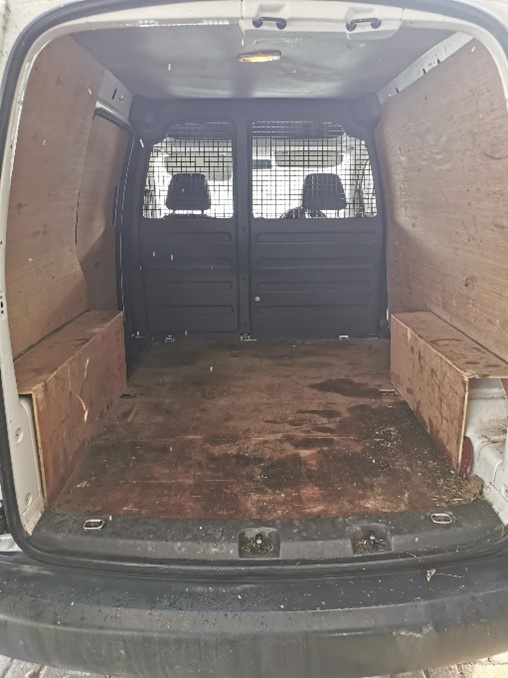
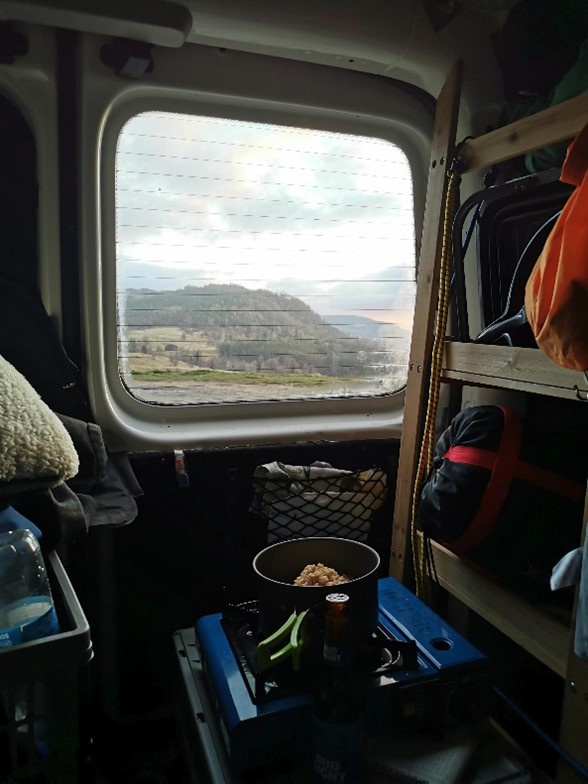
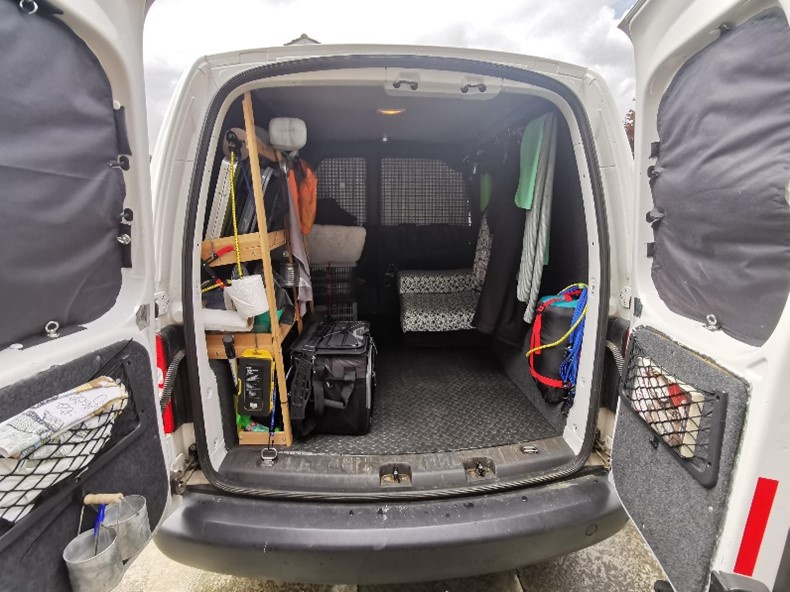
21 June 2022
- Heather Branigan
-
Lecturer (Scholarship) Psychology
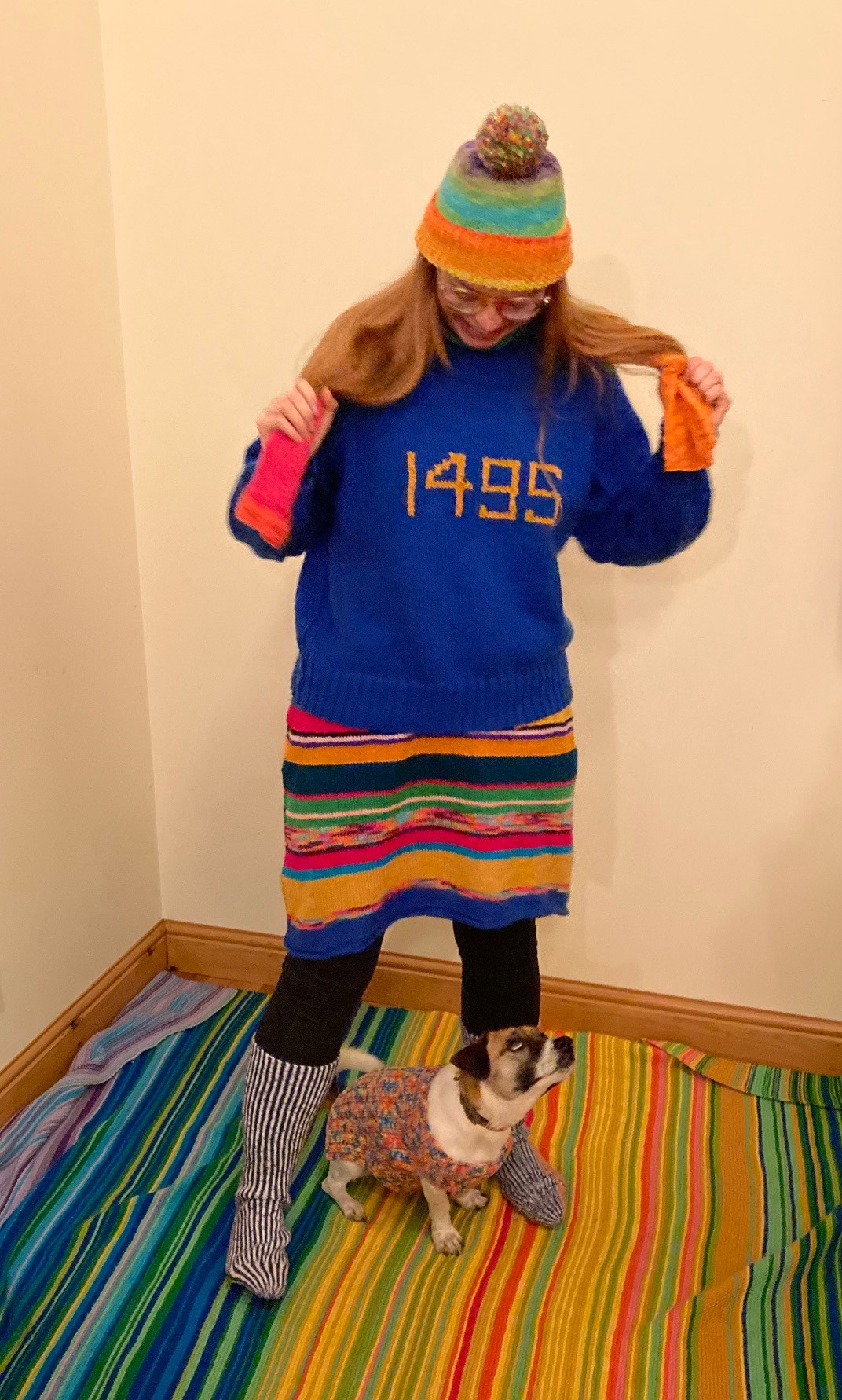
This of course means that people can't escape my sometimes wonky gifts. One of my first ideas was a tea towel with a crochet hanging loop to attach it to cupboard handles. I merrily sent this to several people for Christmas 2020, and only a few people were brave enough to message “thank you so much… what is it!?” I like to think I have improved a little since then, but as a self-confessed 'lazy knitter', I have to deal with the consequences of the occasional jumper that is much too large, or the bear that looks more like a mouse/rat…
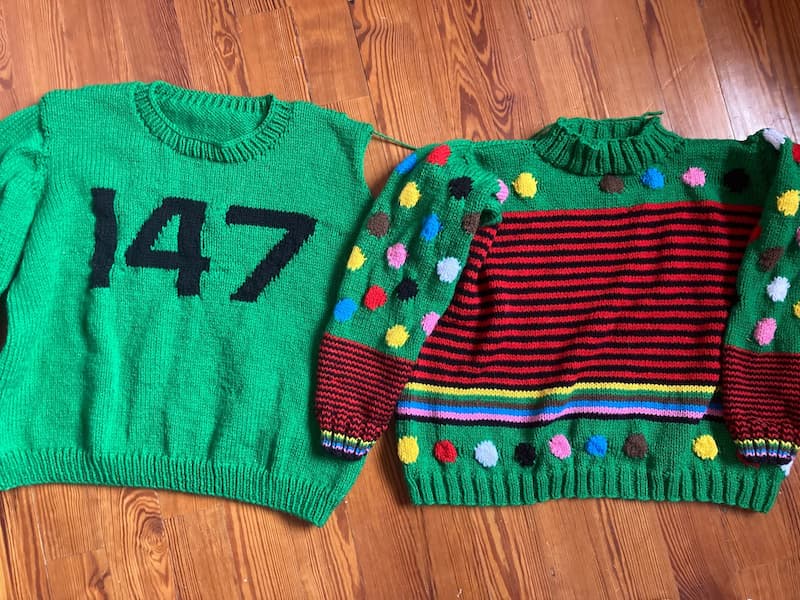
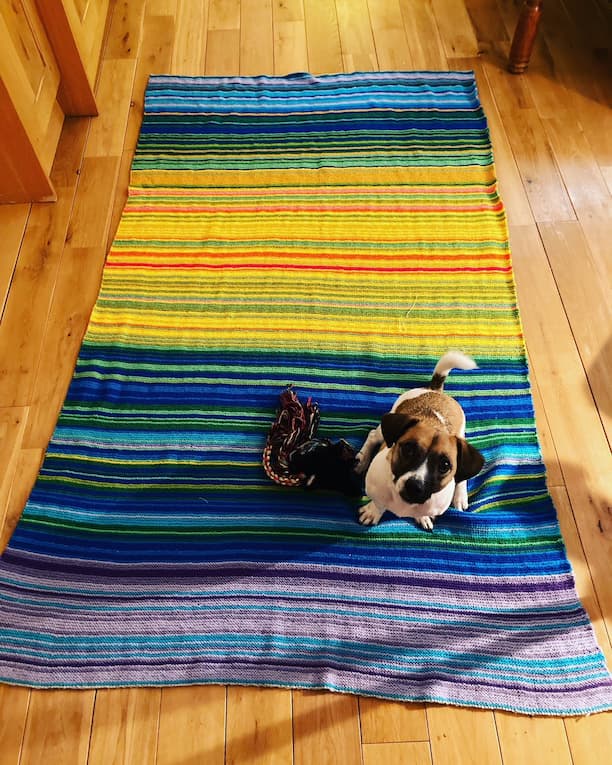
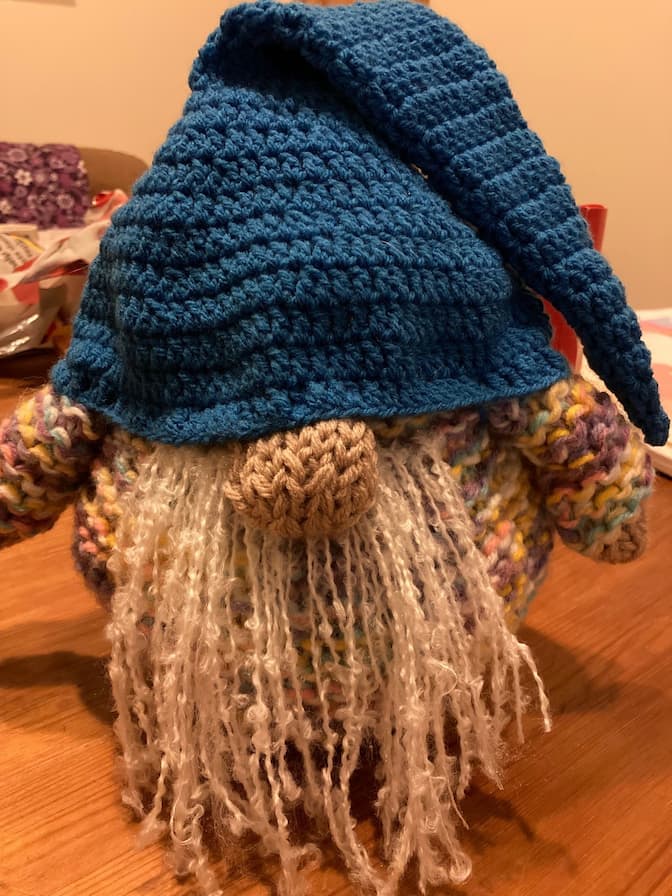
21 April 2022
- Helen Galley
-
Professor of Anaesthesia and Intensive Care, School of Medicine, Medical Sciences and Nutrition
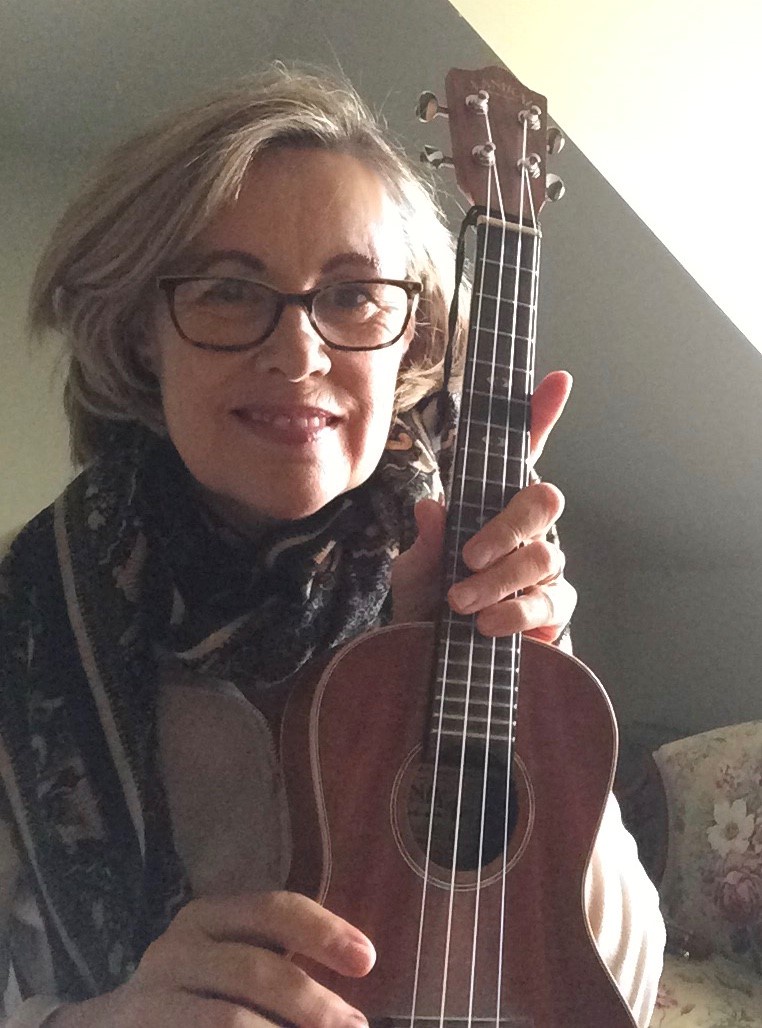
She learned to play piano as a child and has also played trumpet, trombone and guitar. Helen took up the flute in her late thirties and had lessons for 10 years, progressing through the grades. Helen's husband obviously thought she needed a new musical challenge however, as in 2014, he bought her a ukulele.
Helen now has four ukes (two concerts, a soprano and a banjolele) and performs with the North East Ukes (NEukes) as well as dabbling with song-writing. The NEukes play at care homes (before COVID) and various festivals and are taking part in the charity event, 'Famous For Five Minutes', next month.
Helen tells us that playing the uke is fairly straightforward and having only four strings, the chords are easier than a guitar. She confesses that she is not a gifted singer but loves to strum her uke and sing along, particularly with others. She teaches adult beginners - if anyone is interested, you can reach her on ukeattheyurt@gmail.com .
As Helen says: “There is nothing more uplifting than making music together!”
Meanwhile there are videos of Helen playing three of her ukes - including one of her own compositions, on You Tube: Uke at the yurt - YouTube
14 April 2022
- Lynne Hocking-Mennie
-
Project Manager in Medical Genetics
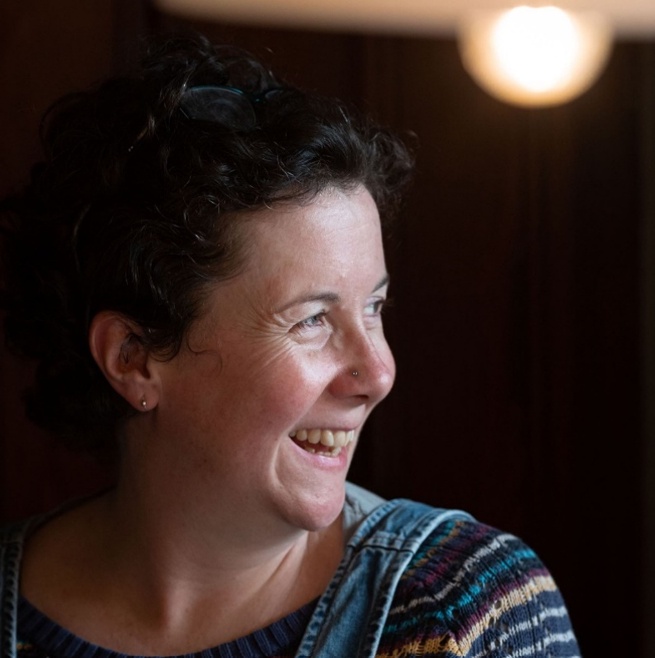
Science through expression - the abstract represented in the physical. Grant-winning weaver and genetics expert Lynne Hocking-Mennie lets us know about how she creates beautiful textiles and weaves in concepts of genetics and ancestry to her applied craft.
Lynne Hocking-Mennie works part-time for the University. She previously worked as a research scientist in human genetics, as well as studying here.
She took voluntary severance from an academic post in 2015 - and used this to travel around the world with her family. During this journey, Lynne rekindled her life-long interest in handmade textiles and learned to weave using a backstrap loom.
Upon returning to Scotland, she carried on learning her craft, started weaving using shaft looms and developed her studio practice incorporating data into handwoven textiles. She also discovered her ancestors' involvement with weaving in NE Scotland, which spans at least seven generations.

Lynne's work showcases the spinning and weaving skills that were once prevalent in the north-east. These skills were used to craft utilitarian fabrics that were necessary for economic success. These fabrics rarely appears in museum or gallery collections - and never on their own merit.
The skills for creating these fabrics were passed down between generations, including among Lynne's family. These skills were deeply rooted in local knowledge and had a strong connection to place.
Lynne's work seeks to explore the value we place on such ancestral/inherited skills and knowledge in contemporary society.
An exhibition featuring Lynne's work as well as all the other winning commissions is on display now at Aberdeen Art Gallery - with free entry. This exhibition will be running until 6 March.
University affiliates Joe Stollery (Music), Jo Gilbert (Elphinstone Institute) and Lise Bos (Marischal Museum) also feature in the exhibition
10 February 2022
2021
- Euan Wemyss
-
Communications Officer, Directorate of External Relations
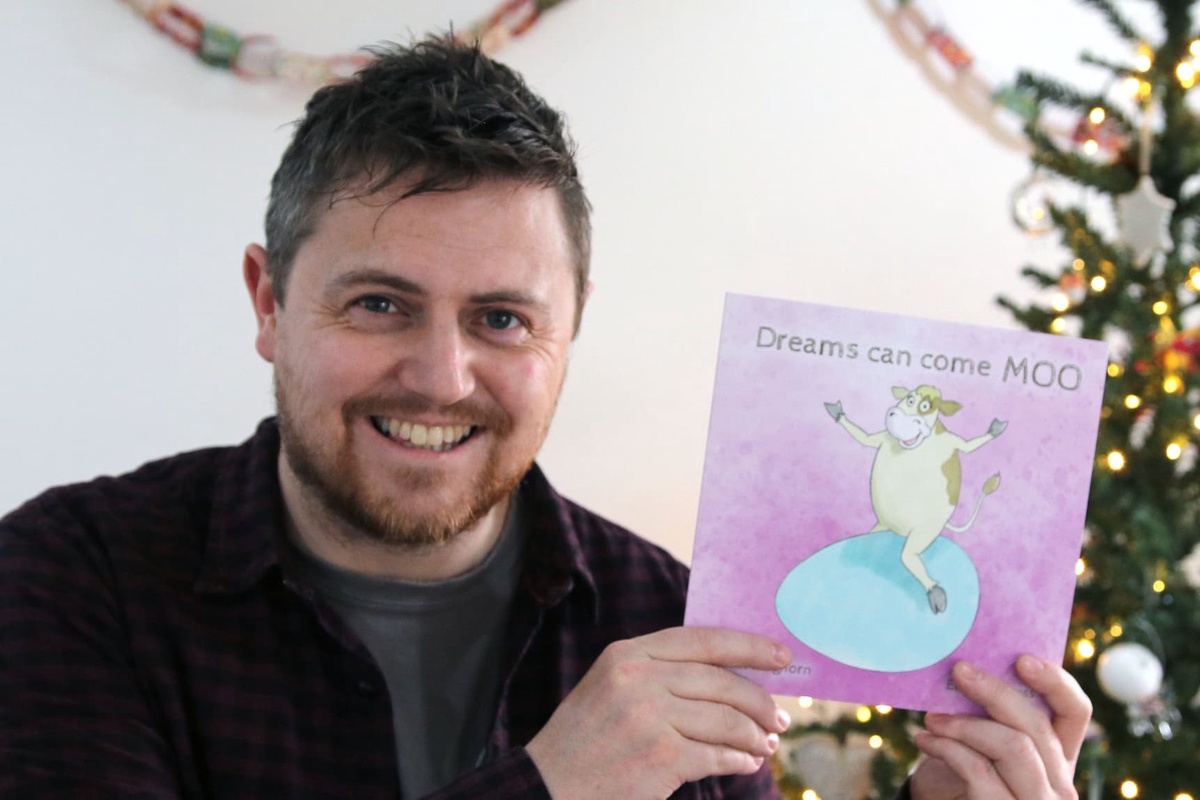
During the first lockdown in 2020 my friend Matt Kinghorn, who is an enthusiastic writer and poet, asked me if I would do some drawings to illustrate a humorous children's story he'd written about a family of bears adjusting to life at home during the pandemic.
A video of him reading the story, accompanied by my sketches , racked up about 12,000 views in a few days and was picked up in the newspaper and folk were asking where they could buy the book. Of course, there was no actual book but it got us thinking.
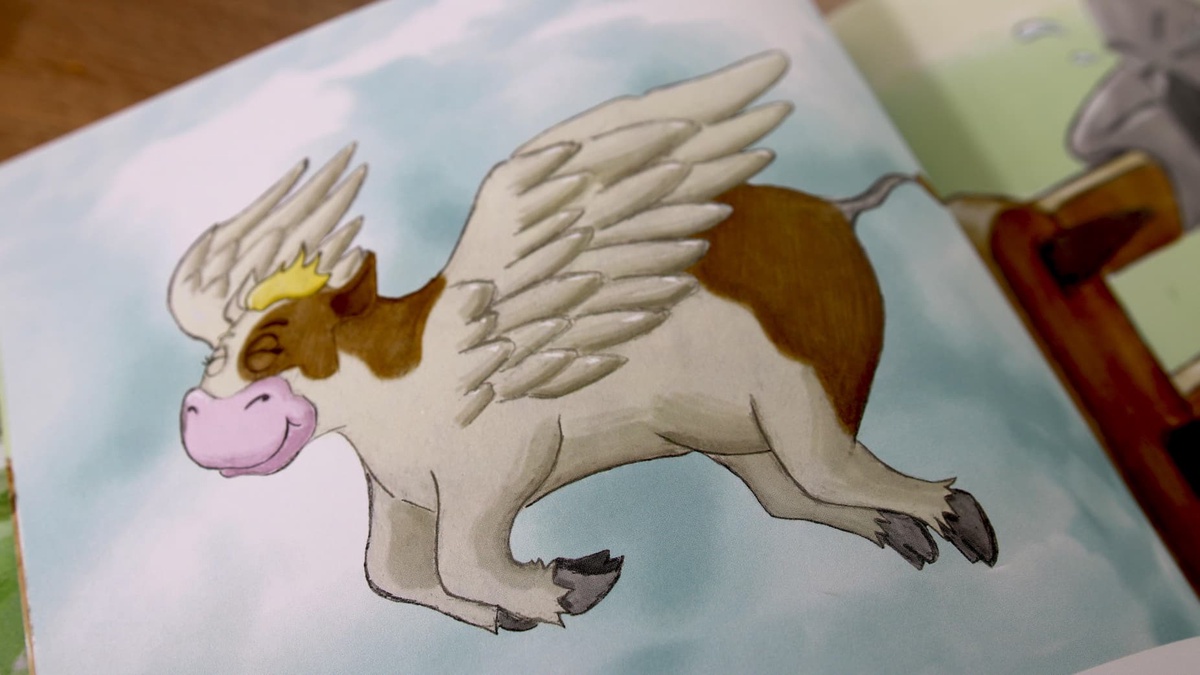
The illustrations were eventually completed but creating a book, we soon realised, is not as easy as writing some words and drawing some pictures. We were soon up to our necks in paper weight and 'bleed sizes' and working out how to get the thing printed. The whole process was a steep learning curve.
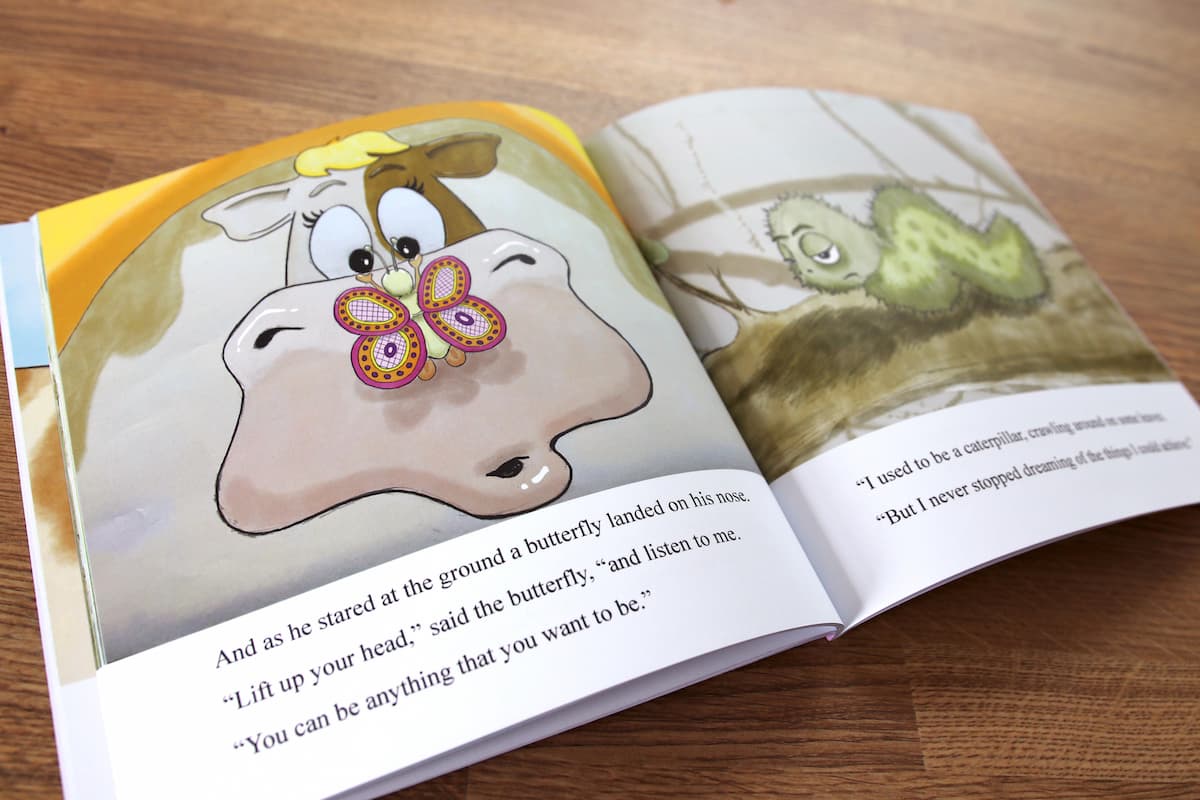
As it turns out, we've now sold about 500 copies and still going strong. The support has been absolutely unbelievable. We've had messages and videos and pics from so many people that have brought tears to my eyes. Matt went into his daughters' school/nursery and ran a wee poetry workshop with them, and the music teacher had written a song about the book - they were all stomping about the gym hall singing it. They wrote a poem together and I did some pictures to accompany it and we sent it back to the school.
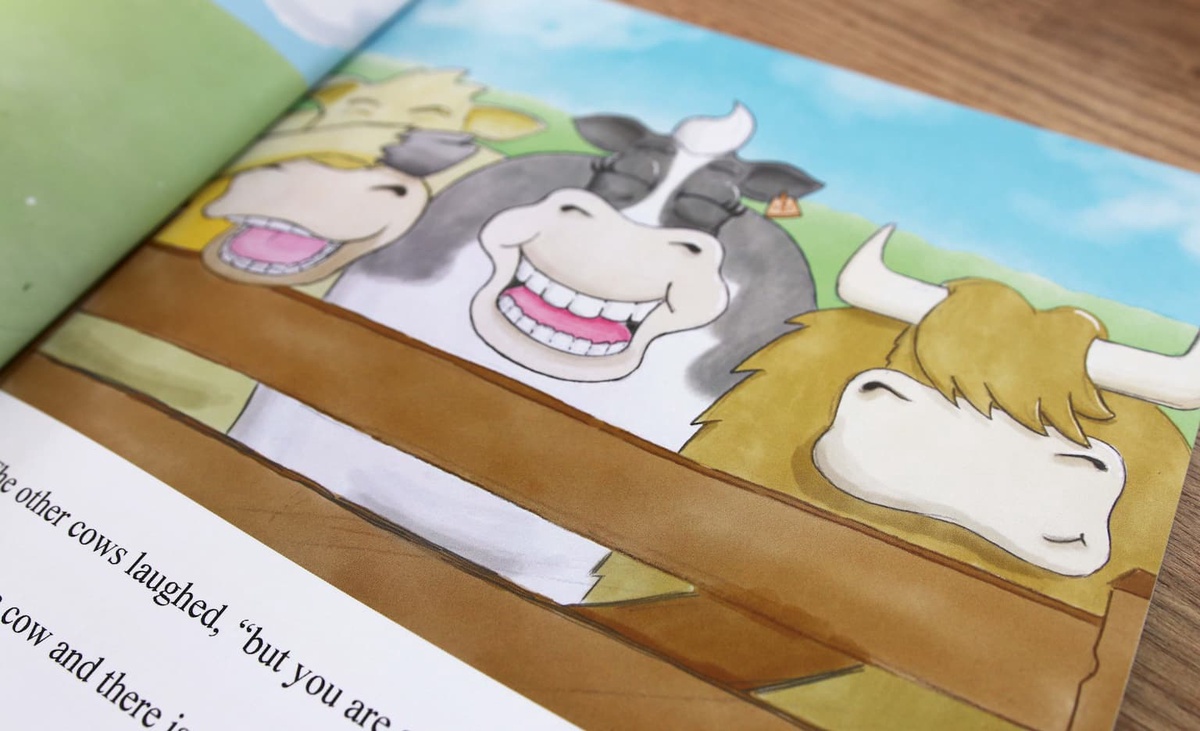
I realise 'guy who develops hobby during covid' is hardly story of the century, but for me it's reawakened a part of me that I guess I thought was in the past. I find it very therapeutic, and there's nothing better than creating something new and sharing it with the world. And to hear people tell us that it's brought them joy, or a moment between them and their kid or grandkid - what could be better than that? I'm not expecting Ladybird books to be on the blower anytime soon, but Matt and I have already decided this book won't be our last.
Follow the story of the development of Dreams Can Come Moo on Euan and Matt's Facebook page and the book can be purchased on the Dreams Can Come Moo website .
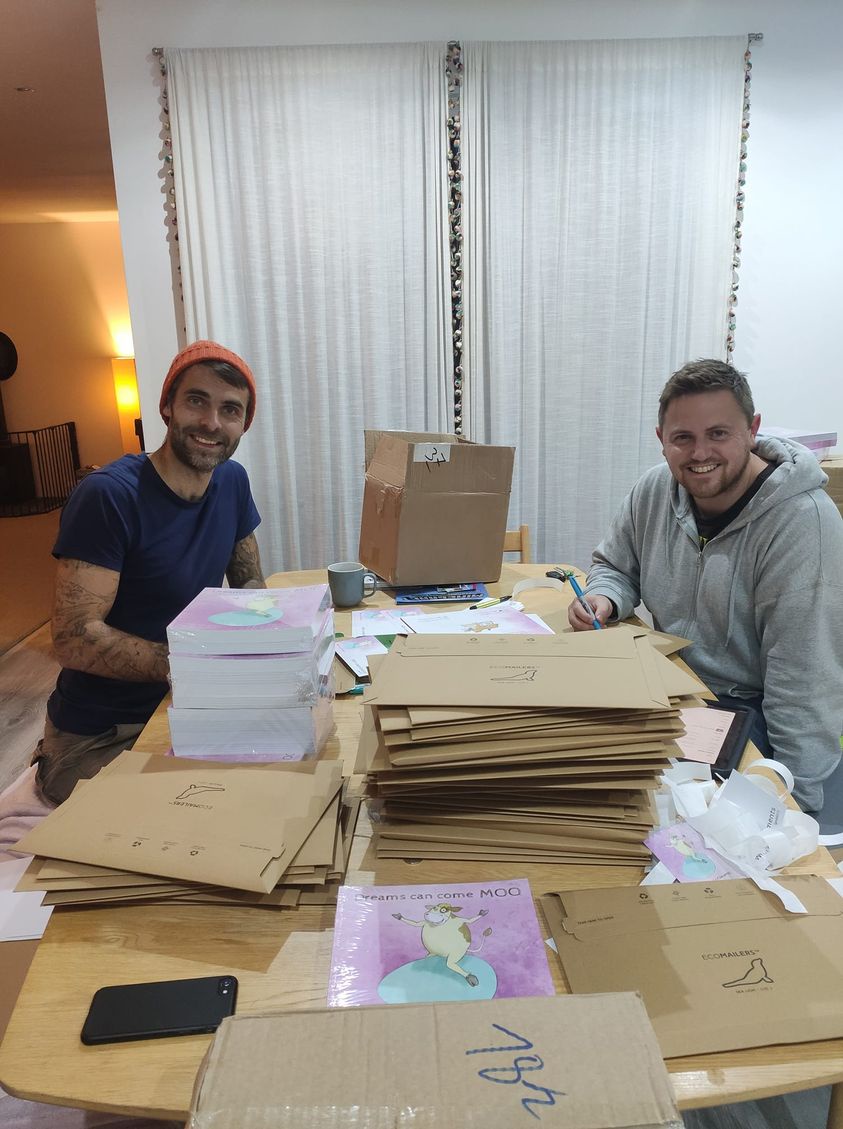
09 February 2021
- Martin Fraser
-
Data Centre and Problem Manager
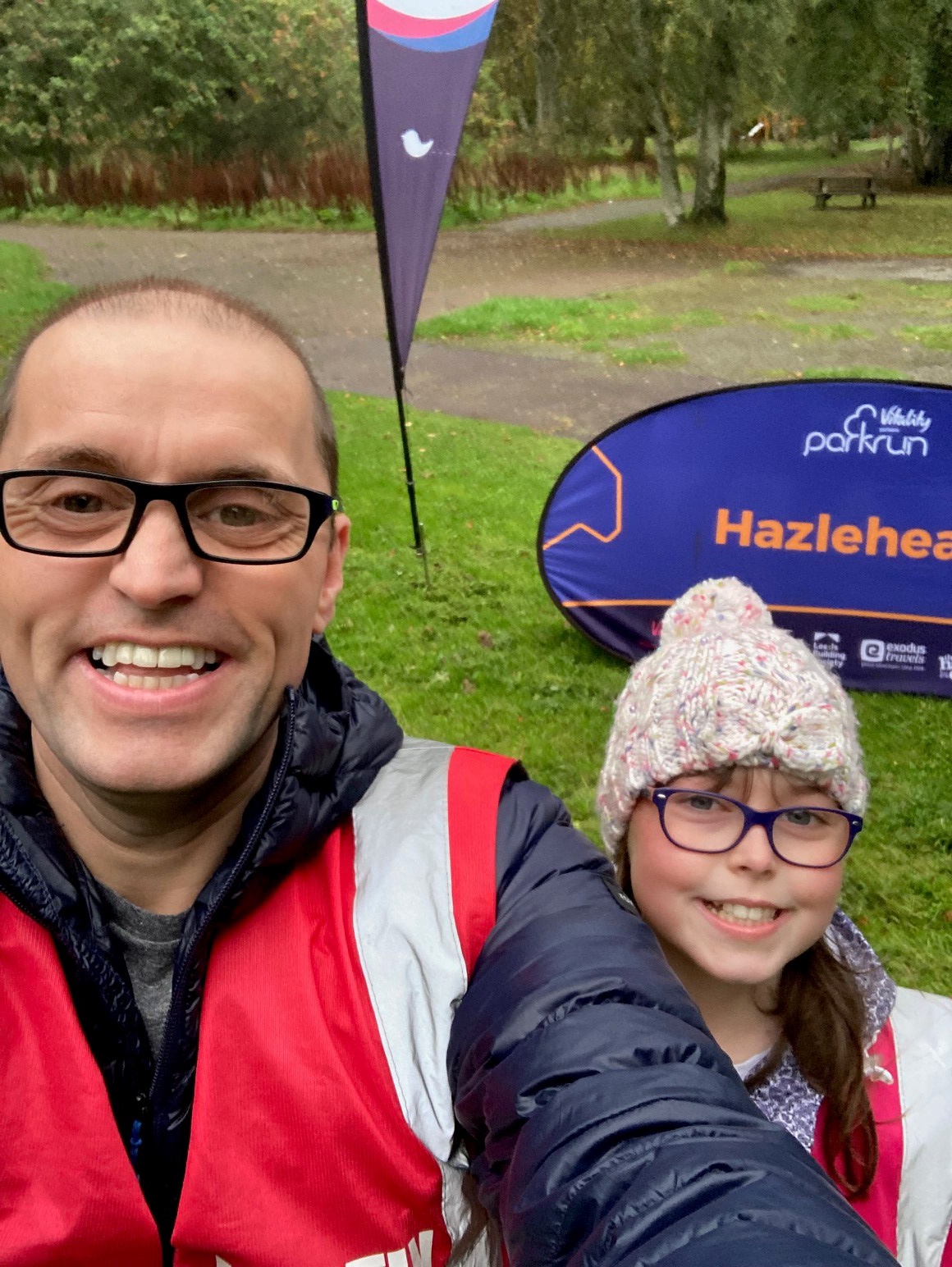
During the 10 years of parkrun in Aberdeen the combined events have welcomed over 20,000 runners and 2,000 volunteers.
I am a keen marathon runner though not particularly quick. I was injured in summer 2010 and listened to a podcast called Marathon Talk that discussed parkrun in one of the episodes.
At that time there were only two parkruns in Scotland: one in Edinburgh and one in Glasgow. I contacted parkrun to see about starting a new event in Aberdeen. A local GP, Jamie Cassidy, had contacted parkrun before me and together we planned and started Aberdeen parkrun.
My highlights are always spending time with friends and family. I have met so many people through organising parkrun for the past 10 years. Far and away my highlight, almost every week, is running or volunteering at parkrun with my 10 year old daughter Holly.
Holly was the first child to complete parkrun in Aberdeen. I pushed Holly round in her buggy at Aberdeen Beach while measuring the original route for Aberdeen parkrun.
I am the only one of the original Run Directors in Aberdeen to still be acting as a Run Director at parkrun. I've volunteered on 170 separate occasions and ran parkrun 270 times as well.
- Mary Cane
-
Research Postgraduate, School of Language, Literature, Music and Visual Culture
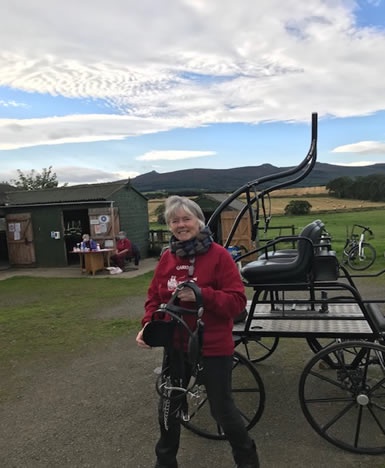
My youth was spent on a Cornish farm, building skills through the chores associated with fields, cows, milk, eggs, muck, grass, straw, and hay. The four things I grew to have a particular affinity with, were wildflowers, ponies, performance and making things. Three of these things were encouraged at home by my mother who was a natural academic. She taught me the rudiments of botany, and organised lessons for me with pony and piano.
The language of music made no sense to me, and the instrument became furniture and then firewood, but my pony riding was a joy. I loved the whole sensory, companionable thrill of being transported, whilst being challenged by our two wills meeting. The exquisite feeling of making something for the first time has stayed with me.
Those early interests have stayed with me for sixty years and riding ponies led to a pony loving daughter, and the Aberdeenshire Pony Club. Having learned the sport of carriage driving I have been the self-appointed creative co-ordinator for more than thirty years with the Garioch Carriage Driving for the Disabled Group. We meet twice a week at Strathorn Farm near Pitcaple, come along it's fun!
The group provides opportunities for people with additional needs to learn the sport of carriage driving. We have an annual themed fun day, where I have worn a gorilla mask over my helmet and on a 'cartoon day' dressed up as Tin Tin. Our group has slicked back their hair for 'Grease', thrown cardboard horseshoes for 'Annie get your Gun', worn miniskirts over riding kit for a 1960's day and brought out the broad swords for 'Outlander'.
In the group I also like to share my knowledge of the history and the folklore of the area. In one session, with The Lady 'o Bennachie, or Mither Tap as a backdrop, I talked about the history of blinkers, before taking up the whip and reins to go round the farm with four of our drivers.
The name 'Blinkers', or 'winkers' comes from slang words for eyes. They prevent a horse from being distracted or alarmed by what's going on behind the shafts. As far back as the ancient Egyptians, we humans have deprived horses of their ability to see behind them, all the better to take advantage of their strength and willingness. 'A blinkered attitude' is a slang term for having a narrow or limited outlook. Good for our carriage horses, not at all good for a university!
04 October 2021
- Ann Murray
-
Systems Administrator
For as long as I can remember I have loved both listening to and playing music! As I got older and more involved, I realised I loved the social aspect of playing in brass bands almost as much as the music itself.
I was lucky enough to have a great music department at Kincorth Academy, where I took Cornet lessons which helped grow my passion and I enjoyed being part of various choirs, Kincorth Waits Early Music Group and Aberdeen City Schools Brass Band, Bon-Accord B Band, and then the Bon-Accord Silver Band.
There have been so many highlights, too many to mention, but I guess a few of the most memorable would be performing in the School Proms with the Kincorth Waits, which was my first time playing in the Royal Albert Hall. Our tour of Russia with Kincorth Waits, and with Bon-Accord Silver Band, are also some special moments, again playing in the Royal Albert Hall, tours of Regensburg, Dublin, Orkney and Shetland. I was also very proud to represent Scotland in the European Brass Band championships with them in Linz.
I am very much looking forward to representing Scotland in the National Brass Band Championships in the Royal Albert Hall in October with the Bon-Accord Silver Band, along with fellow University colleague's Dr David Cooper from Medical Education and Dr Fiona Saunders from the IMS.
I am currently Vice President of the Scottish Brass Band Association, the parent organisation of Brass Bands in Scotland and the National Youth Brass Band of Scotland, and I am passionate about encouraging other people, young people in particular, to get into music - I can't recommend it enough.
Bon-Accord Silver Band does various concerts throughout the year, and we have recently started an annual charity Film Theme concert, where the proceeds go to local charities. I would love to encourage everyone to come along to either play or come listen to our concerts, you can find out more info here .
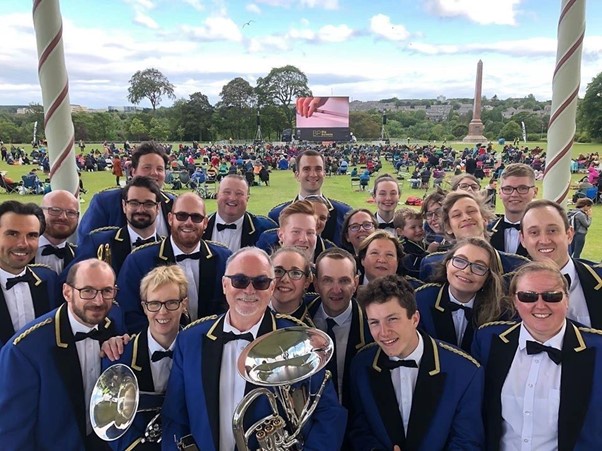
23 September 2021
- Paul Fowler
-
Director of the Institute of Medical Sciences, Professor of Translational Medical Sciences
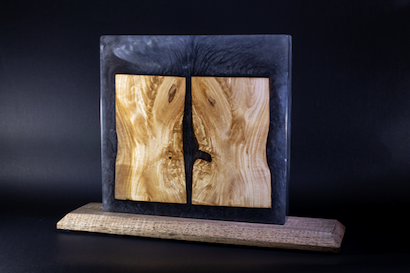
My hobby is combining wood and resin for furniture and art pieces. I have done a fair bit of DIY and find it very boring, but making furniture or other practical pieces, right up to the scale of decking, has long been a pleasure and a challenge.
During Covid lockdown in spring/summer 2020, with my partner, Kathy Fowler (retired Deputy Director of the Aberdeen Energy Institute, UoA), we first experimented with resin, specifically to make a house sign for our daughter. We used oak and our first try with epoxy resin. Learning from our mistake we were soon experimenting with a wide range of projects and building our skills with resin and what did, or did not, work with hardwoods.
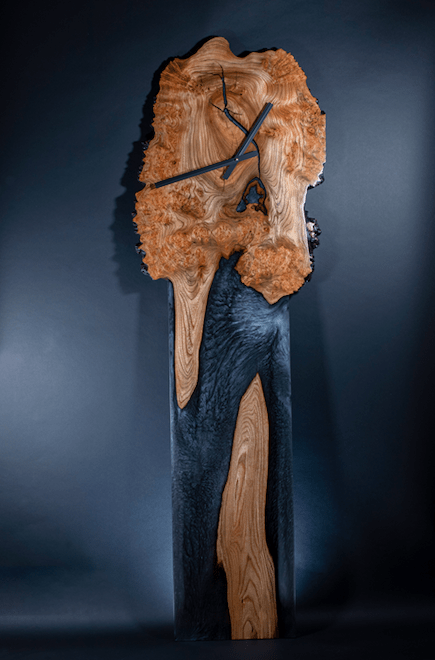
Our favourite piece is a clock made from a large elm burr where we worked to stabilise the cracks and fragile trunk part, with epoxy resin coloured with smoky grey metallic pigment. Part of this is all down to the wood itself, the burr is gorgeously figured and when oiled came up beautifully.
Not realising that gold glitter sinks to the bottom of the resin and finding, the following morning, that rich gold letters had become semi-transparent with only a faint gold glitter was a revelation. We have made a lot of mistakes along the way and can also confirm that resin unfortunately sticks far too well to melamine from a local DIY supplier! Several hours of corrective work ensued before the yew coffee table was back on track.
Our current project is a spalted beech half-cookie that is slowly becoming “The Monkey-face Clock” (don't ask which is which).

16 September 2021
- Nicola Brand
-
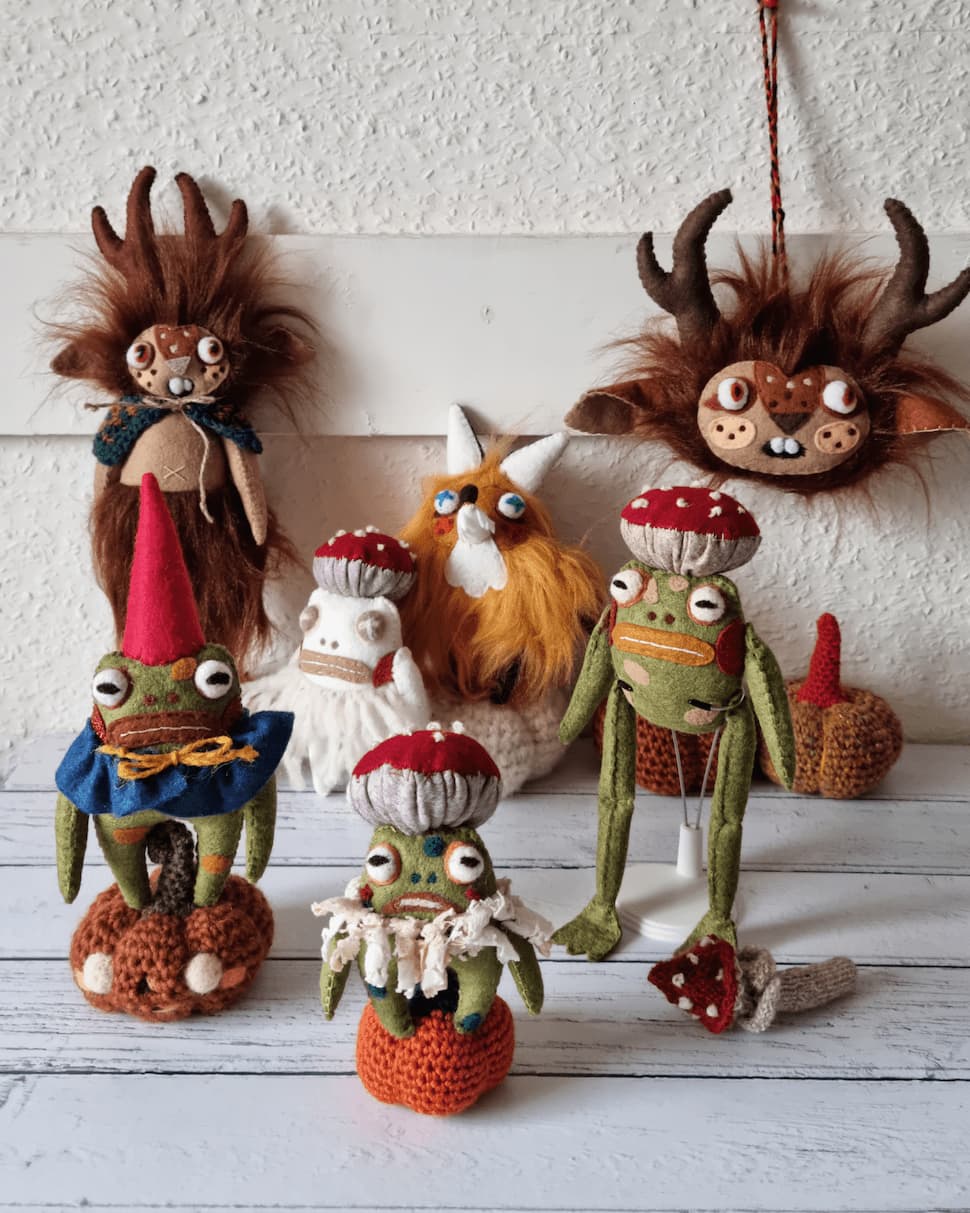
I've always been creative and have been designing bespoke dolls and custom illustrations for a number of years, but I never really dedicated enough time to it, before eventually just stopping for a while.
During the 2020 lockdown, however, and finding the urge to create something tactile with my hands, I started creating fibre creatures again, and haven't stopped since! It got to a point where I ran out of space in my living room to keep up with the demand, and so I invested in a studio space in the city centre, where I now do my creative practice.
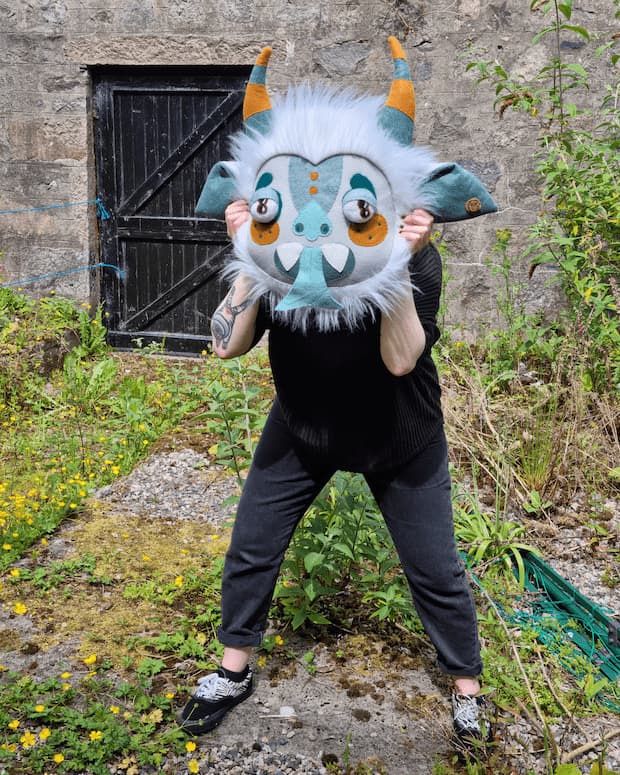
The spooky season is generally my time to shine, so over the next few months I'm looking forward to creating and launching this year's Halloween plushie collection, including my infamous fibre pumpkins, which traditionally pop up for sale at my local café, Cult of Coffee!
26 August 2021
- Mark Paterson
-
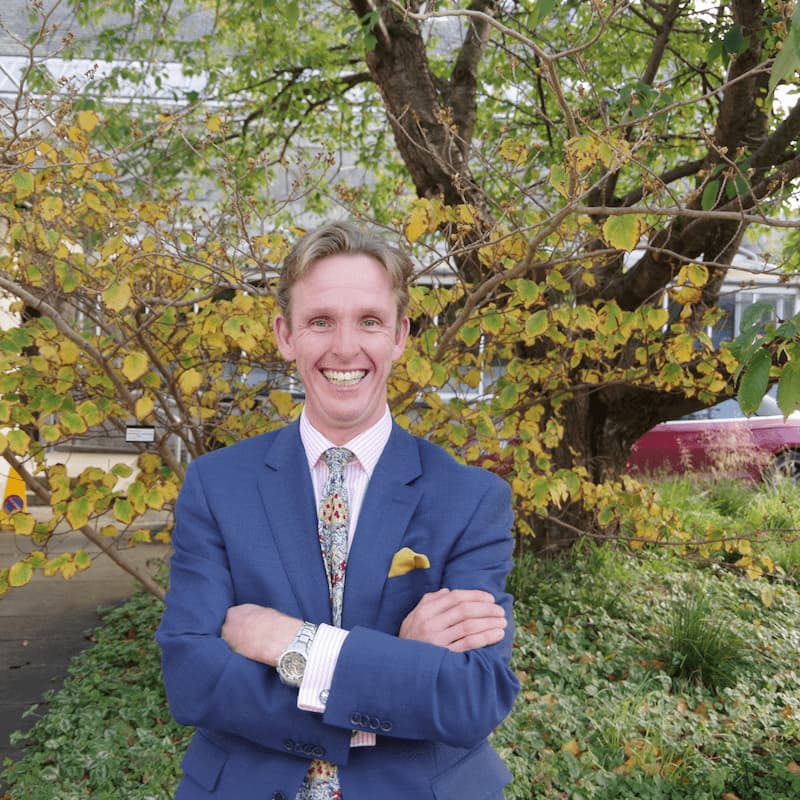
From the age of 16 I have volunteered my time as a first-aider. Initially, I was a member of my local St John Ambulance brigade in southern Ontario, Canada. Upon reflection I think it extraordinary - long before mobile phones - I was working solo (among other events) at weekend ice hockey competitions to patch up players and the audience. A hockey puck (at the best of times) is an unforgiving projectile.
I have always known my cerebral palsy has necessitated driving an adapted car. Driving an ambulance was never going to be an option any more than a paramedic career. However, over the past 34 years in various parts of the world I have always volunteered my time to work with local brigades of St John Ambulance or the Red Cross to provide care to citizens at public events. Voluntary assistance to supplement emergency services has a long history. In giving my time I have had the privilege to work at major music concerts, national engagements and numerous sporting events - both professional and amateur.
Since 2016, I have once again found the time to volunteer as a first-aider. I am now a CFR - Community First Responder - with the Inverurie division. All First Responders are volunteers and are initially trained by the Scottish Ambulance Service (SAS). Thereafter, at divisional level we train each month. We are collectively on call each week, giving time as we can. Some of my colleagues may be on call three or four nights per week. While the pandemic has curtailed a lot of our front-line involvement, we remain an active division and in time I hope to return to being on call one evening per week.
As often as possible, we work in teams of two. When the Inverurie First Response car is not available (I navigate, my colleague drives) we use our own vehicles to get to the scene. From Inverurie we operate within a 20-mile radius. As per our designation of 'first response', having received a call from the Ambulance Central Call Centre we endeavour to get to the scene before the ambulance/paramedic crew. Often, the crew are only minutes away, but we know we may have to maintain the scene for lengthy periods prior to additional help and hand-over to the SAS. Depending on the severity of the incident, it is not uncommon to provide ongoing assistance to the ambulance team.
We train, carry, and use crucial life-saving equipment to work with patients of all ages, with a focus on adults. We always work alongside the Scottish Ambulance crews and they in turn are content to have us watch and learn from them in real time. Frequently we have a SAS colleague from the Inverurie or Aberdeen City depot provide additional focussed monthly training. The comradeship within our brigade and across the SAS is superb - we all look out for each other. If we need to talk-through any distressing situations we have been to - be it hours or weeks later - there is always a colleague at immediate hand.
To be able to give something back to one's community is a privilege. To be able to be trained in life-saving techniques and associated care that can be used anytime, anywhere, continues to be humbling and satisfying.
19 August 2021
- Susan McBain
-
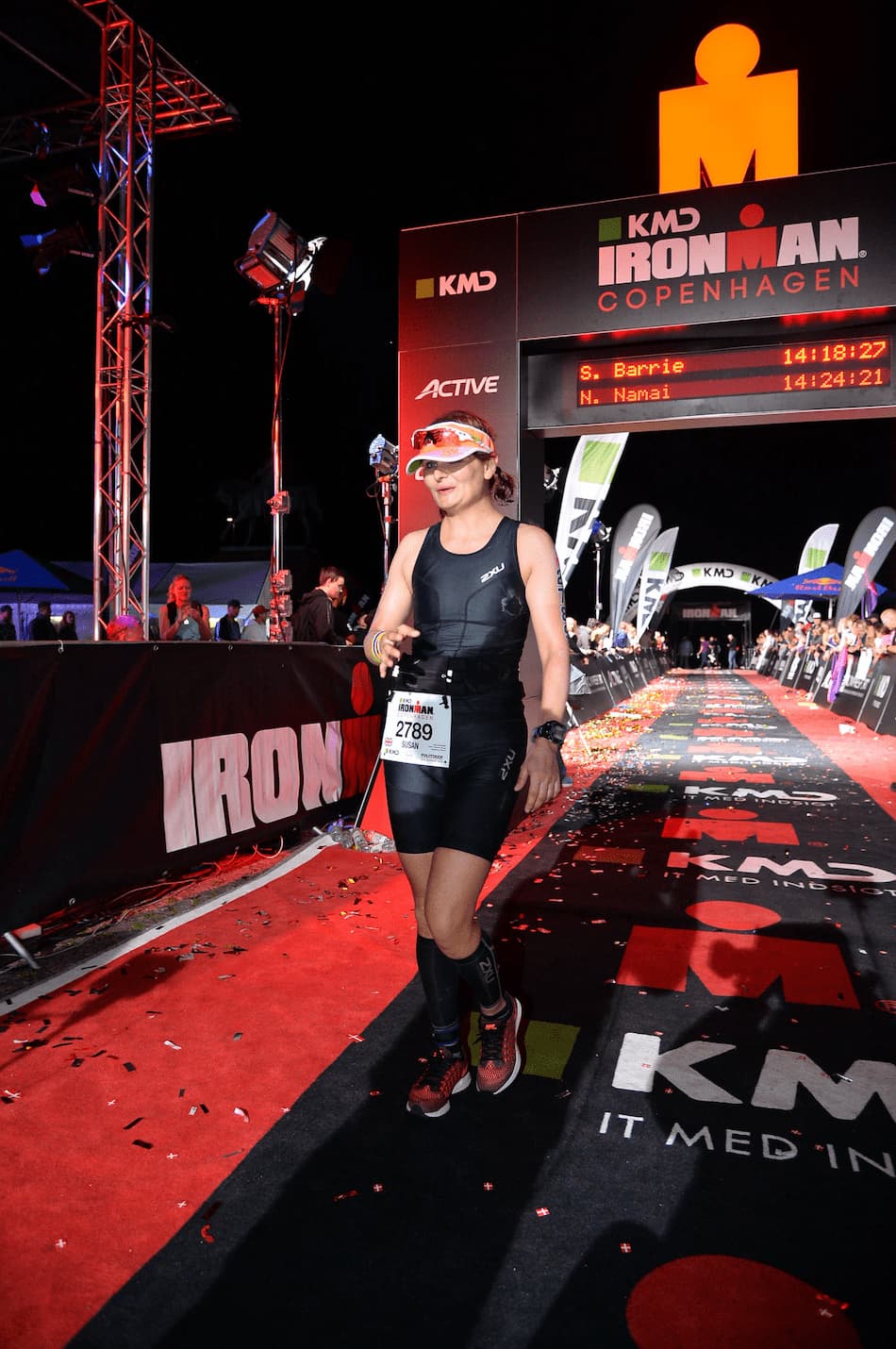
My passion for triathlon happened overnight. Back in 2009 I was your typical 'gym rat', going to the gym, lifting weights with no real purpose other than getting fit and burning calories. The same year, I met my now husband who was training for his first Ironman in Bolton. An Ironman consists of a 2.4 mile swim, 112 mile bike and a 26.2 mile marathon run, done back to back with no rest, within a strict 17 hour cut off.
I was intrigued, but it wasn't until I stood at the finish line that year waiting for him to become an Ironman, that I was sucked in. I stood there for a couple of hours watching all the competitors cross the finish line, some limping, some dancing and many crying happy tears. I was particularly mesmerised when the women, who typically account for only 10 - 15% of an Ironman field, came down the finisher's chute. The spectators gave them such an enormous cheer. I thought, wow! These women are incredible. I had so much respect for them. I thought - THIS is what I want to do.
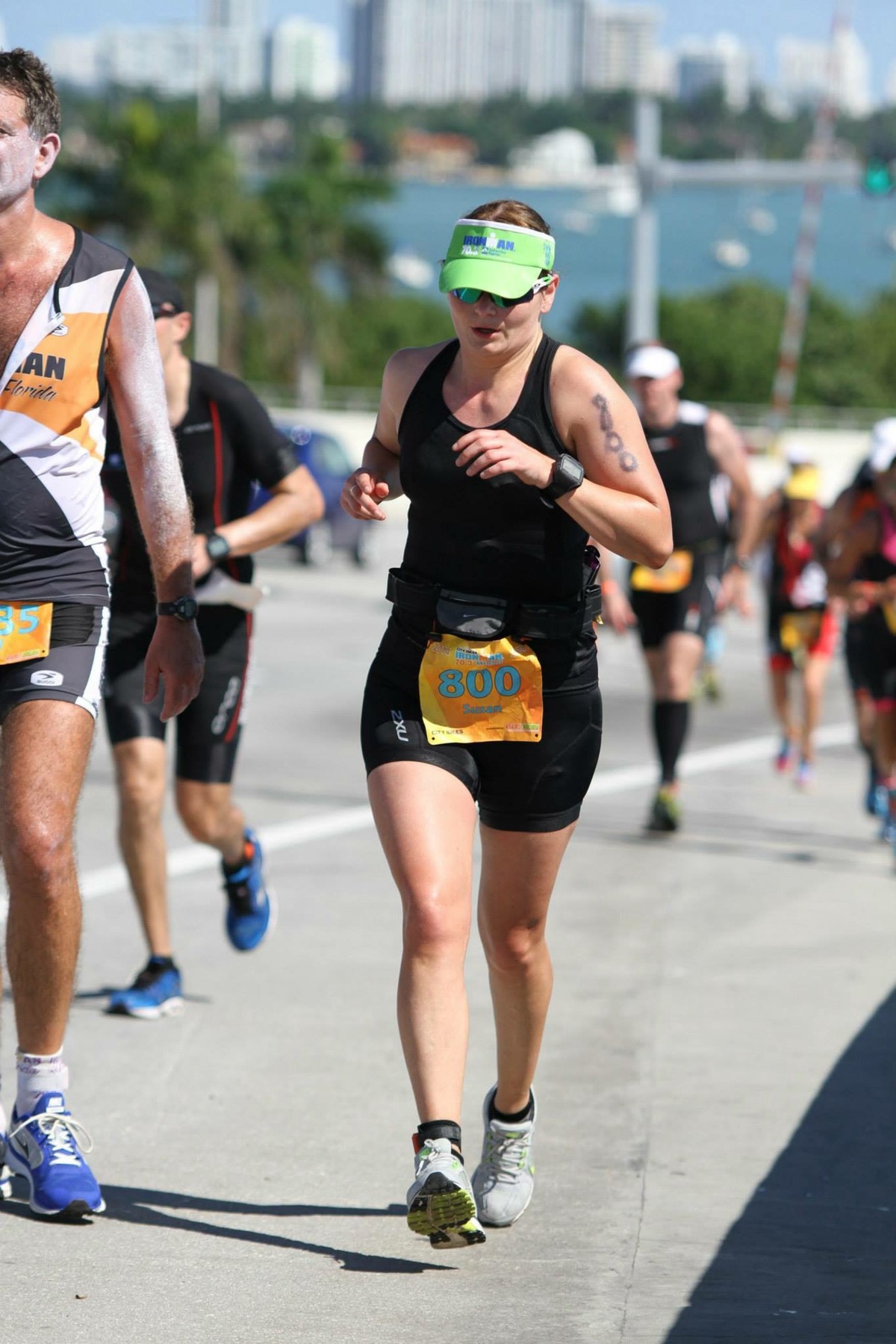
My highlight must be achieving my first Ironman in Copenhagen. It's hard to put into words what it felt like to achieve it after years of setting my heart on it. There was so much elation, relief, euphoria, and just overwhelming emotion as the announcer finally said, “You are an Ironman”. Even the announcer pronouncing my name wrong didn't spoil the moment! I recall sitting on the train returning to the hotel after the race. It was full of other finishers, sitting quietly and tired with their medals on. It really hit home at that point that all the effort and training, ups and downs over the last six years had been worth it.
It is just a race at the end of the day but watching everyone complete an endurance event like Ironman makes you realise everyone's journey is special and no matter what time everyone crosses the finish line, the individual sense of achievement, satisfaction and other emotions are the same, since everyone knows their own sacrifices, challenges and hard work to get to that point.
Triathlon at all different levels has introduced me to so many incredible athletes and friends who have inspired me. I'm very grateful that I have met so many people in triathlon who uplift and support each other. It really is such an inclusive sport.
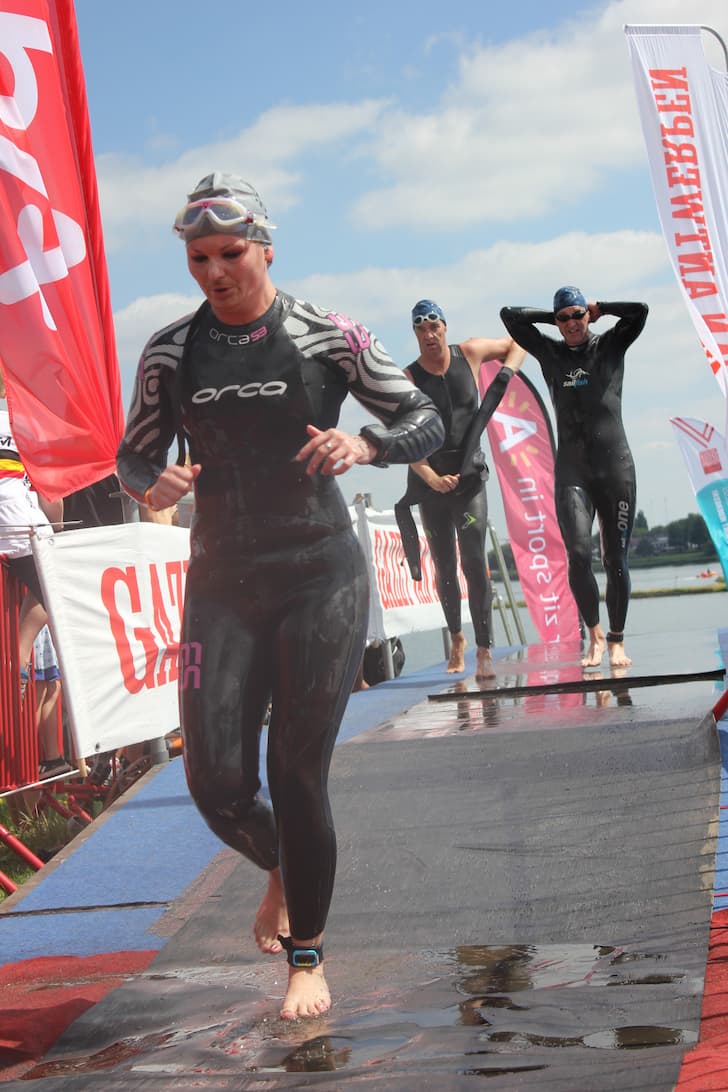
The Ironman mantra is 'Anything is Possible' and I truly believe that regardless of what someone wants to achieve, professionally or personally, if you really commit and believe in yourself, it really is possible.
15 July 2021
- Allisa Dunbar
-
Probationary Instructor with the Army Cadet Force
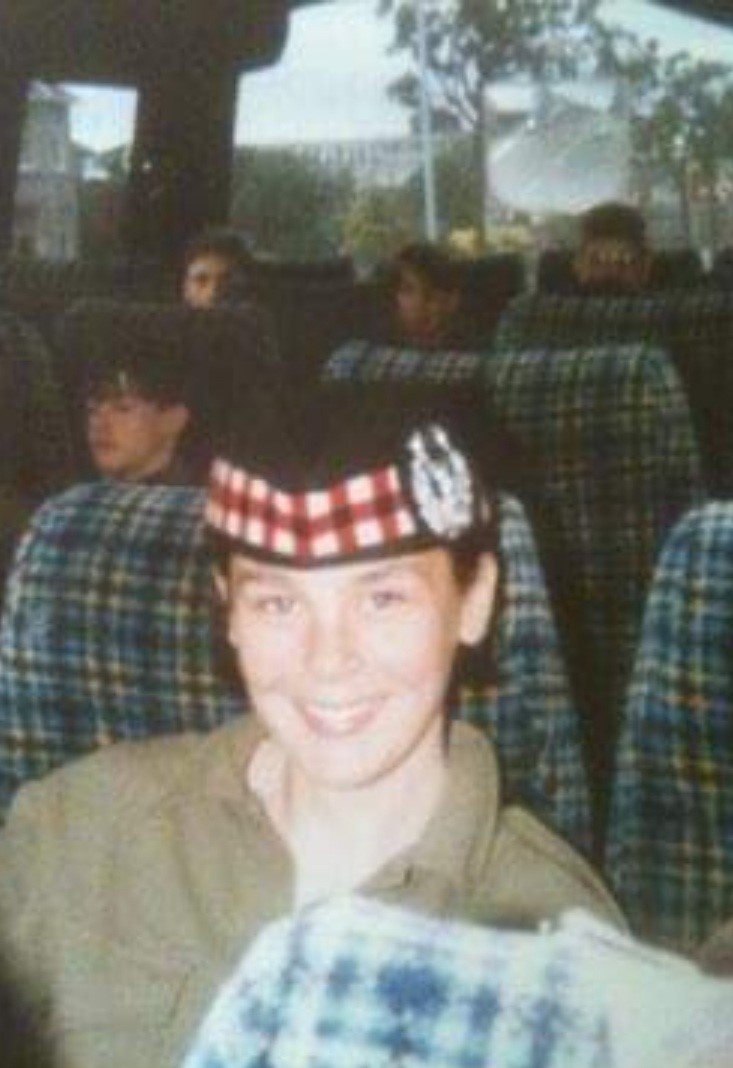
I found it highly rewarding at the time and now, some 20 plus years later, I decided I really wanted to give back to the community and give up my spare time to something I would enjoy so, with the encouragement of a fellow Adult Instructor and ex-cadet, I decided to take the leap and sign up to volunteer last November. Coming through the application process, I was assigned to Two Highlanders, Bridge of Don Detachment in May of this year.
I love it. I have met some great people and made some good friends. We have some weekends coming up which will hopefully see us back to residential training, Covid restrictions permitting. I am looking forward to progressing in my training and getting back onto the range to get my Skill at Arms instructor qualifications.
The Army Cadets plays an active role in the local community. A major part of the training for any cadet is citizenship training and the topic forms part of the Army Cadets syllabus. By participating in community projects, cadets build an understanding of how a community functions and the difference they can make now or in the future.
My first day at the detachment was a PT lesson and it had been raining for most of the day and the grass was completely soaked. Unfortunately, during a game of Grounders (Rounders but with a football), I took a spill and landed face first into the wet grass! What a way to introduce myself to my fellow adult volunteers and to the Cadets too! Two months later, it is still brought up every time we do PT.
More information on the Army Cadet Force, including how to become a Cadet or Adult Volunteer, can be found at: https://armycadets.com/
1 July 2021
- Elaina Gauthier-Mamaril
-
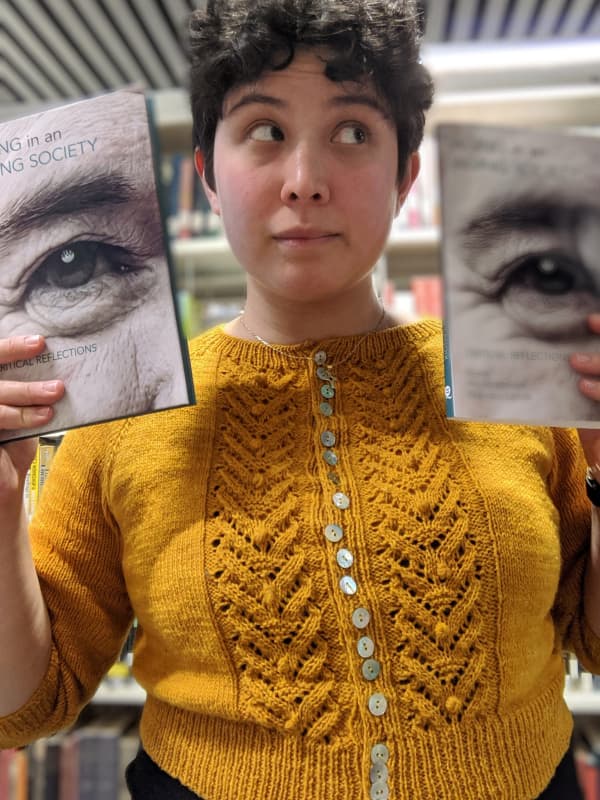
As a Filipinx, disabled, female philosopher I really wanted to help amplify the voices of other philosophers who, because of their identity or research interests, are traditionally underrepresented in the discipline.
I wanted to create an interview podcast that would allow me to talk to fascinating people and share our conversations with the world. It is important for me to let my guests talk about their own work, demonstrating that there are women (cis and trans), enbies, disabled people, and people of colour that are working in philosophy and we, as a discipline need to hold space for them. Every episode contains reading recommendations so that listeners can take the opportunity to learn more about the guest or their area of research.
I've now recorded all the interviews for Season 1 which feature topics such as the philosophy of disability, public philosophy, gender, justice, and sport, to name a few. It has been such a fantastic experience and I've spoken to so many interesting guests, that I'm already planning Season 2!
As I've been teaching myself audio editing it has definitely been a very interesting journey - once I've recorded each interview it takes me about three times their length to edit them, but I'm confident that in time it will get to be a quicker process! However, it is ultimately extremely satisfying after spending a lot of time researching each guest and their subjects, to then have a finalised podcast that we are both happy with.
My first two episodes are available now on all streaming platforms - anyone who is interested can listen to them here - I hope you enjoy them!
24 June 2021
- Chris Osbeck
-
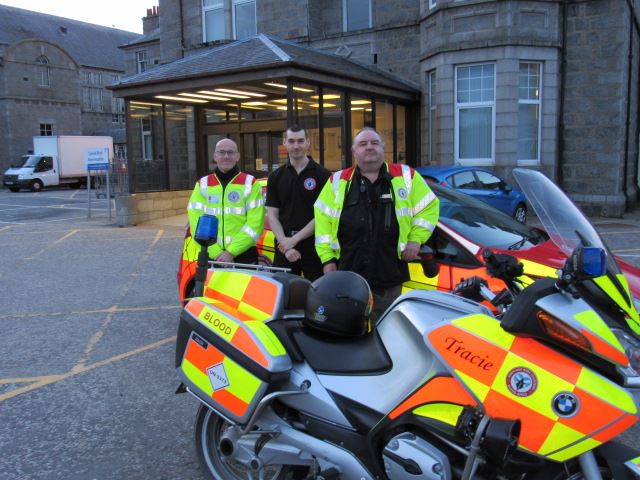
We can deliver medical samples, which can include blood, but don't transport transfusion blood in Scotland as that's all done by the Scottish National Blood Transfusion Service. All the different groups come under the umbrella of the National Association of Blood Bikers (NABB), but most groups also transport other things as needed. We've transported samples, machine parts, wheelchairs, mobility aids, food, and medication.
I've always enjoyed bikes, with or without an engine, and the sense of freedom they give, so when some fellow bikers mentioned they were trying to form a Blood Bikes group in the North-east of Scotland I saw an opportunity to do something productive while being on two wheels and volunteered. The group formed in 2016 and began live operations in 2018. Since then, we've completed thousands of jobs for the NHS and local charities.
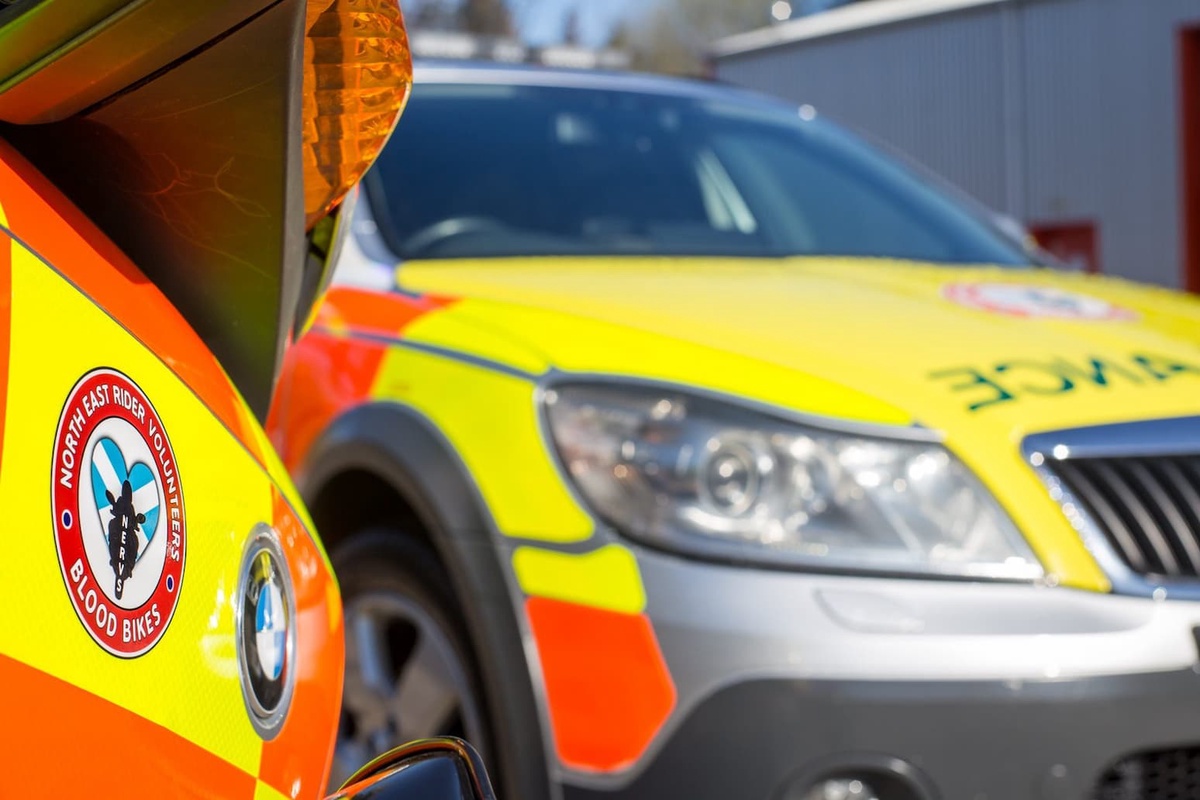
The pandemic brought many challenges for everyone, but NERVS was in a great position to increase our service to help out. Local businesses showed great generosity in loaning us their courtesy cars and fleet vans to carry out extra runs to deliver PPE and medication to those who needed it. Our pandemic workload has eased a bit now but we're still carrying out around 200 jobs and covering around 3,000 miles a month so there's still plenty of work to do.

10 June 2021
- Kate Robertson
-
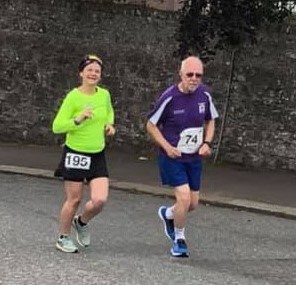
Last year, I ran 12 marathons in 12 months raising more than £6,500 for the Aberdeen Neonatal Unit. I also did a lockdown marathon round the field next to my house, running one dressed as the Queen of Hearts and another as the Statue of Liberty!
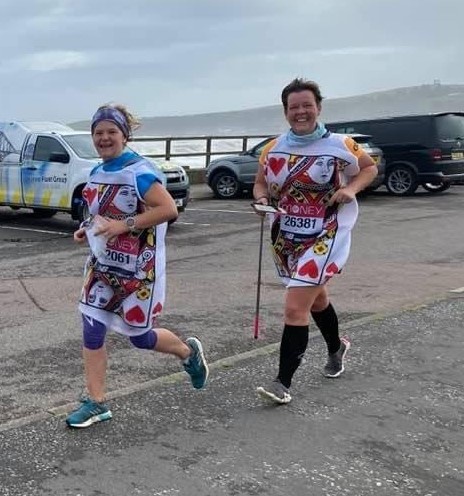
There is a beautiful tree exactly one mile from my house. It stands alone and proud with its unique shape and gorgeous views of the sea and wind turbine behind. This tree was a huge feature of 2020; I did so much running on my own from home that I saw this tree in every type of weather, including the times I couldn't see it for the haar!
I am a member of Stonehaven Running Club and normally I prefer to run with friends. Running kept me sane in 2020, and this tree was a big part of that. As a result, I have decided to visit the tree every Friday during 2021 and take its picture in a project I have called The Friday Tree. You can see January to May on YouTube. https://youtu.be/nnFMfbPCKy4
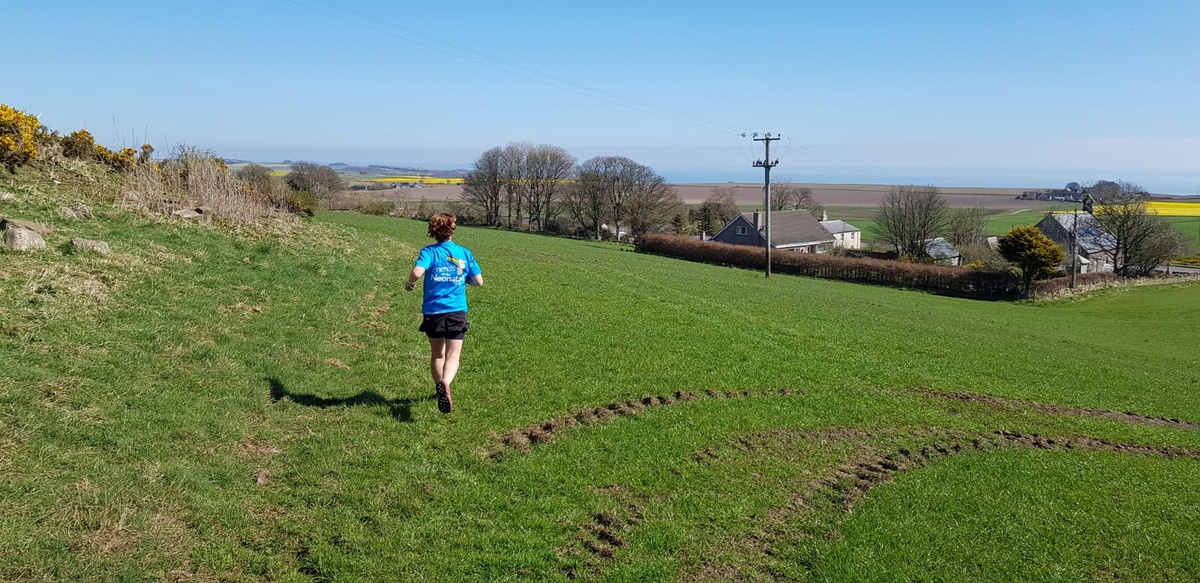
2 June 2021
- David Green
-
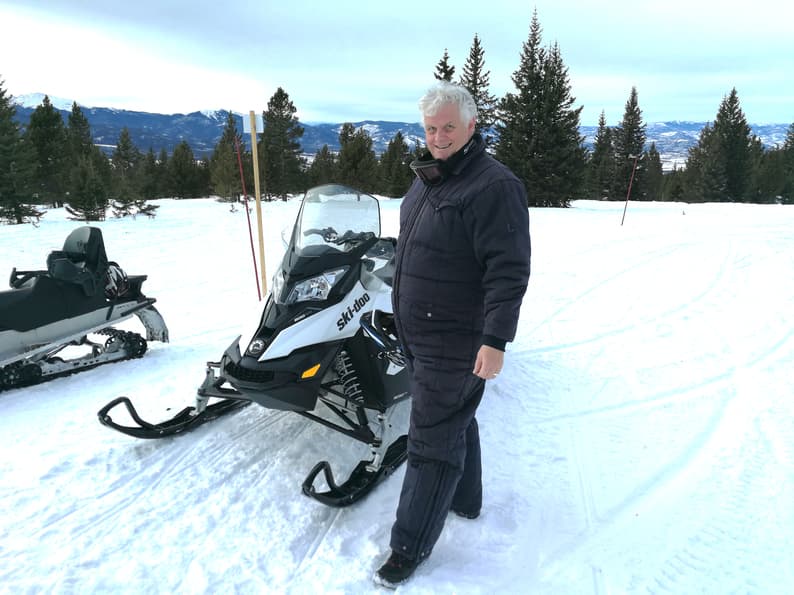
Marine and coastal litter is a significant blight on modern society, particularly at the coast, and cleaning up the environment is something we are all responsible for. To this end, EGCP's ground-breaking Turning the Plastic Tide (TTPT) project - first started in August 2018 - and funded for two years by NESFLAG - has been a major success for us and has presented significant opportunities to engage with coastal communities through beach cleans and marine litter education.
Managed by Crawford Paris (a double graduate of the University of Aberdeen) this project has continued beyond the initial two years with the help of further funding and EGCP has now also established the Aberdeen City Litter Project. Some of the more recent notable achievements of the TTPT project between August 2018 and September 2020 are:
- 67 beach clean/litter pick events;
- Engaged with 2,500 beach clean volunteers;
- Established four Community Beach Clean Kit Stations;
- Removed 25.36 tonnes of marine litter;
- Engaged with 29 Schools and 2,200 school pupils in marine litter education;
- Engaged 15 schools and 800 school pupils in school beach cleans.
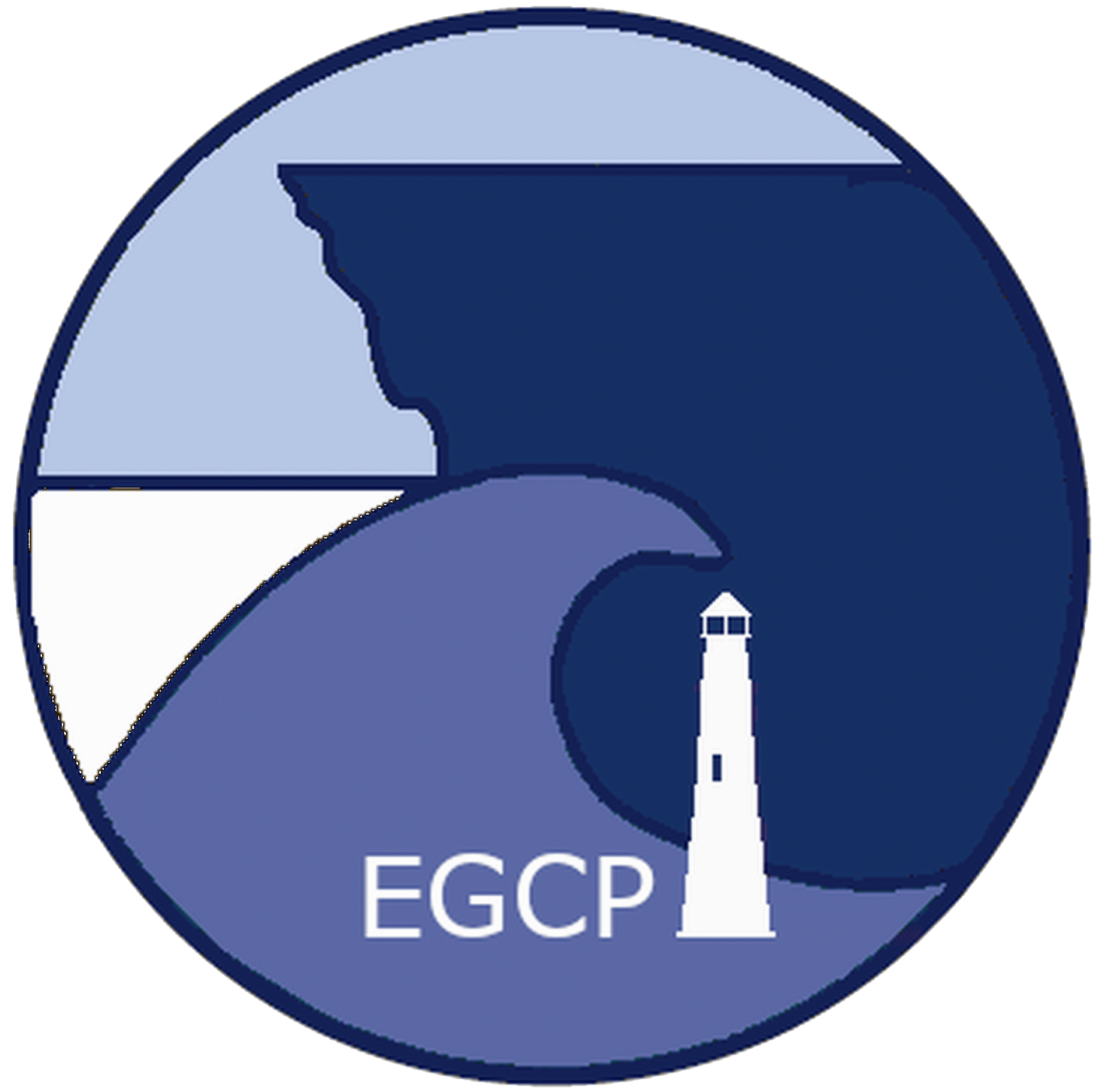 We have also been at the forefront of a highly innovative project called Discover Maps, led by Directors John Watson and Mike Skitmore, which grew out of an earlier EGCP initiative, Discover the Aberdeenshire Coast. With funding from Shell and The European Maritime Fisheries Fund (EMFF), we are developing a series of four new maps of the Aberdeen and Aberdeenshire coast, containing a wealth of information about its people, history, environment, and activities. We are currently working with Dr Fiona-Jane Brown of Hidden Aberdeen Tours, and Angus Turner at AVC Immedia Ltd, who are helping with the collection of information and the development of some accompanying videos.
We have also been at the forefront of a highly innovative project called Discover Maps, led by Directors John Watson and Mike Skitmore, which grew out of an earlier EGCP initiative, Discover the Aberdeenshire Coast. With funding from Shell and The European Maritime Fisheries Fund (EMFF), we are developing a series of four new maps of the Aberdeen and Aberdeenshire coast, containing a wealth of information about its people, history, environment, and activities. We are currently working with Dr Fiona-Jane Brown of Hidden Aberdeen Tours, and Angus Turner at AVC Immedia Ltd, who are helping with the collection of information and the development of some accompanying videos.During the past year, throughout the pandemic, we have continued to keep in touch with the coastal communities of Aberdeen and Aberdeenshire and, while unable to undertake beach-cleans, we have actively engaged with schools, developing educational materials for undertaking beach cleans, including some videos.
Meanwhile, Ian Hay, EGCP Marine Scotland Project Manager, and I are now working alongside other Scottish coastal partnerships on a new project called SEaCoR. Led by the Forth Estuary Forum, the aim is to collate, analyse and publish the combined knowledge of organisations across the public, private and third sectors forming the basis for the future development of regional and local plans and projects to promote the sustainable use of the East Coast of Scotland.
As an organisation, the EGCP is always on the lookout for new members, whether as a director, partner, sponsor or volunteer, so if you are interested, please don't hesitate to get in touch with David R. Green or via our website .
27 May 2021
- Lynne Grant
-
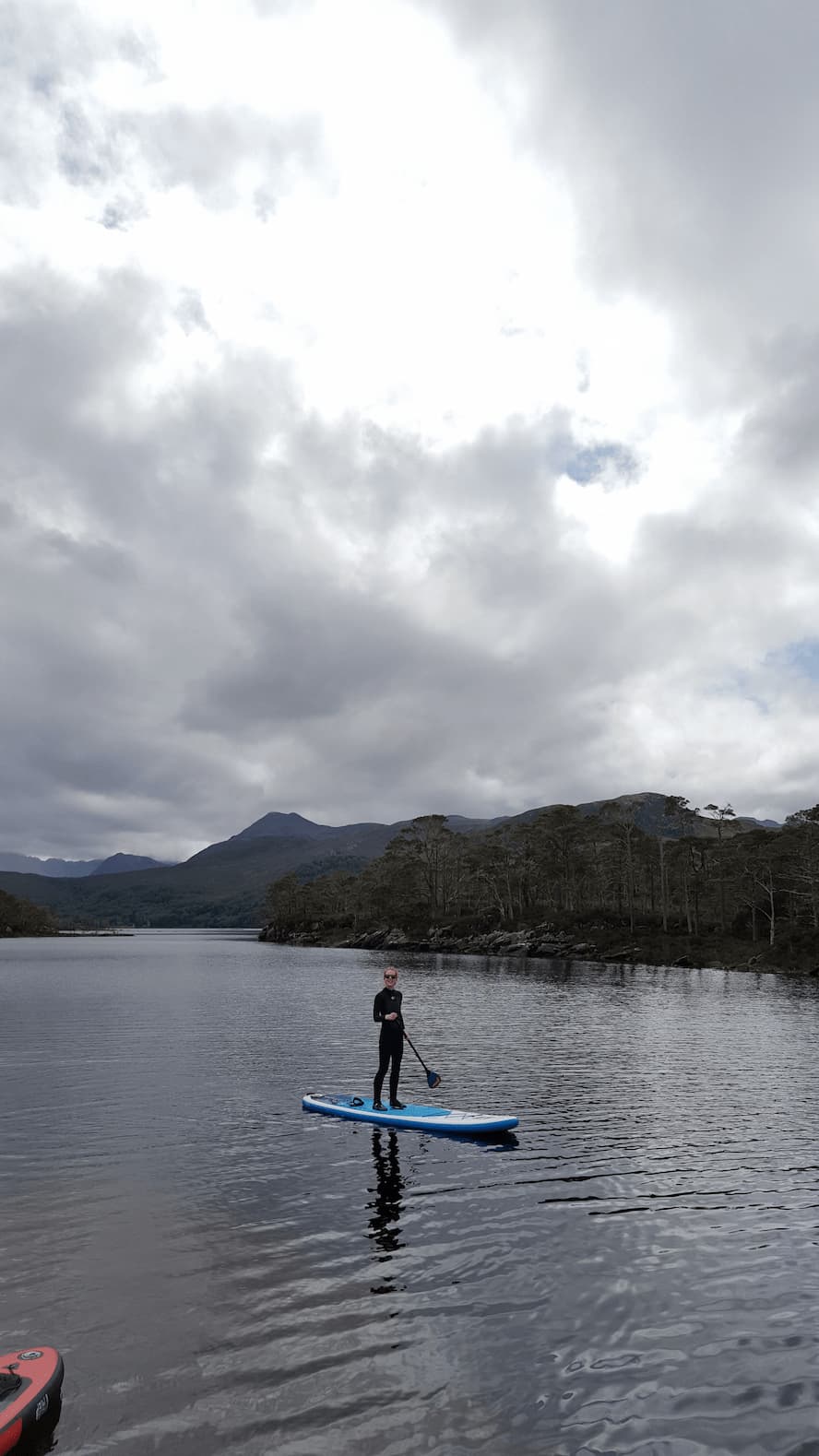
It was in April 2019 that I went for my first stand up paddle boarding lesson in Stonehaven, and by June 2019 I had my own board as I had clearly caught the bug. It's not something I'd ever thought about doing as I had never been into any type of water sports - I lived in the country so jumping around on bales in the fields was more my kind of thing!
It's great to get out on the water (when it's not choppy) to go for an explore down the coast to Dunnottar Castle checking out the caves on the way down, sometimes a seal or two will pop up. If you are lucky you might even see the dolphins, my first outing in 2021 a couple of weeks ago was fantastic as a family of dolphins appeared about 10 feet from my board!
My partner and I enjoy #Vanlife and have been on some brilliant adventures with the boards in Scotland such as cruising around Loch Morlich and visiting the islands at Loch Maree. I love heading out for the sunrise, but to be honest in summer the 4am alarm doesn't excite me - so I just take my flask of tea along to make that early morning a tad easier!
When I am not on my paddle board I'll be walking my springer spaniel Mac, we tend to walk along the coastline picking up sea glass and will collect any rubbish we find along the way. After bagging it up, hiding it and out of reach of the water I'll come along on my paddle board to take the rubbish away.
I'm not very good at relaxing but this helps me to wind down after a busy week at work, bobbing around on my board in the sun is a lovely feeling!
20 May 2021
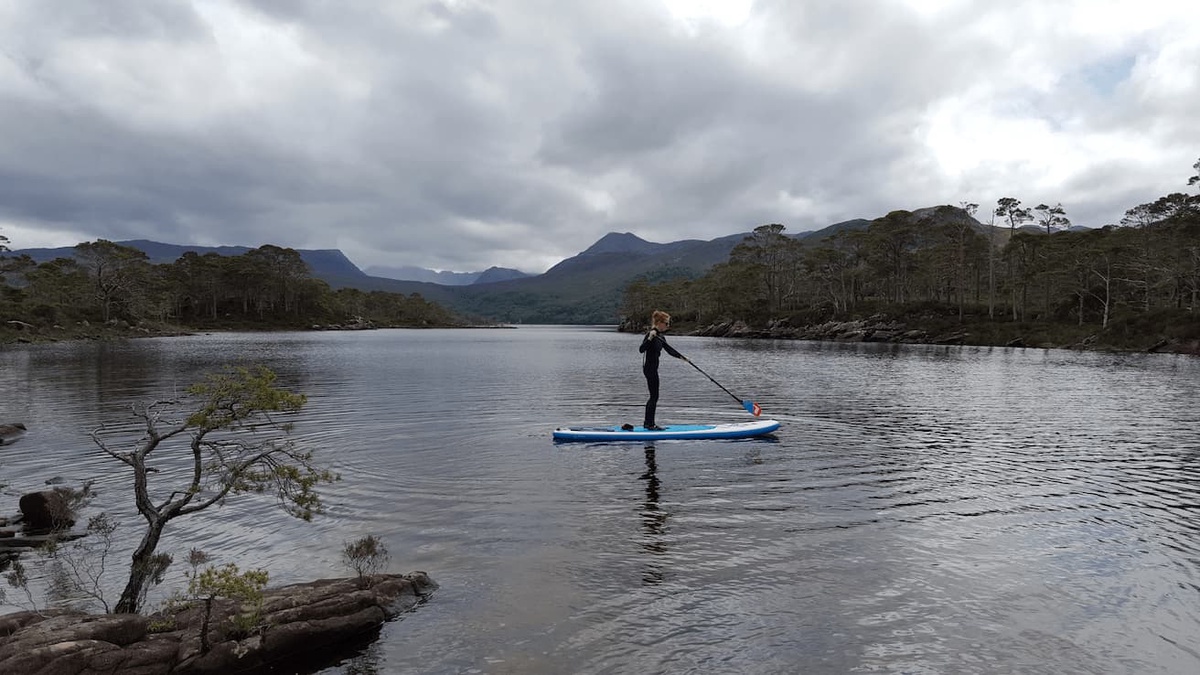
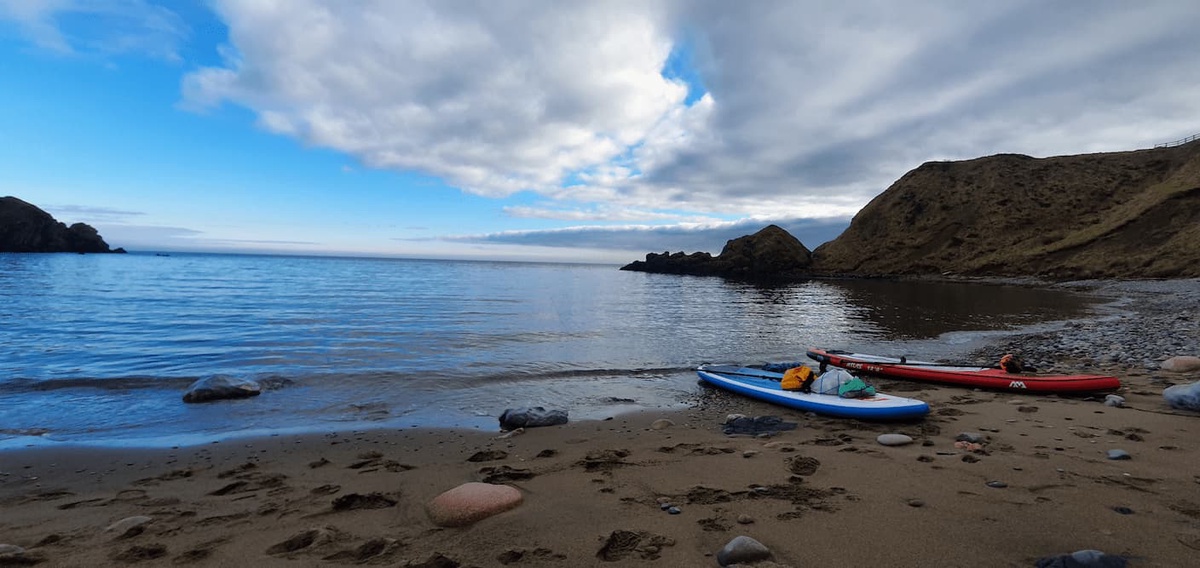
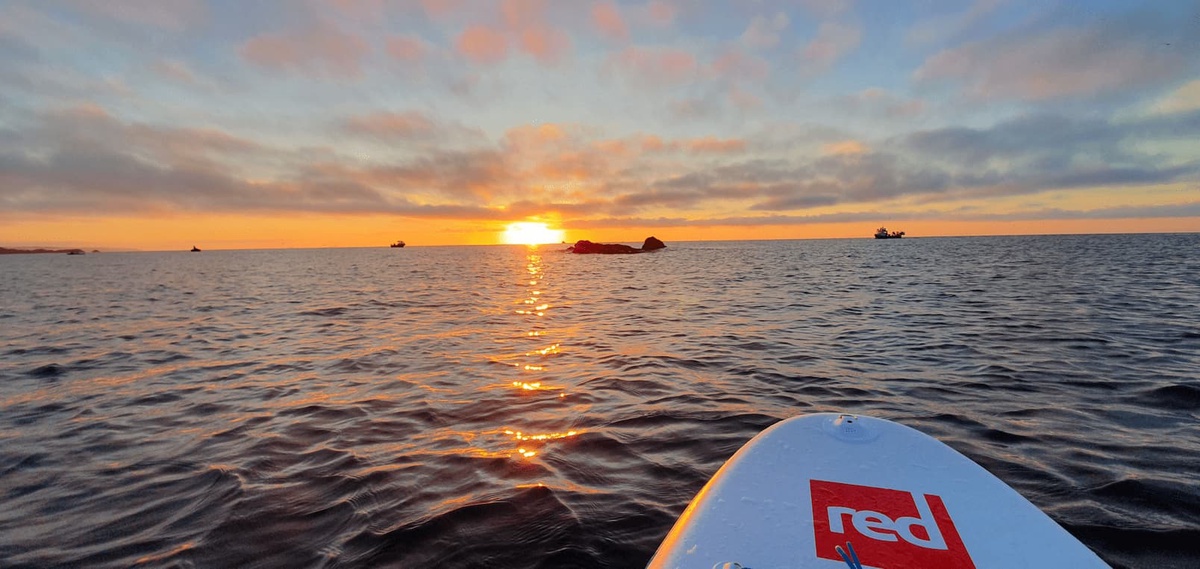

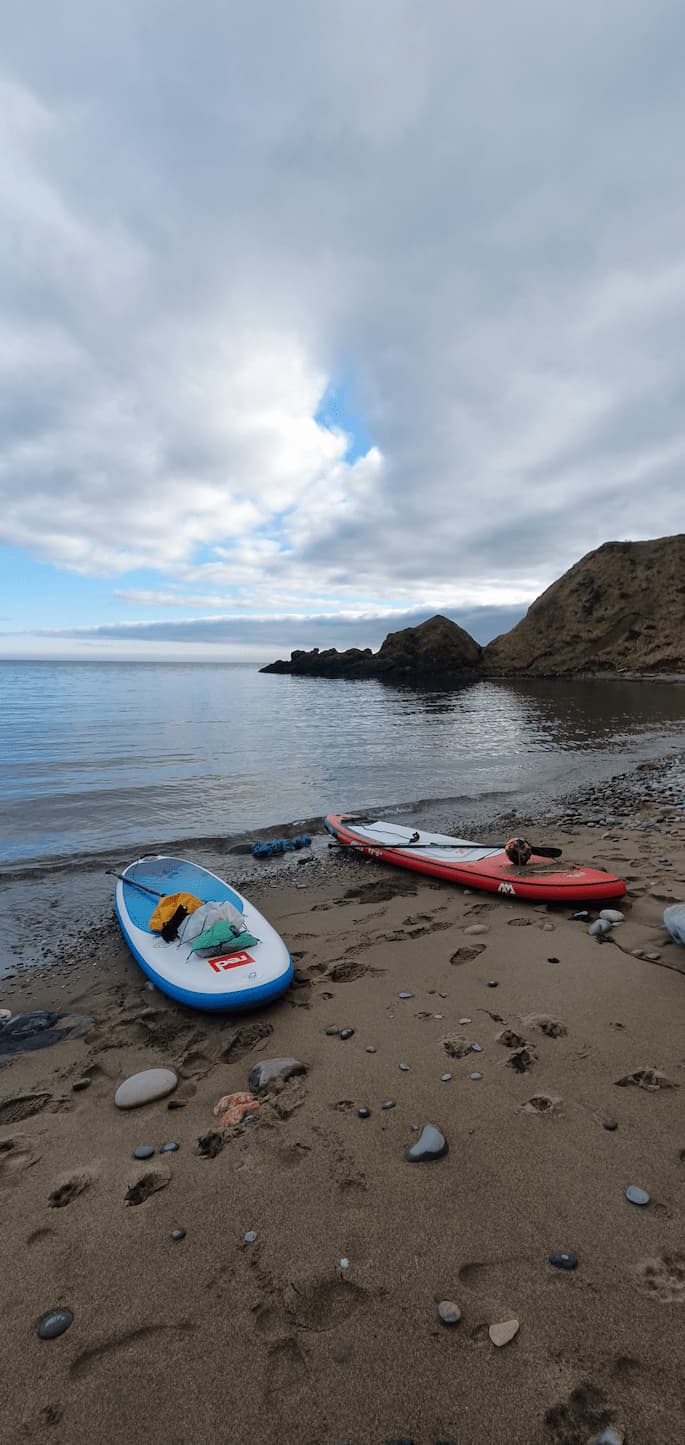
- Helena Ziegler
-
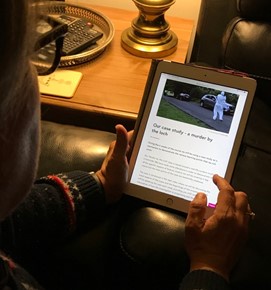
The first one I did was called 'Forensic Facial Reconstruction' with the University of Sheffield, while the current one - Introduction to Forensic Science - is through the University of Strathclyde. I am signed up to do 'Forensic Archaeology and Anthropology' with the University of Durham next, and I am looking at doing a course called 'Human Rights and International Criminal Law: An Introduction' through the University of Padova at some point.
The platform I use is called Future Learn, and it links you to MOOCs from all over the world. The current course is six weeks long. They release the new lessons each Monday, and there are usually about 12 lessons to cover each week. Some are short, others have additional material to watch or read. It depends on how fast you understand everything, but I would say I spend about three hours a week on the lessons. Because I am not taking it for credit, I don't have to do the tests.
So far, I've learned how facial reconstruction is done on a skull, and how a crime scene is assessed, and evidence gathered, both to identify the perpetrator and for use in prosecution. Next up, forensic anthropology and DNA.
I love reading and watching crime, thriller and spy fiction, listening to true crime and espionage podcasts and reading general interest books on forensics, especially those by Professor Dame Sue Black (Written in Bone) and Val McDermid (Forensics: The Anatomy of Crime), both of whom I would highly recommend.
Of course, the reality is nothing like what you see on TV or read in fiction. The forensic scientists must follow the procedures very carefully, and the processes are very methodical and step-by-step. It takes a lot longer in real life to get any results. The MOOC I am currently taking is taught by analysing the forensics around a case that is based on a real murder near Loch Lomond, with key details changed. It drives my family crazy when we are watching TV crime shows as I point out all the errors when it comes to forensics and crime scenes, especially when I almost always identifying 'the perp' correctly!
13 May 2021
- Clare Sutherland
-
Senior Lecturer, School of Psychology
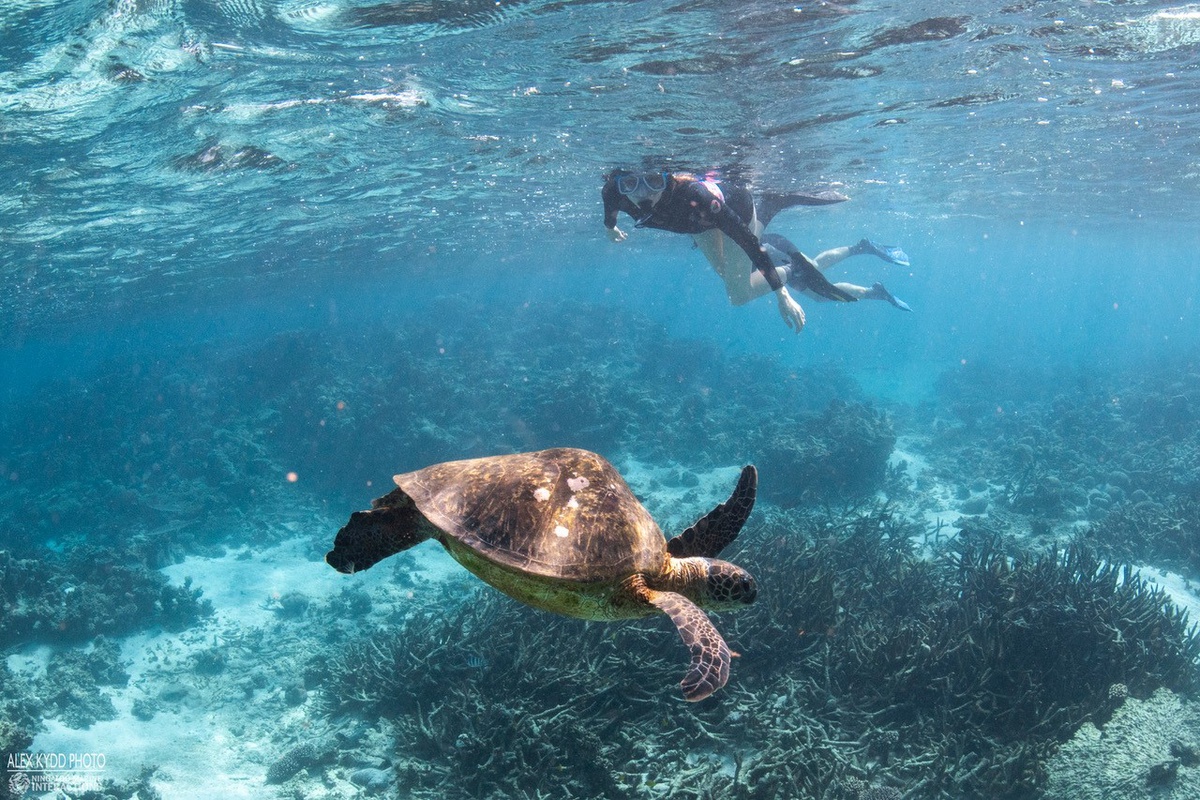
We swam through a channel made of coral called Ashto's Gap, which led to a shark cleaning station. I will never forget the feeling of looking down at seven or so circling reef sharks in the open ocean. Juvenile sea lions are also amazing to swim with as they're excitable, kind of like puppies of the sea. They enjoy it when you blow bubbles at them! We swam with them near Perth and a dolphin joined in - we have a great video of the dolphin swimming away with a sea lion entourage!
In Australian law, you're meant to keep two metres away from ocean animals - but sometimes they have other ideas. I once came face to face with a curious turtle who backed me up against the coral to have a good look. Another time, I had to get pulled away from an inquisitive whale shark who came up to see what kind of fish we were. It's possible that the whale shark, a juvenile, had never encountered a human before.
The Ningaloo reef is one of the last great ocean refuges left. Swimming there has made me really passionate about reducing my carbon footprint and trying to go zero waste. I want to be able to go back and have many more ocean encounters.
My next planned trip though, is to Coll on the West Coast of Scotland - you can swim with basking sharks and seals there. There is nothing like the feeling of seeing an animal in its natural habitat.
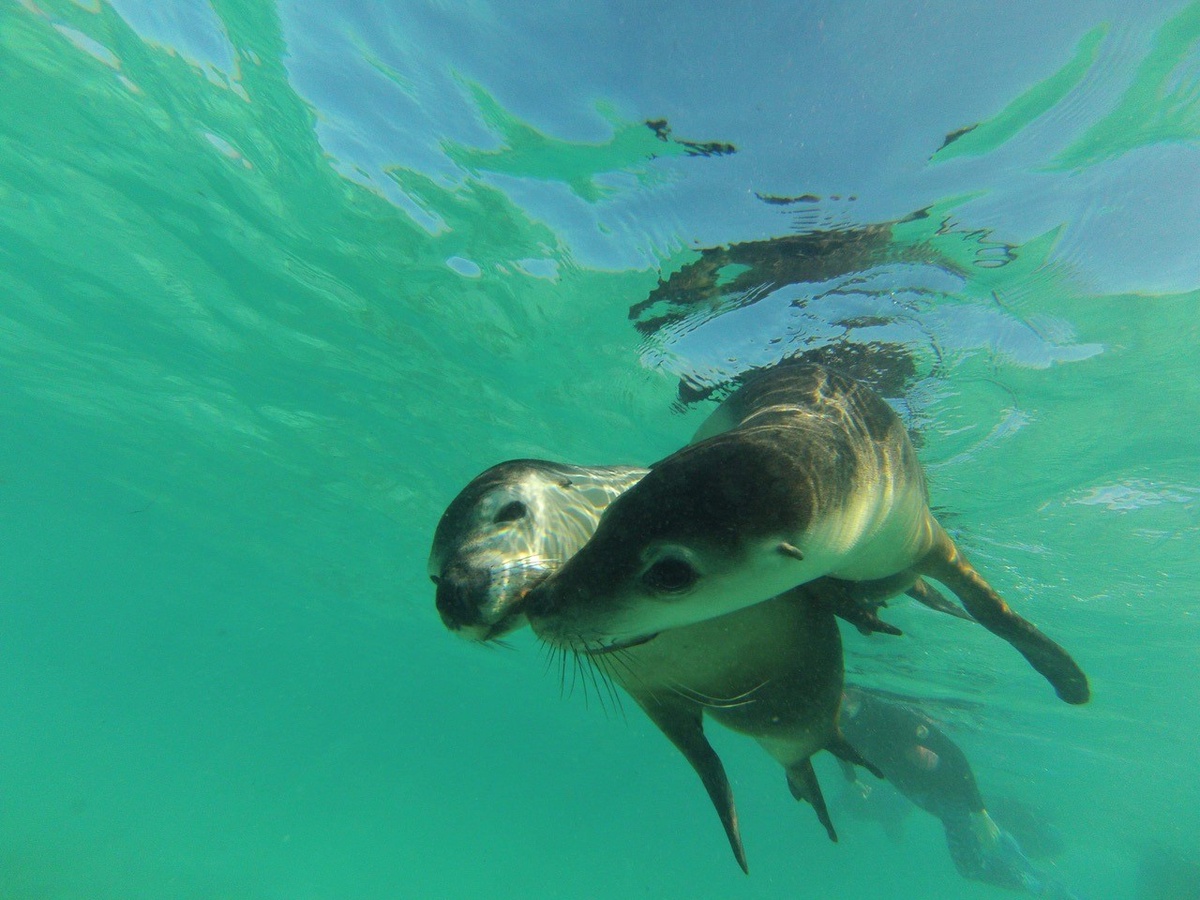
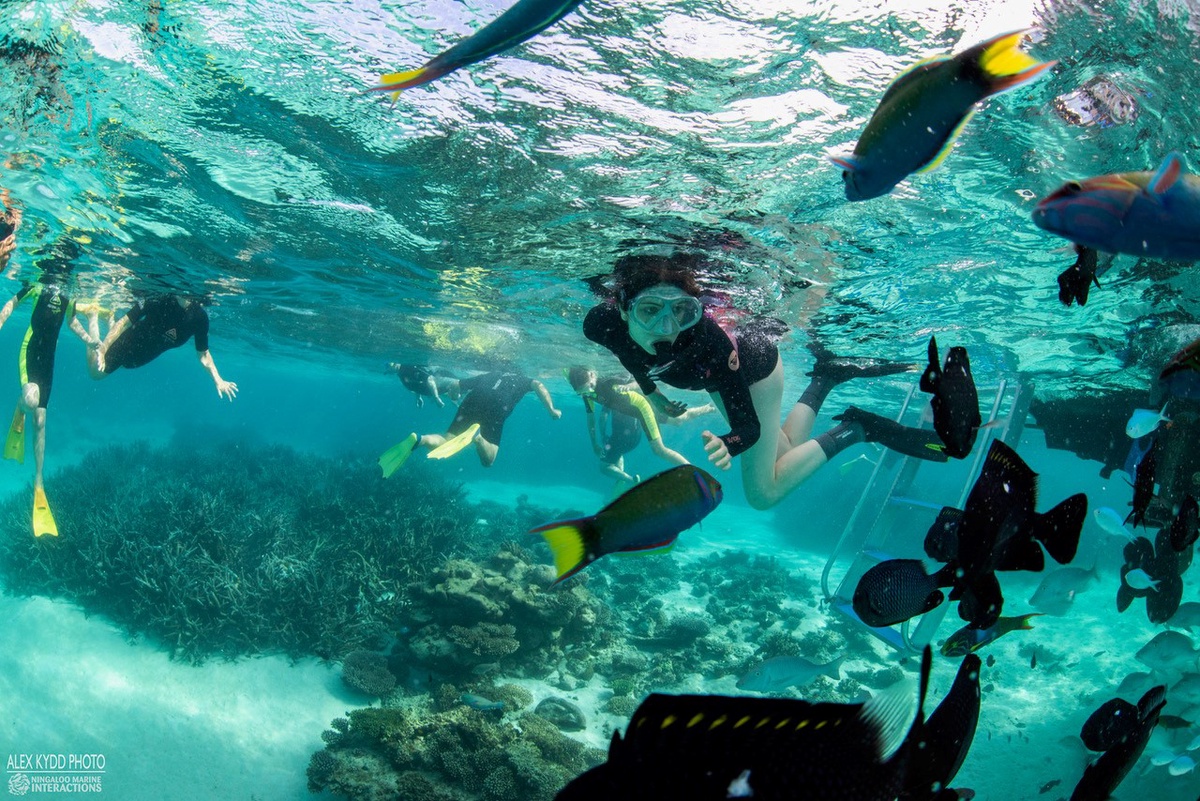
6 May 2021
- Lucy Holmes
-
School Marketing Officer for the Business School
I first got involved in the world of podcasting in March 2020. Since then, I've had the opportunity to become a regular guest host for the #1 video game podcast on Podchaser Grief Burrito. I'm also a host for the horror movie podcast, Behind The Screams, and I am a regular guest on various horror podcasts in the US and Australia, including TGIF Podcast, Slay Away and House That Screams.
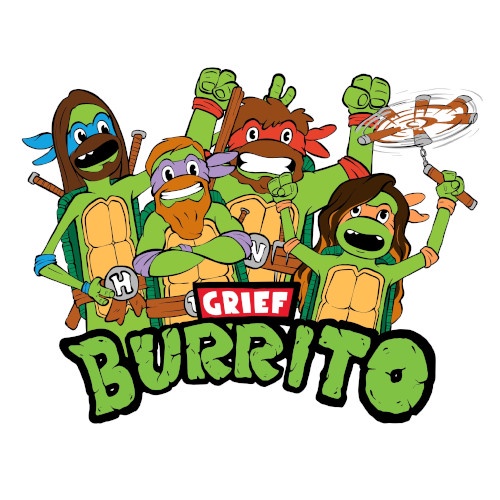
What started as a small hobby at the start of lockdown last year and being an occasional guest on my friend's horror podcast, has opened me up to the world of the online horror community in all its creative avenues, from books and podcasts to twitch streaming.
This October, I'll be publishing my first piece of written horror content, which will feature in a series of anthologies by Cat Benstead, founder and host of TGIF Podcast. The series - “Hear Us Scream: The Voices of Horror” - is a collection of personal essays from women and non-binary individuals from all over the world about our experiences of the genre.
The theme of my piece will be the history queer coding of villains; from animated children's horror films to modern horror cinema, how the Hays code had a significant impact on queer representation in horror, and the effect this has had on the LGBTQ+ community.
My biggest highlight to date has been interviewing horror legend Naomi Grossman, who you may know as the iconic American Horror Story character “Pepper”. As a huge fan of the cult TV show, it has been my favourite interview to date, with Naomi sharing with us all the fan art she has received from horror conventions, as well as an insight into her audition room, which was amazing!
I've also had the opportunity to interview Frankie Doom, star of the hit horror drag show “Dragula”, and Emma Louise Webb, one of the lead actresses in the Zoom based horror movie “Host”, which went viral last year on Shudder.
29 April 2021
- Marcel Jaspars
-
Chair in Chemistry
I am a Professor of Organic Chemistry, looking to find new medicines from marine invertebrates and marine bacteria. I have an international and diverse research group who are very enthusiastic about their work and I enjoy meeting with them to discuss recent results.
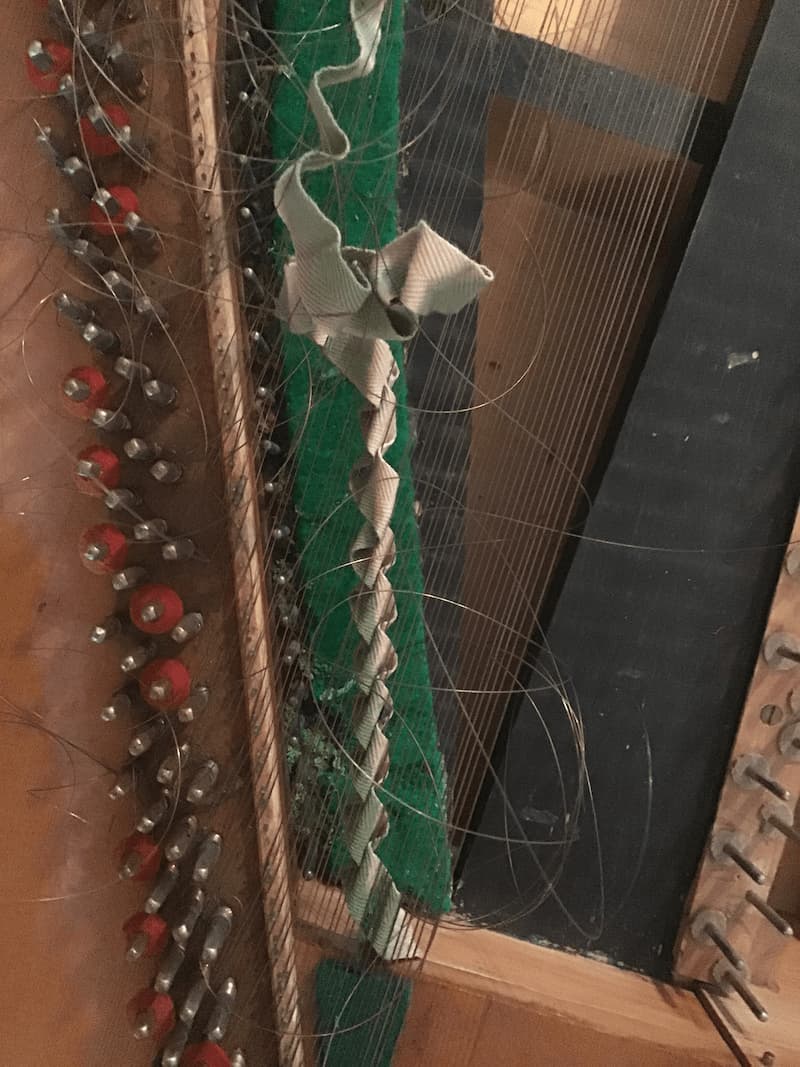
A clavichord is one of the earliest keyboard instruments and puts the player directly in touch with the strings via the keys, allowing the player to exert subtle pressure on the strings when playing. When the instrument arrived, a clavichord made by Thomas Wess in 1973, I did not have the first notion where to start, so we had to find help. We were lucky to find a baroque keyboard maker in Germany, who had worked with Thomas Wess and remembered him well, and offered to help. This turned out to be pivotal as he gave detailed advice at every stage of the process, and we could not have done it without his generous help. He also recommended suppliers for the parts that would be needed to repair the instrument. The suppliers were all very helpful and kind, and some remembered Thomas Wess and told me a little about him (such as his passion for classic motorbikes).
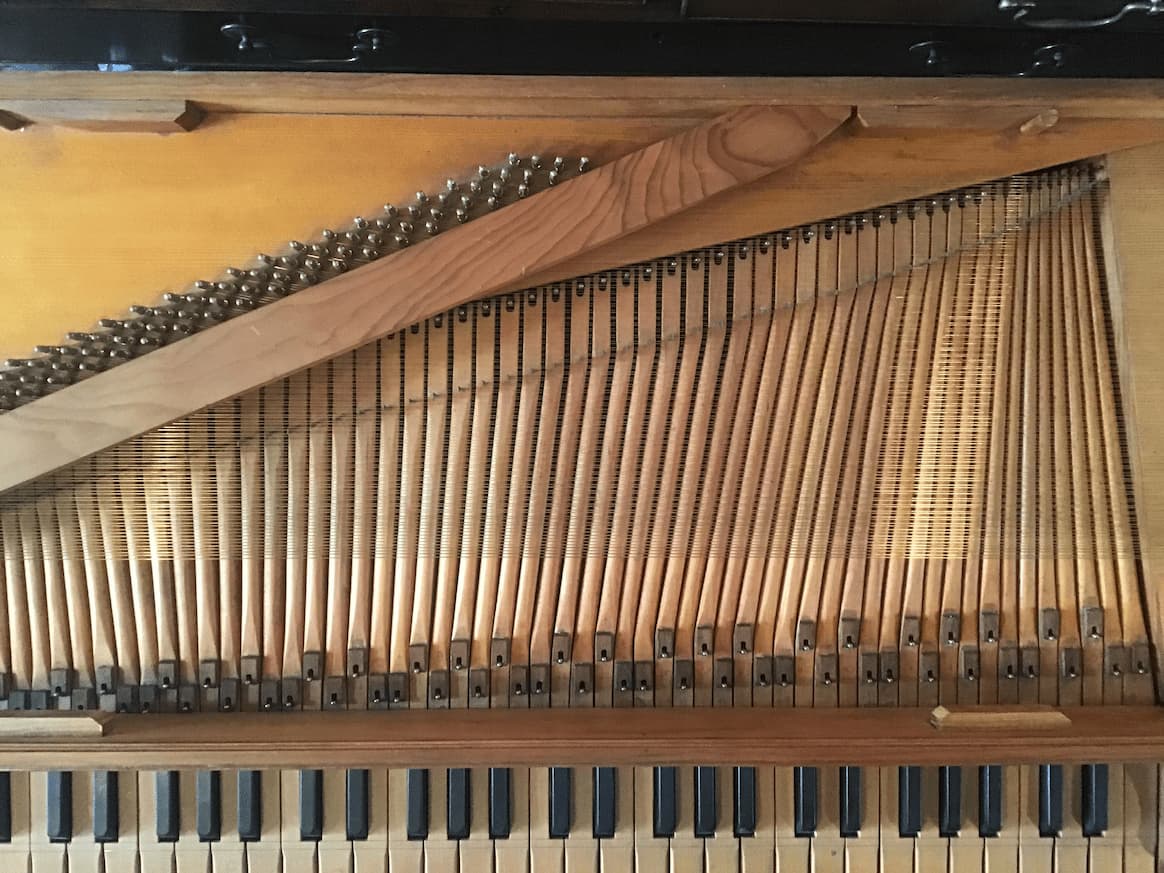
Learning to string the instrument was a challenge, and required help from my wife, to stop me from breaking too many strings. She became very adept at taking the brass strings through the bridge pegs, round the hitch pin and back again for me to wind round the tuning pegs (at the same time we learnt a whole new terminology associated with the clavichord!). After nearly four months of work, the instrument is now fully strung as you can see in the picture. Over the next few weeks, I will be tuning the instrument with the help of my son and hopefully not breaking too may strings. We look forward to hearing him playing it. My next challenge - learning how to play it myself!
22 April 2021
- Amy Irwin
-
Lecturer (scholarship) Psychology
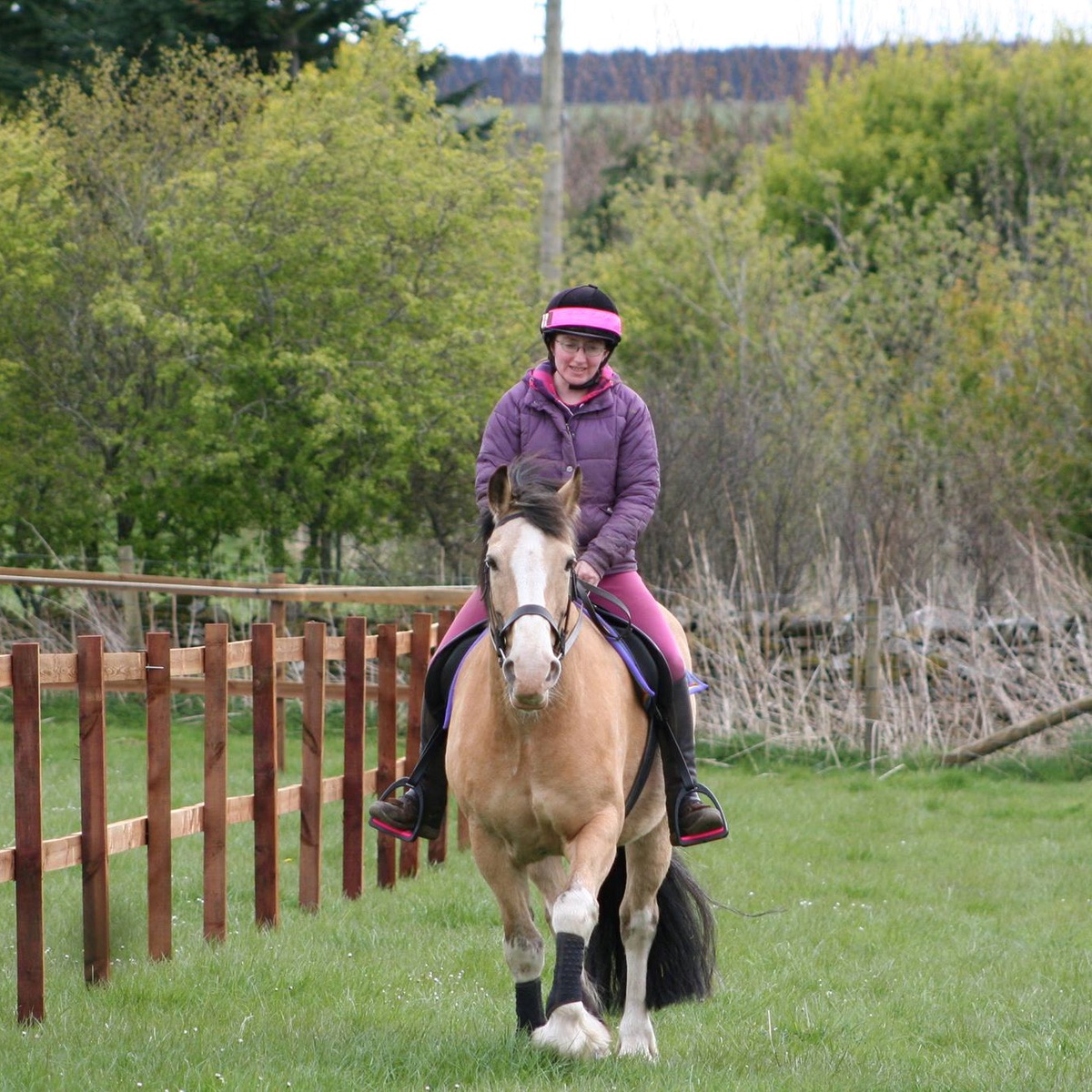
I have been riding ponies since I was four. My mum had ponies of her own growing up and once I was old enough, I was keen I learn to ride. Horse riding is a passion - it has to be in order to cope with the early mornings, mucking out, and riding in all weathers!
I was bitten by the bug the very first time I rode - on a tiny little Shetland in the pouring rain and have been riding ever since. I was lucky enough to get Rye, my first pony, when I was 15 and he was three, so we have grown up together and had great fun competing at dressage, show jumping and cross country when we were both younger.
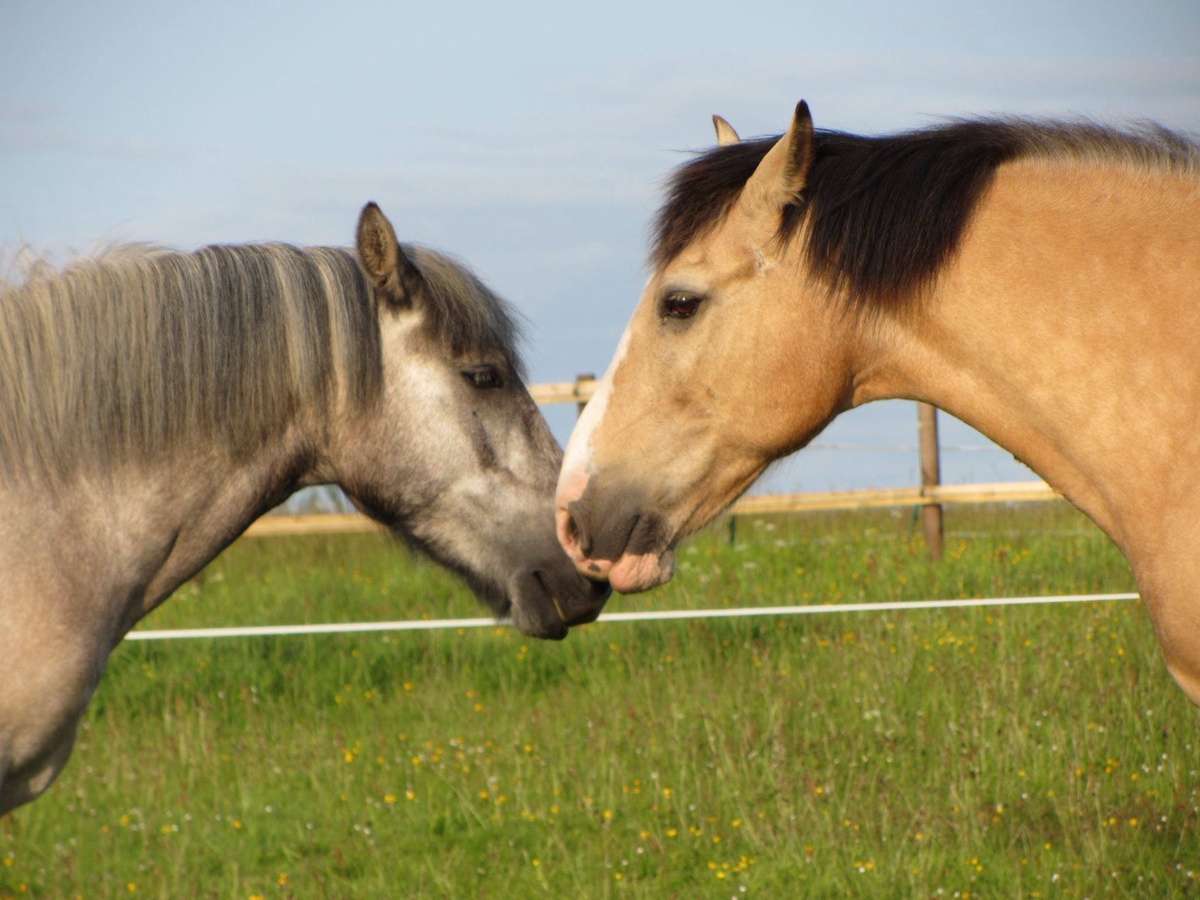
15 April 2021
- Mark Elrick
-
By day, I'm a mild-mannered Lead Digital Marketing Officer for the University of Aberdeen; but by night, I don the Dolly Digital tourie and face mask to live 'my other life' as Aberdeen FC's 'artist in residence'.
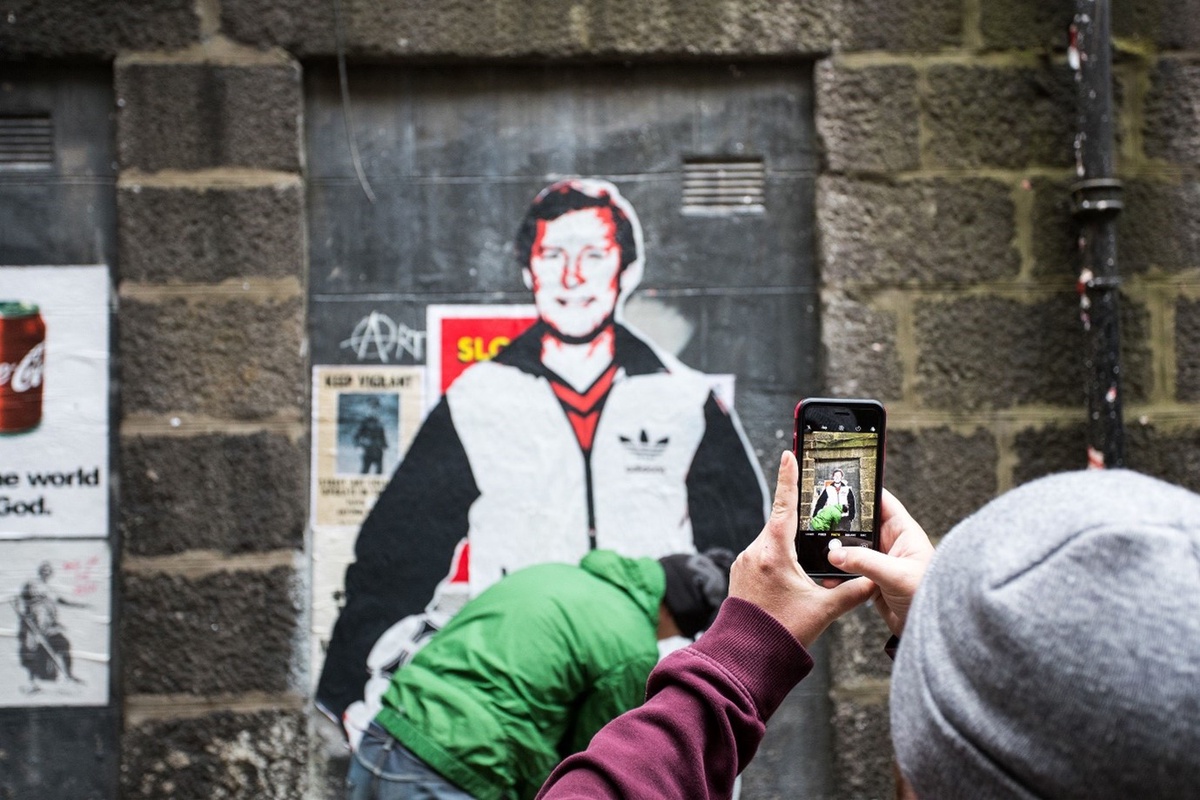
My path to the Digital Marketing role started from my graphic design and digital media background that evolved to encompass digital marketing. These skills are used regularly to complement our digital marketing activities, but also to promote the University elsewhere - I still get a thrill seeing designs on oversized banners that can be seen around campus, print ads in The Times, or The Guardian, or animated on pitch-side LEDs at Pittodrie on a match-day.
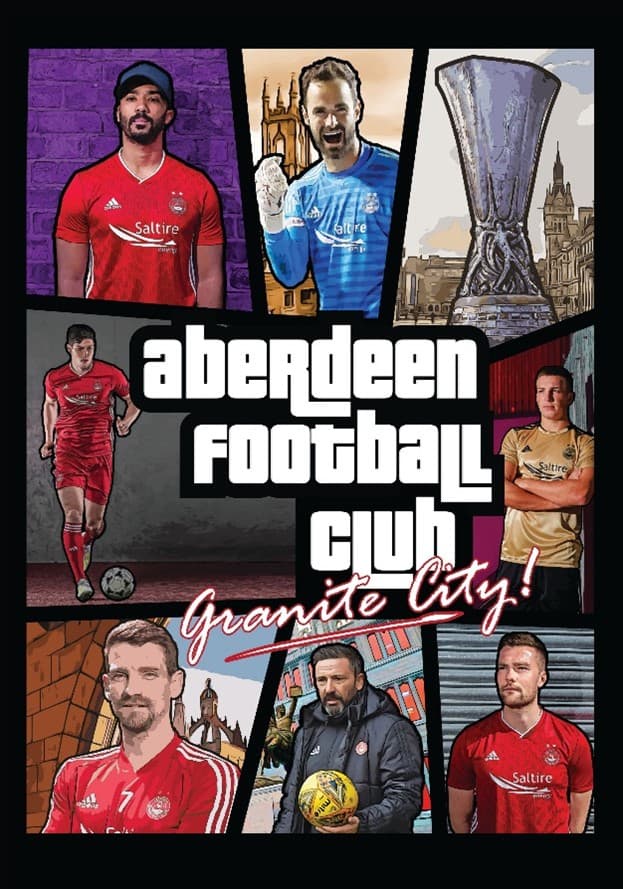
It's these design skills, and a passion for football, in particular my support of my local football club, that led to the club approaching me to take up the role of 'artist in residence' at AFC.
In this role, I design the programme cover for the multi award-winning 'Red Matchday' programme. I'm given the creative freedom to create what I want (within reason) but tend to constrain myself with self-initiated season 'themes'. In the four years I've been in this role, I've created designs along styles of street art, brand new retro (recreating classics from yesteryear with a modern twist), and pop culture.
I still get a massive thrill seeing my design on the cover of the programmes being sold by vendors on street corners or clutched by fans on their way in to Pittodrie and being read at half-time by those around me. These designs occasionally go viral and are often shared on sports and news websites such as BBC. Two, in particular, were shared worldwide. The Granite City (Grand Theft Auto parody - mimicked by many clubs since) and the recreation of a much-loved programme cover from the 80s, recreated by my kids Lily and Ollie. While crowds have been kept away from Pittodrie since March 2020, the Red Matchday has continued publication. Subscribers receive their copy on the day of the game and I'm quite proud the programme continues to be match day tradition, although the game is watched in isolation around the country on devices rather than in the company of friends.

1 April 2021
- Heidi Gardner
-
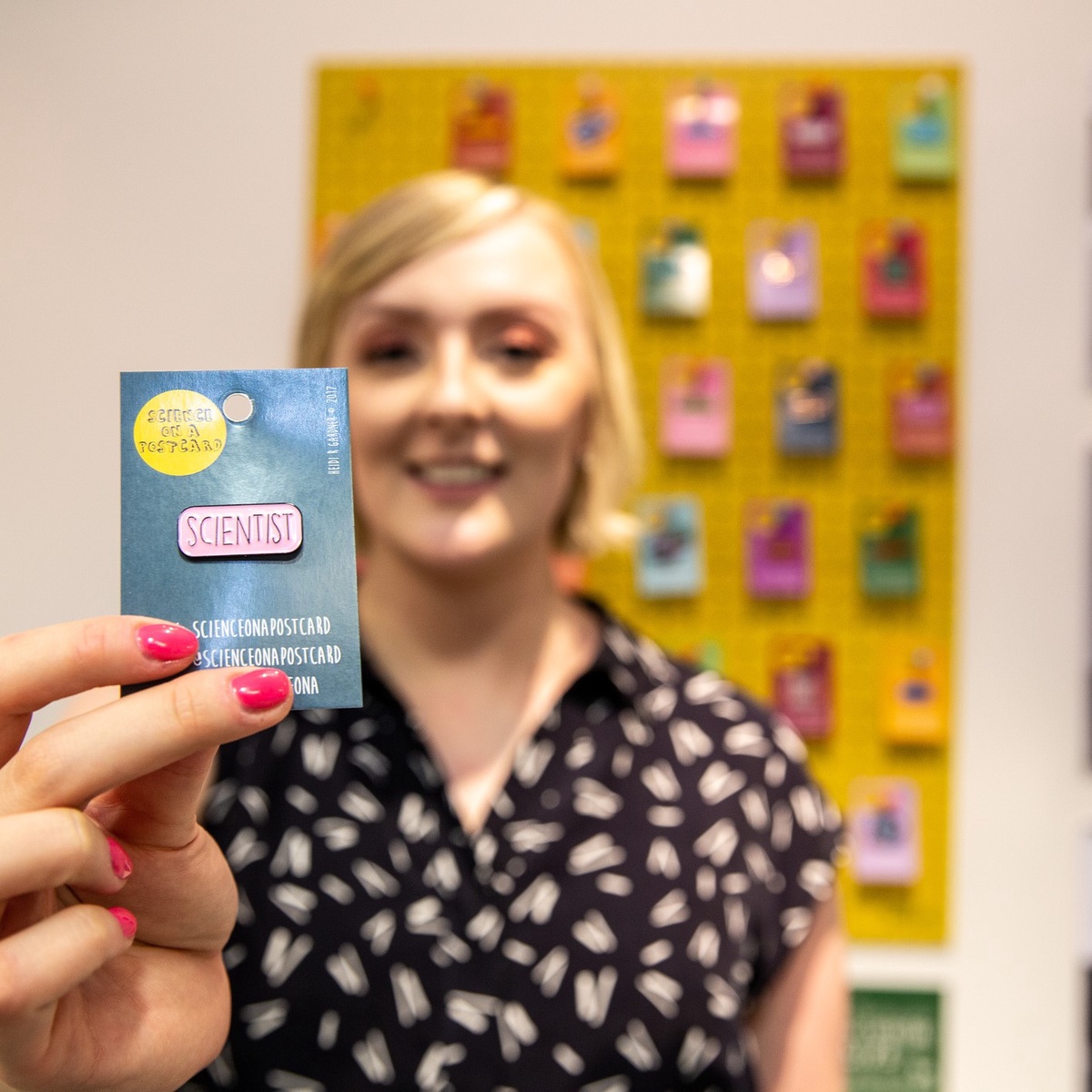
The rest of the time, I'm usually either with my partner walking my dog, Barney, or holed up in my home office, where I run a small business called Science On A Postcard . The business is a big part of my life and has been since I started it in 2017. I create colourful products such as pin badges, tote badges and postcards, all of which have a science twist.
I started Science On A Postcard after someone told me that I didn't look like a scientist. After I finished rolling my eyes, I decided to do something to chip away at that point of view. Now, I have more than 150 individual products, and I pack and post orders every third day. There are now over 10,000 pin badges from my 'STEM roles' range helping scientists to spark conversations with non-scientists around the world.
I find the creative side of Science On A Postcard to be almost therapeutic and, while the administrative side of things can be a bit frustrating, I've learned lots of new skills that I've brought into my day job too. Juggling working full time in research alongside a growing business has been challenging at times, but mostly I've found the two aspects of my life to work together pretty well.
Lots of my creative projects now focus on inclusivity and diversity, but recently I've been using mental health and research culture as inspiration for my work. I think it's important for researchers, particularly those that are in the early stage of their career like I am, to have a community of people that they can go to for support. Science On A Postcard offers that too - it isn't about making money, it's about building a meaningful creative outlet for myself that also works to support others. The community that I've built has helped to foster new research collaborations too.
When people find out I have a creative business, most say something disparaging about themselves and their perceived lack of creativity. I'd like what I'm doing to dispel that myth. Everyone can be creative - whether it's drawing, making things with clay, making jewellery, redecorating your house, or baking. Science is creative, and it benefits from multidisciplinarity; involving people from diverse backgrounds and with diverse skillsets can only strengthen the research that we do.
And don't be fooled, not everything I illustrate makes it into the Science On A Postcard product line-up! The beauty of creativity is that it can be messy and playful, and you can get comfortable with what you've made before you decide to release it into the world.
25 March 2021
- Angela Michael
-
Head of Public Affairs, Stakeholder Engagement and Events
Hobby - Rowing
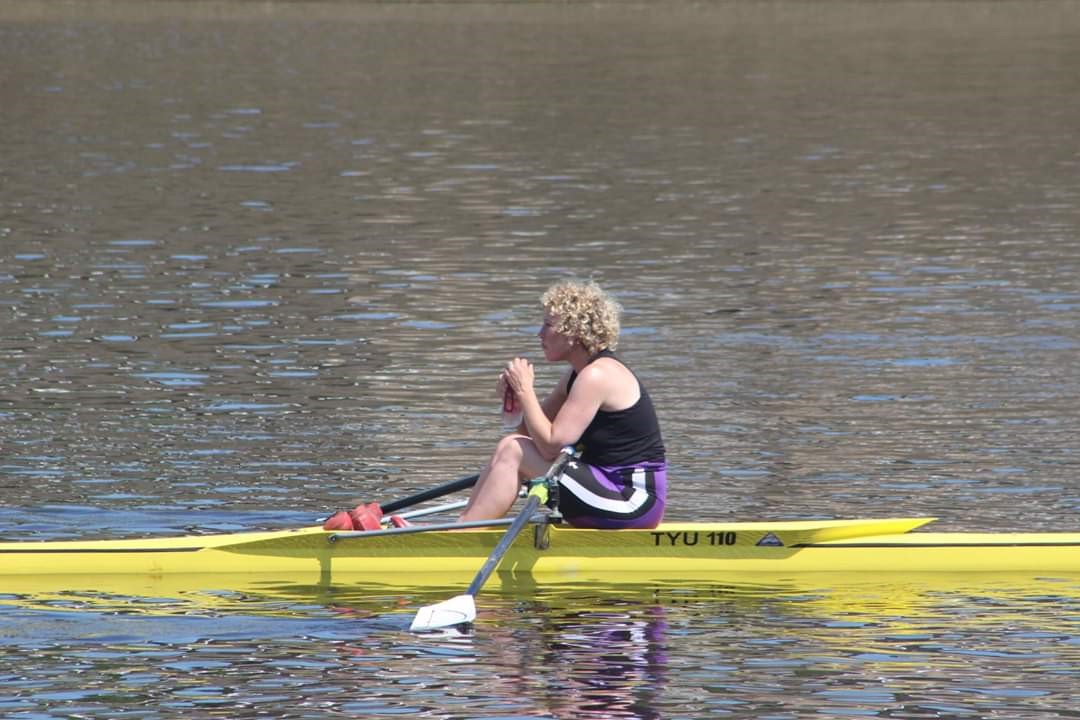
The intercompany row is all complete novices. One of the criteria is that no-one is to have rowed before, but teams are assigned an experienced coach/cox who teaches the crew over the six-week spell before the team is ready to go out and race. It's such a fantastic initiative for teambuilding. Rowing in a boat of four takes trust, communication and focus and I found it so exhilarating to learn something new. The added competitive element of racing meant that I stayed on after the intercompany time was over and I've been a member of the club ever since.
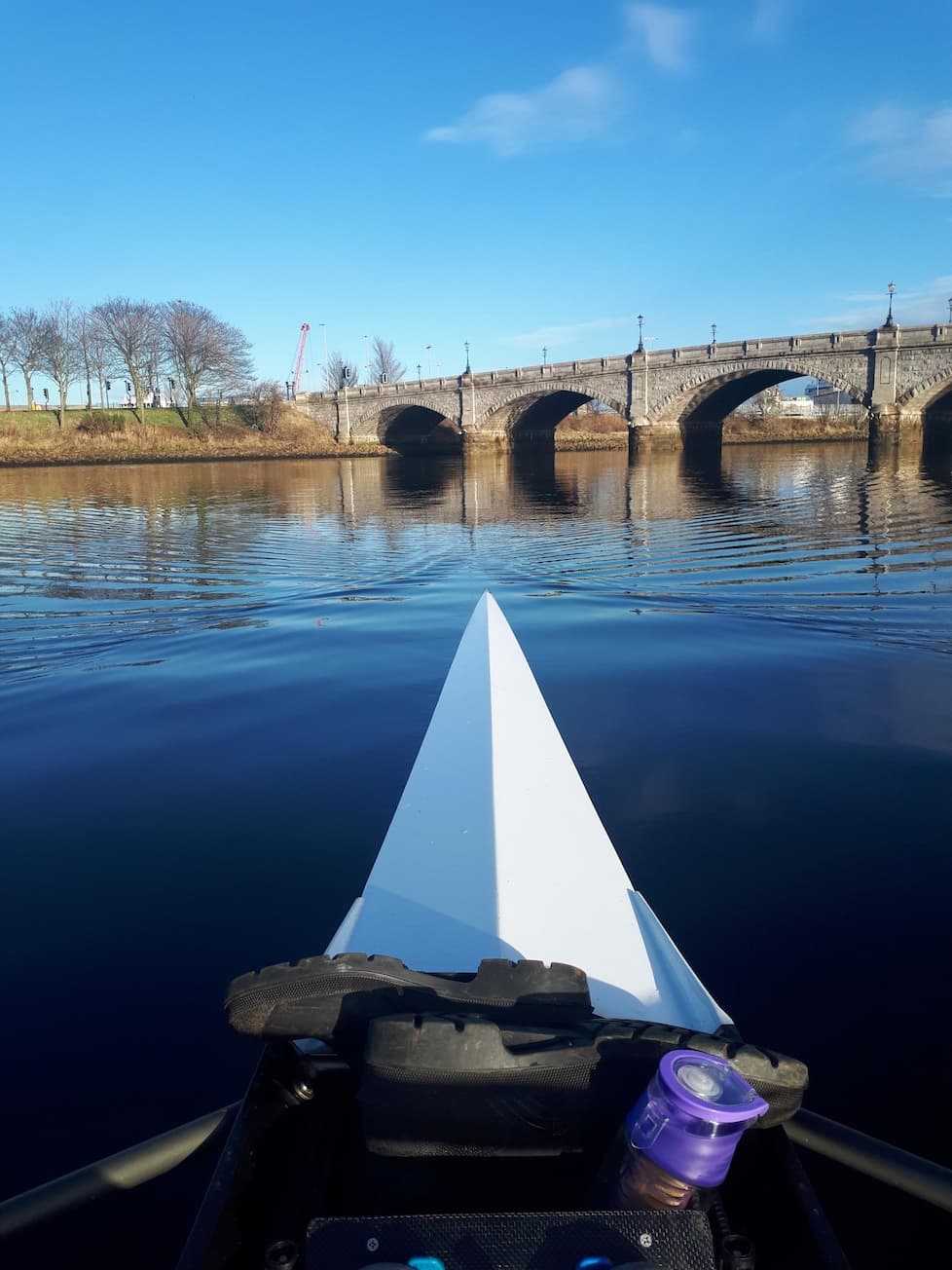
Another highlight has been passing my bronze, silver and gold sculling accreditation. My colleagues in the events team will remember the mornings I came into work bedraggled and windswept after doing 10K on the river at 6am to try and complete the gold sign off, doing 150kms on the River Dee within three months.
I'm also a cox, so try to help others learn to row too, which is something I never thought I'd be able to do - take charge of a boat and the people in it. I'm still not very good at parking a boat, but maybe another 10 years of practice will help with that!
A few years ago, I had a spectacular capsize in winter water (February) while I was practising manoeuvres for my silver rowing badge. The boat club is big on safety so there was a launch boat there to pull me out, but it was very, very cold!
It might seem like I am a sporty person, but I am most certainly not. My passions are music, the arts, dance, theatre, and literature but what I've found with rowing that I wasn't expecting is it has been so good for my mental health.
Rowers at Aberdeen Boat Club come in all shapes and sizes and I've rowed with crews made up of teenagers and 70+ year olds. It's a fantastic sport for that. Rowing has really carried me through since the pandemic hit last year. In the first big lockdown, we weren't allowed to row, even in single boats on the river, so I finally invested in a rowing machine for home workouts and started taking on virtual challenges and races with my rowing pals to stay active. Over the last year, I've rowed 500km as part of a British Rowing Challenge, 'rowed' up 53 mountain peaks in the Colorado Challenge, taken part in international virtual races and I'm currently 'rowing' the Grand Canyon every day, which will amount to 450km when complete. I'm currently at 'Whitmore Wash', with only 161km to go!
We are now allowed back out on the water in single sculls, which has been a great way to stay positive during the winter months. The club - like many sports and social clubs - has seen a huge downturn in its activity this last year, but it hopes to open up more as government restrictions ease.
18 March 2021
- Megan McFarlane
-
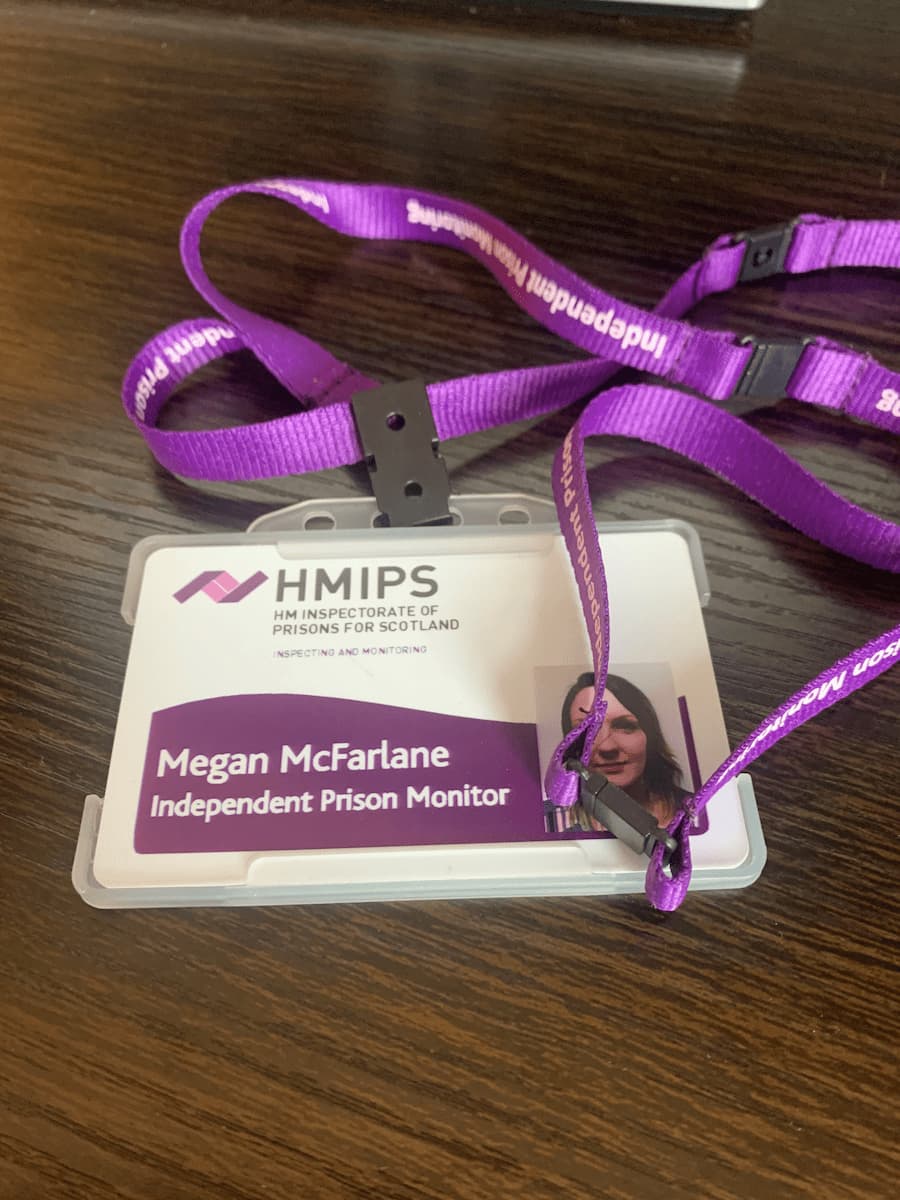
In my spare time, I act an Independent Prison Monitor . This is a really unique voluntary opportunity for Her Majesty's Inspectorate of Prisons for Scotland (HMIPS) and is an essential role within the Scottish justice system.
The role of a Monitor is to ensure prisoners' human rights are upheld by placing unpaid members of the community into Scottish prisons, who then work to bring about positive and constructive change. Things have looked a little different since the pandemic began, but the role is essentially to enter prisons in Scotland and check that prisoners are being treated properly - chatting to staff and prisoners as I go. Some days I might try the food that has been prepared for lunch, checking to make sure it is decent quality. Other days, I might ask to see the laundry facility and chat to the prisoners who work there. On top of this more general role, I meet with prisoners on a 1-2-1 basis if they have a specific complaint. I then conduct investigations, keeping the prisoner informed of my progress, and report formally on my findings to HMIPS.
I first became aware of the role when my mum was listening to the radio and heard an advert. She remembered that I used to want to be a prison officer when I was at school, so told me to go for it. I filled in the application and it went from there. All in all, it took about a year to get from initial application to formal offer of the role. As you can imagine, there are a lot of interviews, background checks and mandatory trainings before you're able to start. We even have to pass a specific key test before being let loose on our own in the prison. The system of doors, locks and one-way systems in a prison is really complicated and they rightly need to make sure we can unlock and lock a complex system of doors.
I love that I get to be part of something I'm passionate about. I fundamentally believe that when someone enters prison, we have an opportunity as a society to support that individual so they can make positive changes and re-enter the community as a force for good. IPMs play a key role in ensuring prisoners have access to purposeful activity, healthcare and learning - I often think about their access to education in relation to my day job!
I used to work as a case worker for MPs and MSPs, and the 1-2-1 element of the role is very similar. Sometimes you're there just to listen to the concerns of someone who is mentally in quite a dark place and needs to vent. Other times you are alerted to something more serious and need to find quick solutions, working with Scottish Prison Service (SPS) staff and fellow IPMs to resolve it.
Something I'm often asked by others is if I ever don't want to help someone after I have found out the crime they were found guilty of. I can honestly say I have never asked why someone is in prison because it has no bearing on what I'm there to do. Regardless of their past actions, everyone deserves to be treated with basic respect and dignity, and it's a privilege to play a small part in ensuring this continues to be embedded in the culture of our prisons - helping Scotland to remain the progressive society it is.
Due to the pandemic, HMIPS are not actively recruiting for more IPMs; however, they are looking to start that process again later in the year. Feel free to reach out to me if you're interested in finding out more, and make sure to have a look at the HMIPS website here . I can be contacted by emailing megan.mcfarlane@abdn.ac.uk .
11 March 2021
- Gill Matheson
-
By day, I'm the Digital Marketing Manager and Deputy Head of Engagement & Conversion here at the University. The Digital Marketing team has four functions - social media, digital campaigns, digital media and digital content - so it's a really busy job, especially in current times when activity has moved across to all things digital.
I also have three teenage girls so, with the busy day job and the demands of the kids (usually a repeat of 'more snacks please' and 'why is the wifi not working?'), there isn't always a huge amount of spare time available.
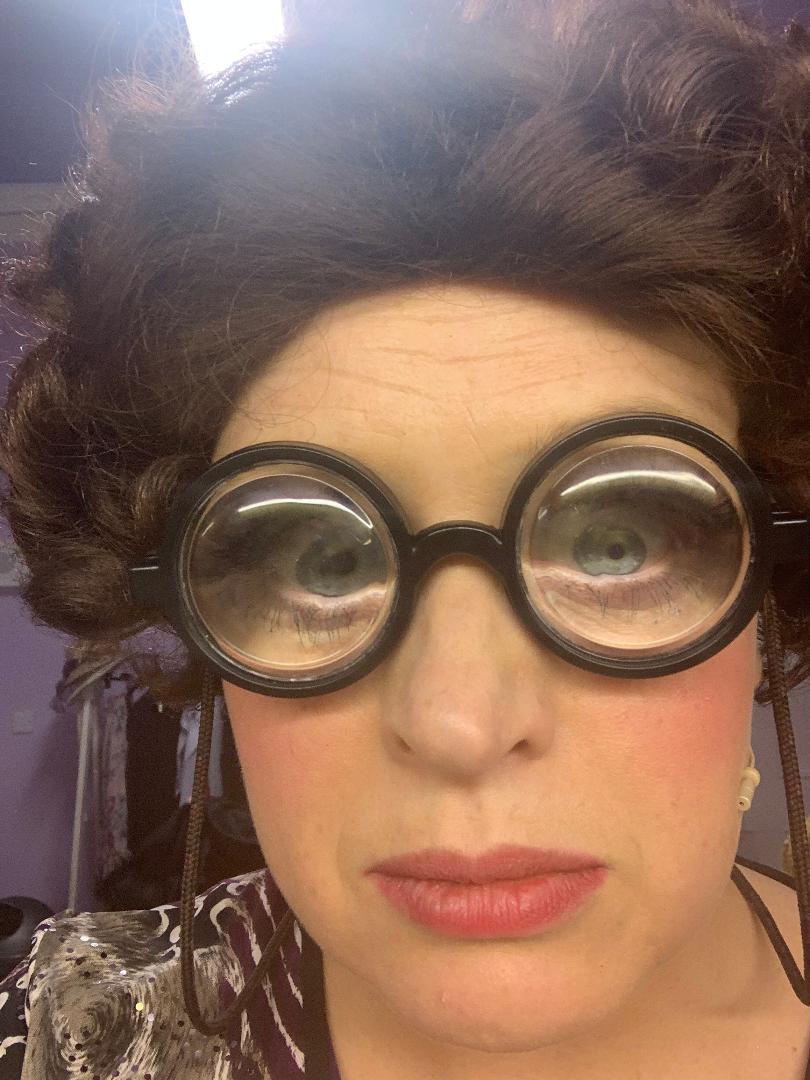
I've been fortunate enough to have played a few principal parts over the last few years, including the leads in Calamity Jane, Anything Goes and one of the witches in The Witches of Eastwick (I got to 'fly' on stage!), but I LOVE a comedy character part. One of my favourites was in last year's show, Lucky Stiff, where I played the 'baddie' Rita, complete with bottle-top glasses, a crazy wig and a grating New York accent, a la Janice from Friends! Please enjoy the attached pic … and then let's never speak of it again.
I do get really nervous before performances, but I also really enjoy it. The Society is like a second family. I actually met my husband there and we've played the romantic leads opposite each other a few times over the years.
Lastly, I'd like to dispel the myth that those who 'perform' are super confident. I can't sing in public as myself (well, unless I've 'imbibed' and there's karaoke on the go), and if I'm asked to do a presentation to more than three people, you can see the colour drain from my face. So, if you do see that I'm down for a presentation to many people, you can assume that I'll be turning up in a wig and glasses and may well appear to have a dodgy American accent …
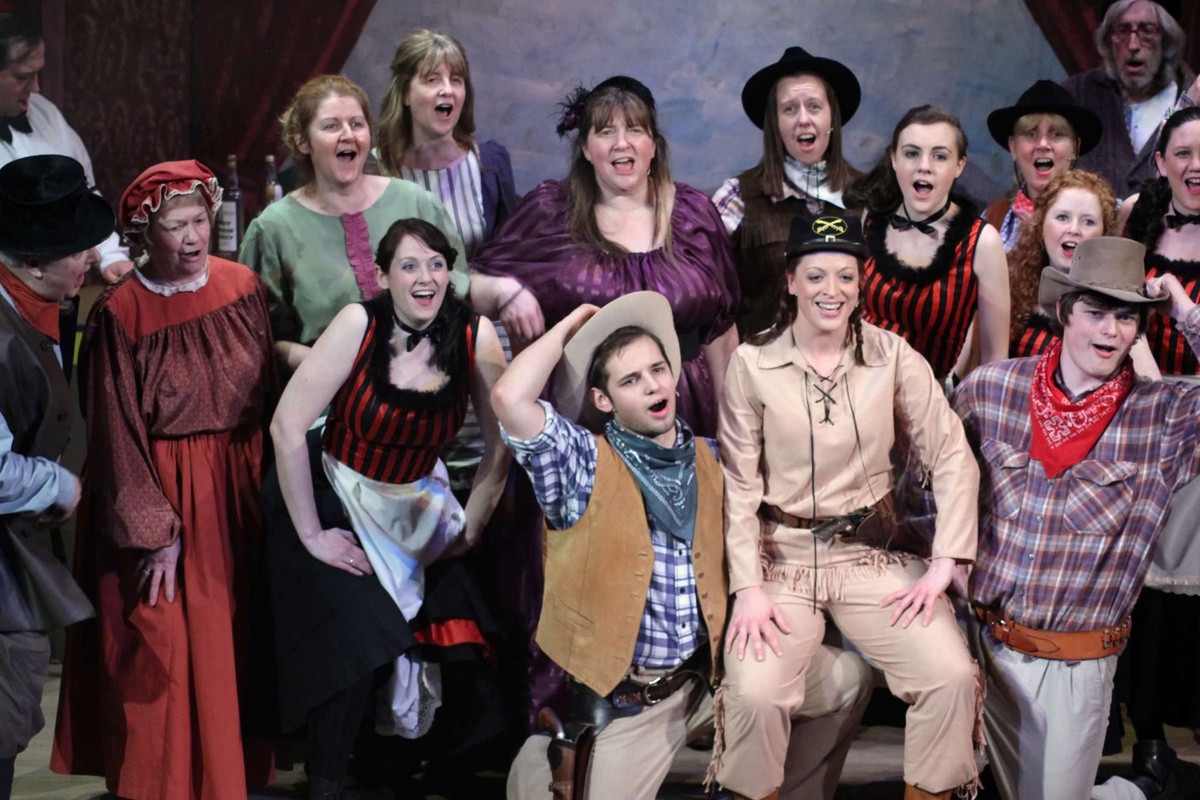
Calamity Jane 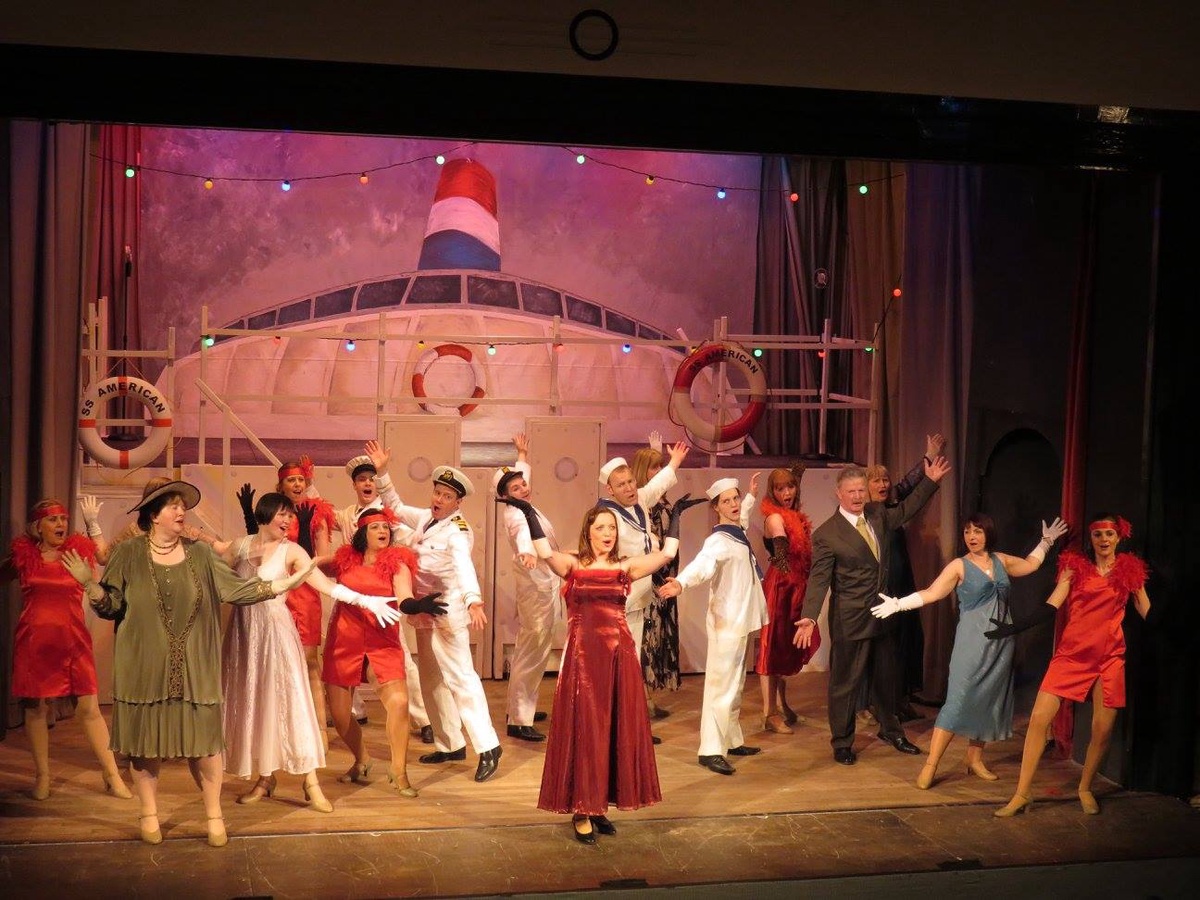
Anything Goes 4 March 2021
- David Muirhead
-
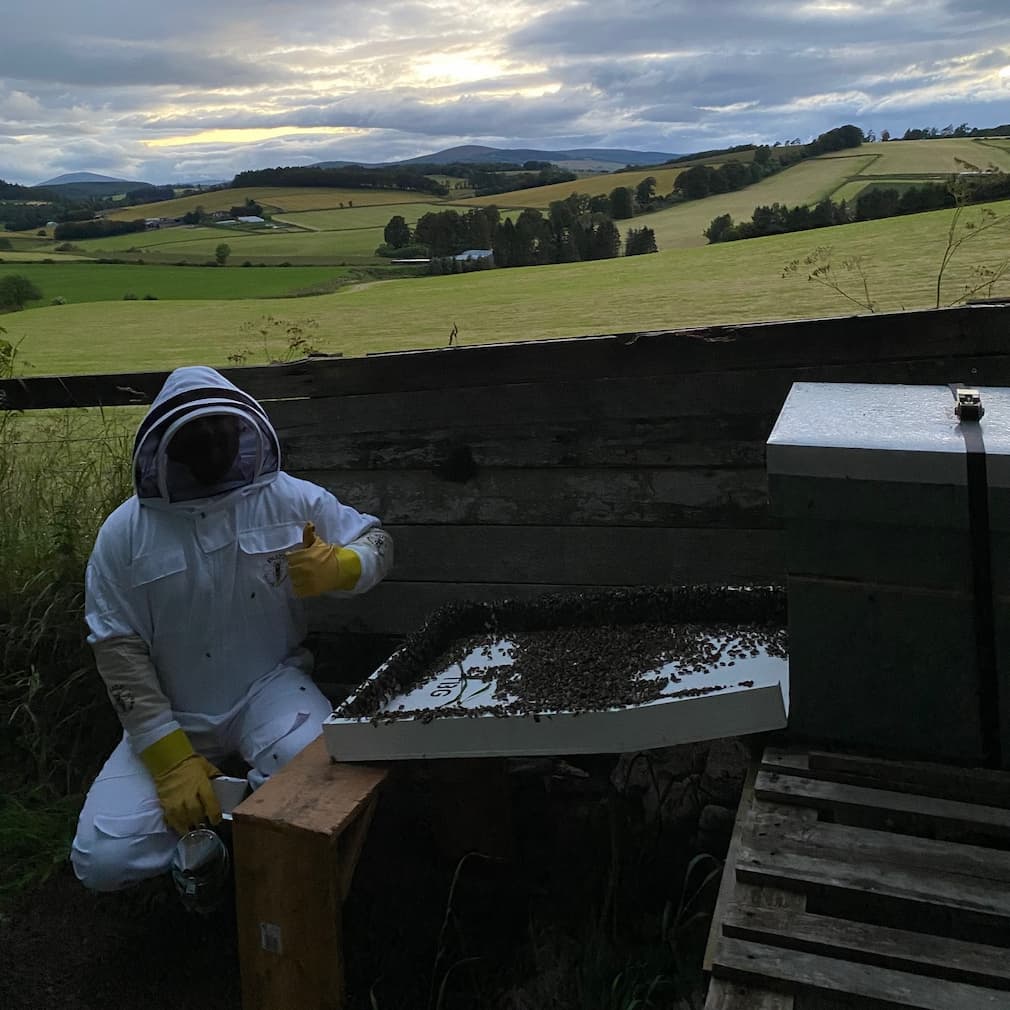
When I have spare time (increasingly difficult these days) I do as much as I can as a beekeeper. I took up beekeeping in earnest in the past year when I caught my first swarm! Our family moved out to Aberdeenshire a few years ago, and we are very fortunate to live in the beautiful countryside. I was keen to take up beekeeping having seen my father-in-law do it or several years.
I joined Tarland Bee Group and took part in a beginner's course in 2019. I was then away a lot doing fieldwork, so I never had the chance to get going that year. In July 2020, I caught my first swarm - this is an incredible thing to witness and be a part of. It was a last-minute phone call from a local beekeeper who spotted it. Thankfully my hive was ready, and I just needed to collect the swarm, armed with my bee suit, a blanket and carboard box. Another highlight was having my first year beekeeping experiences published in the Scottish Beekeeper Magazine with a fellow newbie.
I have made several little mistakes, but in all honesty I would rather remember them all to learn from them. Beekeeping is the sort of hobby/job that you will never stop learning from and it is an amazing community of people from all walks of life who have a common joy in the activity.
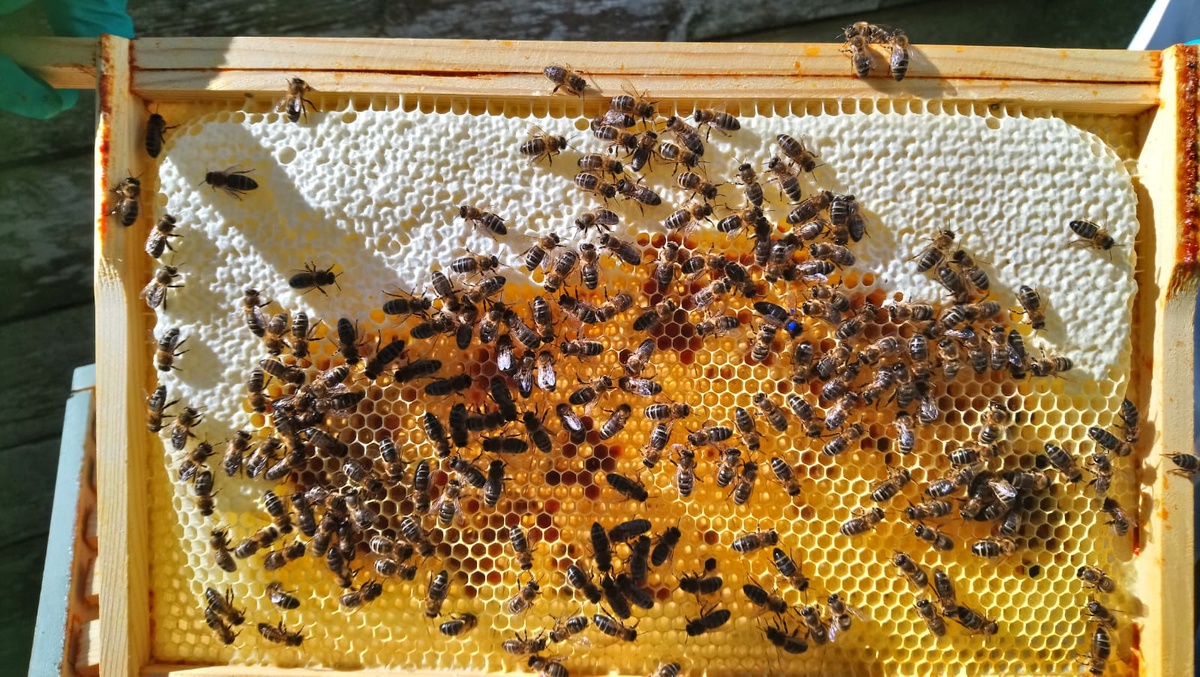
I think beekeeping often feels like some mystical and scary thing that only weirdos and tree-huggers do. This is simply not true (although I do celebrate my weirdness); anyone can be a beekeeper, even in the middle of the city with the right tools. It is a hugely rewarding hobby and opens your eyes to not only the bees, but a new appreciation for the seasons, for flora and fauna that respond to changes in the weather. I am now also taking a greater interest in what I plant in my garden as a result.
25 February 2021
- John Duncan
-
I was always interested in motorsport and regularly attended race meetings at Knockhill racing circuit as a spectator. I bought a race-spec MINI Cooper in 2015 and decided to give it a go. It's quite a lot of work to get involved but everyone at the Scottish Motor Racing Club (SMRC) was very helpful and welcoming. I joined an established team called MINIMAX Motorsport, who took care of the maintenance and repairs and started my novice season in 2016, competing in the Celtic Speed Scottish MINI Cooper Cup.
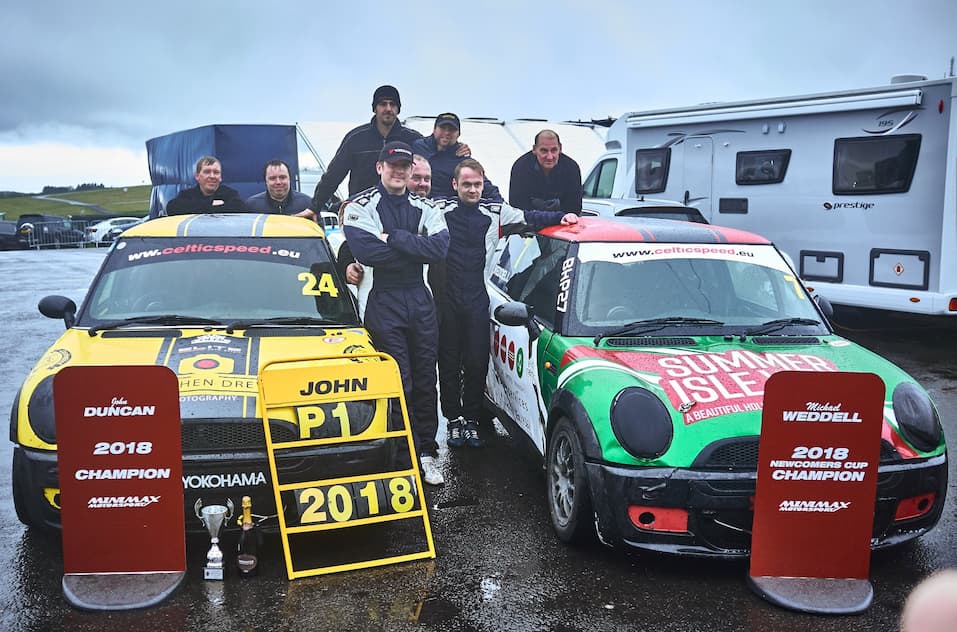
One of the highlights of my racing career was winning a race in my first season - that was pretty special and quite unusual in such a competitive championship. Getting to drive at places such as Donington Park, Rockingham and Anglesey was good too, but the main highlight has to be winning the overall championship title in 2018.
Motorsport is all about dealing with extreme highs and extreme lows. I wouldn't want to forget any of it. Mistakes and accidents happen all the time but what's most important is how you deal with them, learn from them and improve.
My wife Lottie also works for the University. She was a very important member of the team and came to as many races as possible. I'm hugely appreciative of her support through all the early starts, all of the driving up and down the country on race weekends and most of all, her motivational pep-talks (some of which were necessarily blunt!).
Although retired from the actual racing, I am still Membership Director of the SMRC. If anyone wants to know how to get involved with the SMRC, they can get in touch with me via my uni e-mail .
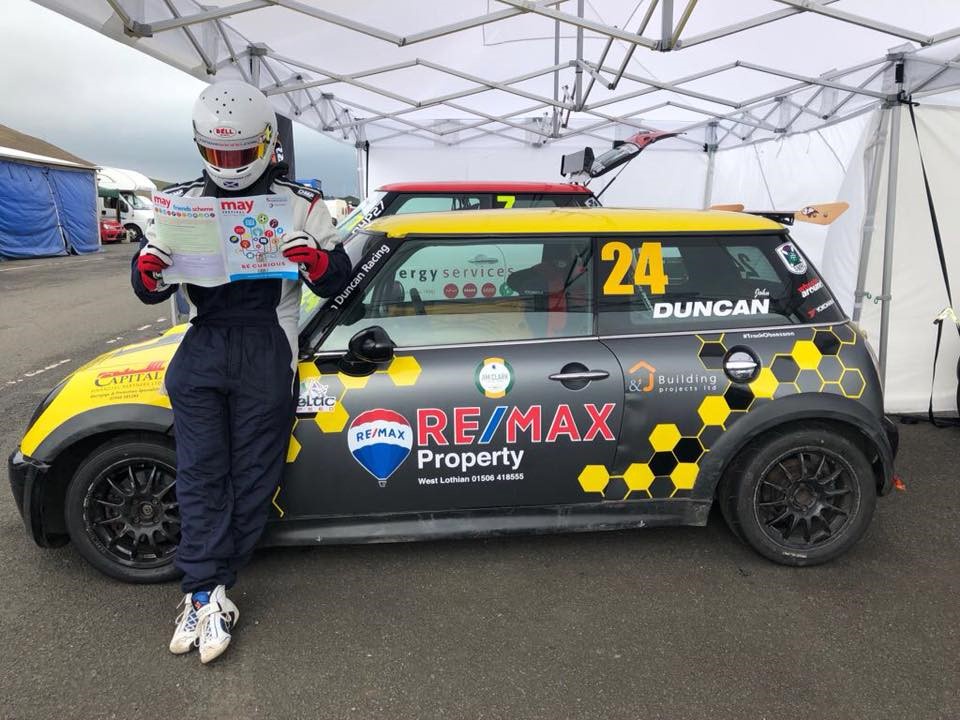
18 February 2021
- Mirjam Brady-Van Den Bos
-
I'm a Psychology lecturer, and my main focus is on first years as I'm co-ordinating a methodology course. This is challenging and hugely rewarding role - I love first-years as their fresh enthusiasm matches my own. I don't separate my work and non-work time. I consider my life as a whole. It may not work for everyone, but this approach works for me.
.jpg)
My students know a lot about me, as I'm always talking about things that go on in my life. I tell them about my swimming, about the mouse who lives in the loft, what we're having for supper and anything else that comes to mind. And the opposite applies, too. When I'm swimming, I think about my students and how I can apply things in a lecture. In fact, I once gave part of lecture whilst standing in the Dee.
Wild swimming is a huge part of my life. In Aberdeen we're blessed with so many resources on our doorstep. In just 15 minutes, I can cycle to the banks of the Dee, and in 20 minutes I can be at Fittie (Footdee). At the moment (yes, in the middle of winter) I'm swimming at least three times a week, more if tides and daylight allow. I'm lucky in that my face doesn't feel the cold, so I can still do the front crawl when the water is 1 degree celsius!
It all started during the first lockdown last year. As a daily pool swimmer, I missed the water so much that I almost spiralled into a depression. My husband suggested I try the sea. We bought a wetsuit and I first ventured out just north of the Bridge of Don in May. It was scary and exhilarating at the same time. This first swim was absolutely crucial in how I felt about the rest of the lockdown. Having reconnected with the water, I felt that for me personally the lockdown was over. Somebody saw me and suggested I join Swim Free Aberdeen. I did and spent the rest of the summer exploring other parts of the sea and the river with them. I'm definitely more of a river person. I like the freshness, and the absence of waves.
One of my highlights came after a bad storm last summer, going back to the sea to find it perfectly still with all the sand having settled. We could see small fish scuttling away as we swam - the visibility was incredible. Another involves a seal which visits us often in the Dee during high tide. One time, when the river was very clear, as I swam, during the part of the stroke where my head is under water, I saw this majestic seal overtaking me under water. The sun shone through the water on its skin and it was incredible. Also, being interviewed on the riverbank by STV about my sponsored swim for the River Dee Trust was a very special event. It was the first of October, a perfectly sunny afternoon and I raised a lot of money too - thanks to some of my colleagues at UoA!
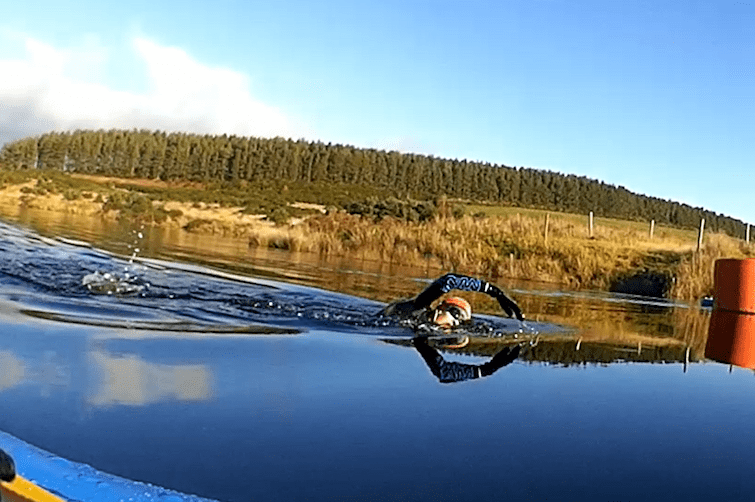
There have been moments I would rather forget, such as the time I was swimming in the sea, on my own, and the weather was overcast. There was quite a bit of swell, lifting me up and putting me back down. During one of the 'up's, I breathed to my right and I don't know what it was, probably because of the light and my slightly foggy goggles, but it looked like I was riding a tsunami. It was just a visual illusion, yet it really freaked me out. Another time I thought I was being chased by a seal, but it turned out to be a shag flying low. I think I need new goggles!
Wild swimming is FANTASTIC for your mental and physical health and I would say to anyone to give it a try this year. Especially if you think 'this is not for me', it might just change your life.
11 February 2021
- Joe Johnston
-
I began collecting international football shirts after accidentally finding a Slovenia shirt in a charity shop shortly after the World Cup in South Africa in 2010. Little did I know that it would ultimately lead to me having 500 shirts in the wardrobe and making multiple appearances on television, national radio and featuring in newspapers and on news websites in countries as far away as Algeria and Albania!
I set out with the target of collecting an official football shirt for every national team in FIFA, which seemed like an impossible goal at the time, but was a fun hypothetical target. At the time there were 208 nations, but that rose to 211 through the course of the quest. That might not seem like such a difficult goal if you're from a country where you can just pop into any sports shop and buy your national team's jersey, but in the many nations where there is endemic poverty or little interest in football, it's not that easy.
Indeed, there are many places where official replica jerseys have never been available for sale, meaning I had to track down players using social media and Google Translate and somehow convince them to part with their match shirts. Amazingly, I managed this for some of the world's most hard to get nations. For instance, a non-league player in England who was called up to the Montserrat squad grabbed me a signed shirt on his first visit to the island, and a St Lucia player couriered me one of his old matchworn jerseys. Republic of Congo's captain Prince Oniangue even sent me his shirt from the 2015 African Cup of Nations!
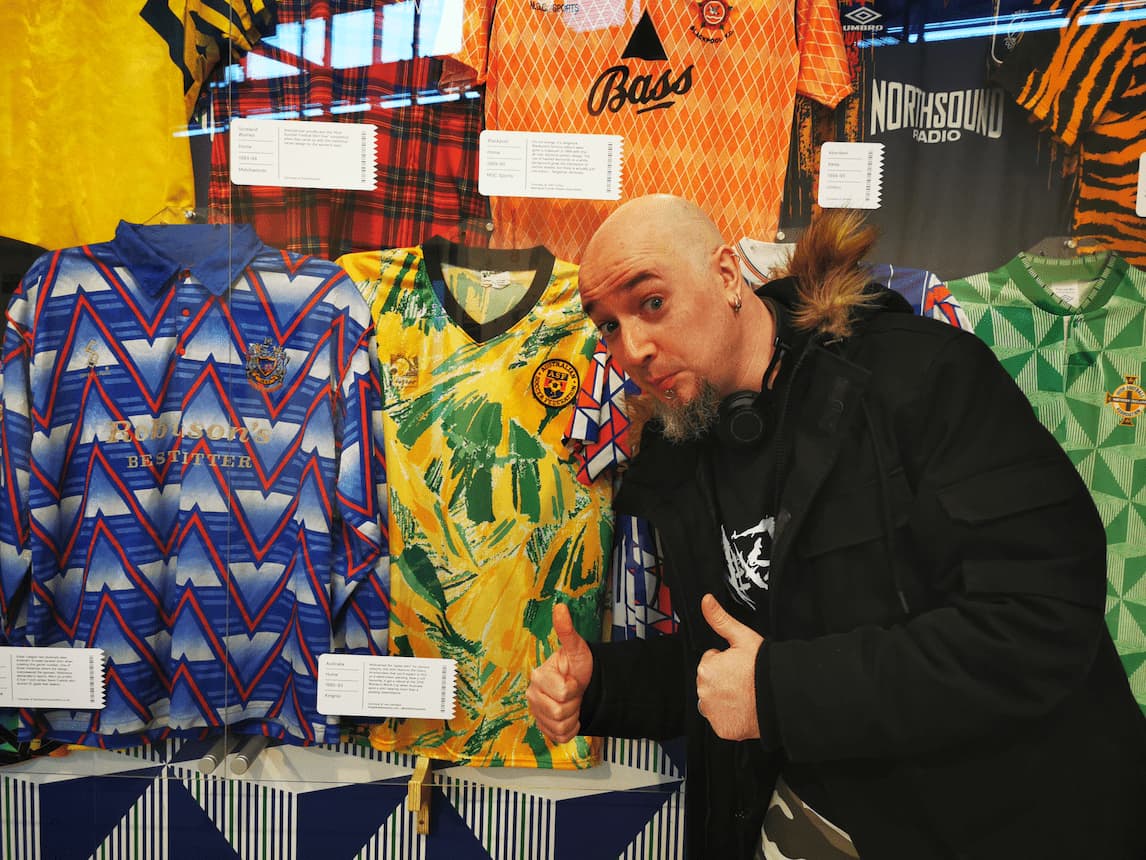
For countries where I couldn't find a way to contact a player, I had to get creative. The UK's Ambassador to Sudan searched for a year before eventually managing to source me a shirt from the owner of one of the nation's biggest clubs. An anonymous Turkmen source managed to smuggle me a matchworn shirt out of the famously closed country. A documentary maker in Tanzania managed to get me a shirt from a player, and an unnamed Madagascan football official raided the offices of the national FA to help me out.
When I finally completed the collection, the world went crazy for a few weeks. I was featured on STV news, STV2's Live at Five, Radio Five Live and a few local radio stations from across the UK. I was in all the local papers and The i news website did an article and a 'guess the shirt' quiz based on the collection. I was also in The Irish News, The Sunday Post, Buzzfeed News, The Shropshire Star, DZfoot, Yahoo News, The Irish Examiner and The Sunday Mail to name just a few, and even made a print newspaper in Switzerland!
Some of my shirts have really great stories attached to them. I have an Azerbaijan shirt which was once owned by the Pope, a fake Malawi shirt bought from goalkeeper David “Calamity” James' Bankruptcy auction, the goal scorer's shirt from Bhutan's first ever World Cup qualifying victory, which made the news all over the world (the global press absolutely loves a 'World's Worst Team Wins' headline), and an Eritrea shirt brought to Europe when the entire squad absconded after a World Cup Qualifier and sought asylum in Uganda.
My Australia shirt is currently in the National Football Museum in Manchester, I have imported huge parcels of Malawi shirts, I have been used by eBay in their advertisements and called up by national radio to comment on the shirts prior to the last World Cup. I have been a centrefold in the Daily Star and a page 3 model in the Evening Express. I also have a sub-collection of around 40 Scotland shirts, including player shirts from 90s legends like Colin Calderwood and Colin Hendry. I always find it slightly amazing that a story that is essentially “Man buys shirts” gets the world so excited, but it's certainly become a fun tale to be able to tell!
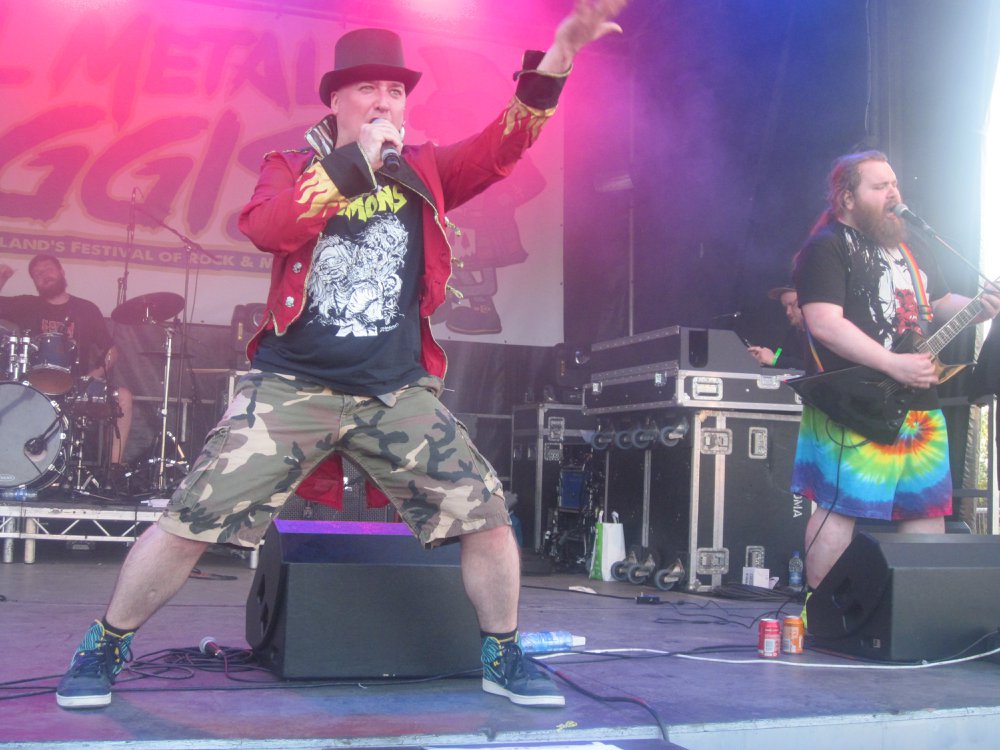
Aside from all the shirt stuff, I also provide vocals for one the UK's top underground thrash metal bands, Thrashist Regime. Our last album, Carnival of Monsters, was recently placed at #4 in Worship Metal's list of the best UK Thrash albums from the last 10 years, alongside such pioneers of the genre as Onslaught, Acid Reign and Xentrix. We have a chapter dedicated to us in the recent book, Contract in Blood: A History of UK Thrash Metal, and we have been featured on the cover CD of publications including Metal Hammer and Zero Tolerance magazine, which was especially gratifying as I have been buying Metal Hammer since I was about 10 years old! I have seen my favourite band Iron Maiden 48 times all over Europe (are you sensing that I have a slightly obsessive personality?!), as well as just about every other big name metal band you care to name - honestly, there really isn't a much better way to spend a day than drinking cider- in a field with a load of hairy, sweaty people singing along to your favourite band playing Fear of the Dark. Other than all that, I like Greece, Columbo, being kind to cats, and my favourite colour is green.
I have a website where you can see all the shirts and read my various witterings at www.theglobalobsession.com . You can also follow me on Twitter - my handle is @GlobalObession .
4 February 2021
- Wai-Lum Sung
-
I originally trained as a classical ballet dancer in London back in the 1980s at the Urdang Academy of Ballet. Classical ballet has remained my passion all these years and I continue to dance and teach it to this day.
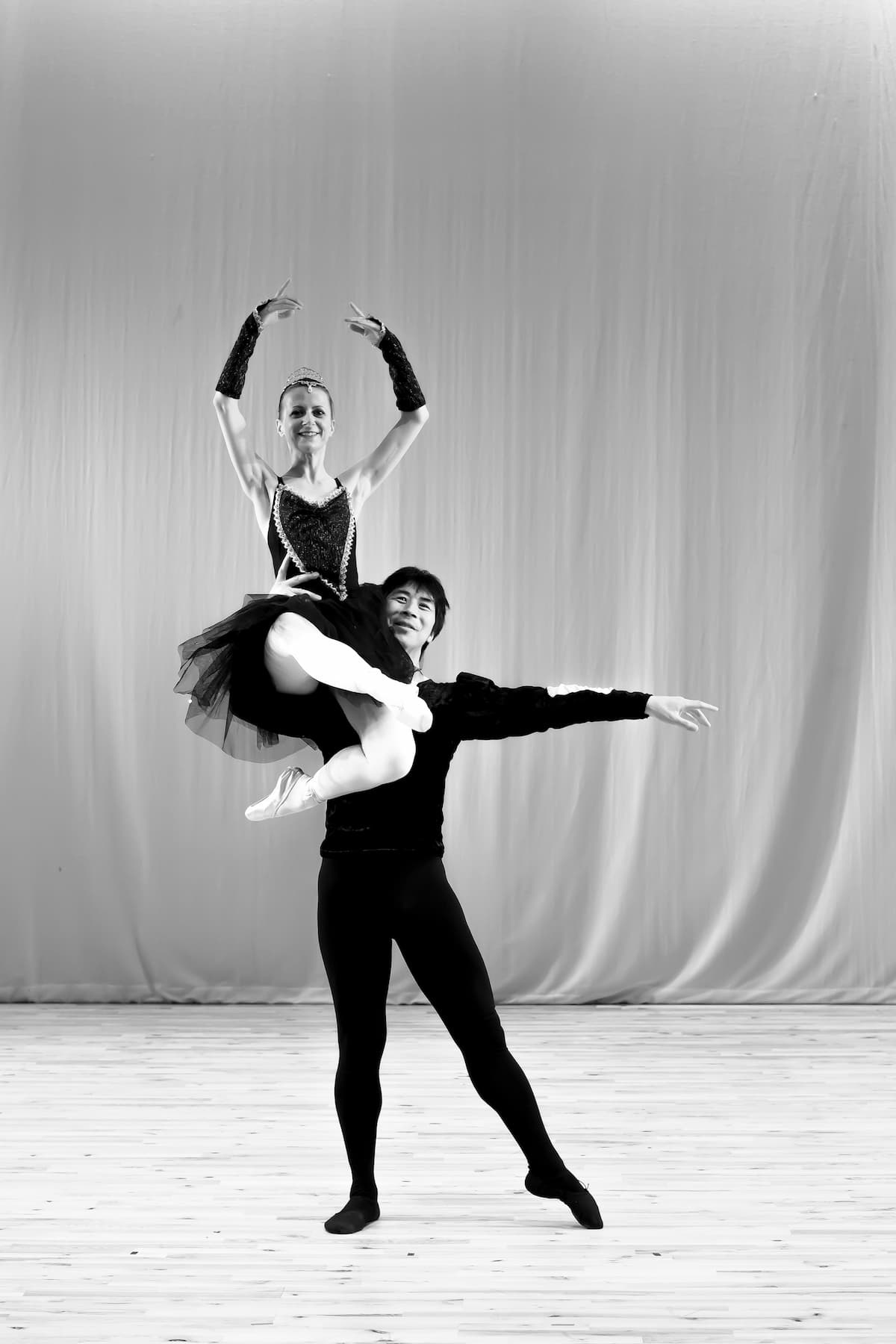
The first thing I wanted to know when I moved to Aberdeen was where can I dance? Fortunately, there were classes at Citymoves, where I now teach ballet. I also taught ballet classes for the University Dance Society for the first few years I was here. These days, classical ballet is not as kind to my 55-year-old body! Yoga has certainly been a major factor that has enabled me to dance for as long as I have. Speaking of older dancers, I do have people in my classes ranging from aged 20 to 70. It's never too late! There is a misconception that you must start early; that is certainly the case if you want to dance professionally, but anyone can gain the benefits from ballet.
The most common statement I hear when I mention I'm an ex-classical dancer, is, 'you must be fit to do that'. In some ways, dancers are considered athletes but it's more about the artistry and expression of the soul. I've never been into the fitness scene, I have just danced for the sheer joy of dancing and the fact that ballet has huge health benefits is a massive bonus. But, as I age, I've found that I have had to adopt more cross-training so that I can maintain a level of fitness to sustain my technique or what's left of it! Nureyev once famously said, “if I miss class for one day, I notice it myself, miss class for two days and my classmates notice it, miss class for three days and the audience will notice it!”
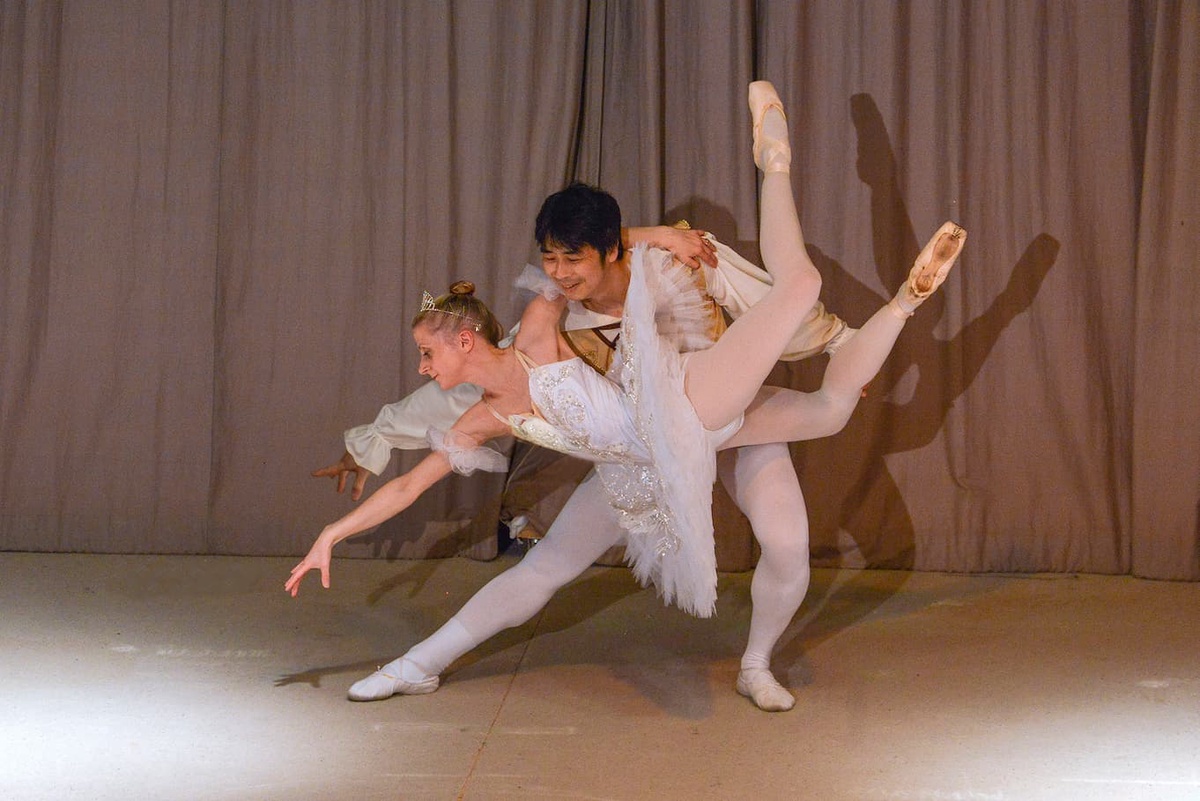
In complete contrast to the usual notions of classical ballet, conspiracies, tales of revenge and all things macabre are themes with which I hope to create a ballet one day using death metal!
Here is a link to a showreel and clips of my dancing: https://metaldancer1.wixsite.com/mysite/ballet
28 January 2021
- Greg Gordon
-
In the first in our My Other Life series, Professor Greg Gordon, Head of School of Law, tells us about his passion for the stage and as a writer and performer with Doric musical sketch comedy team, The Flying Pigs.
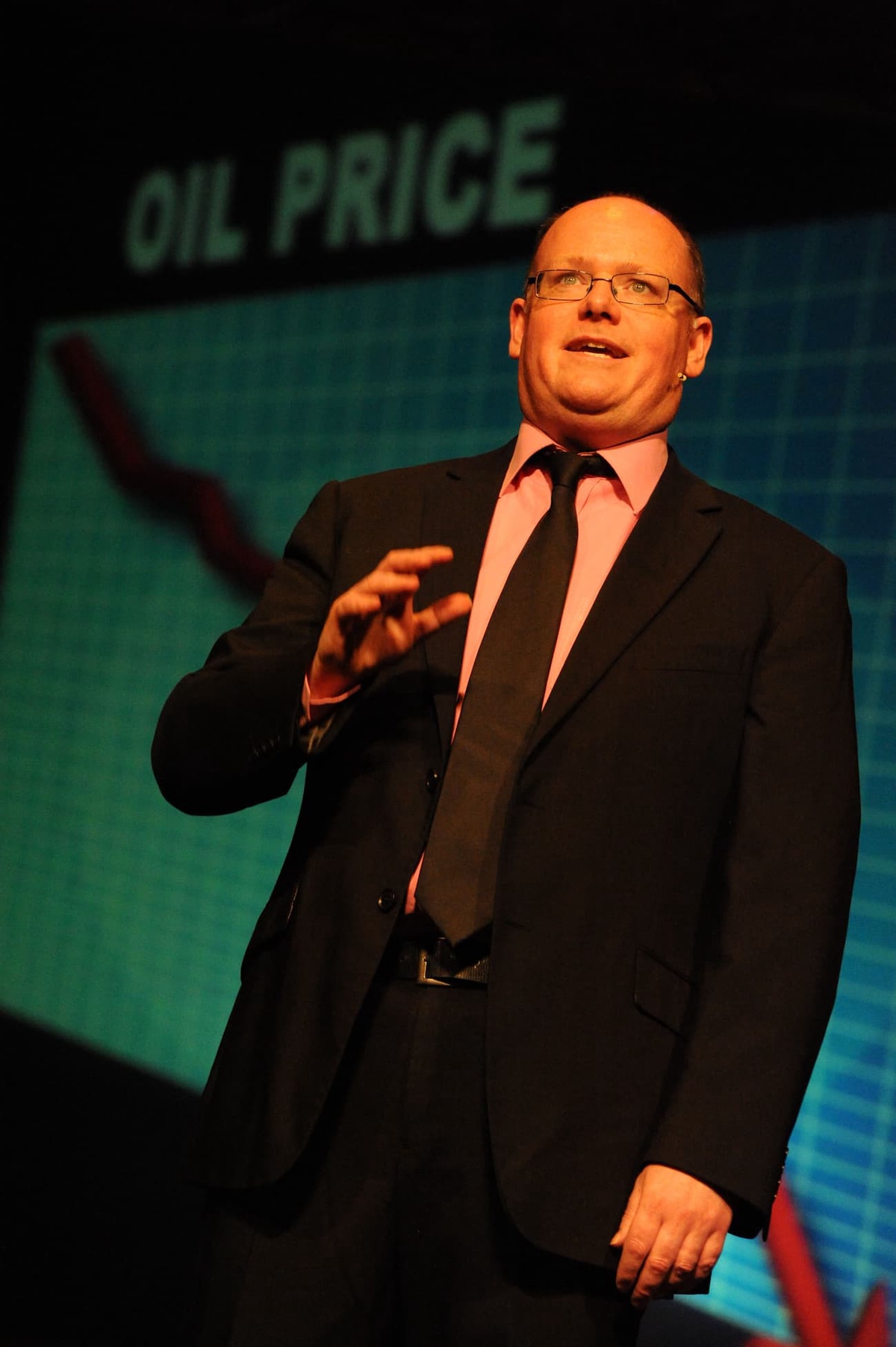
I was always interested in writing and comedy. Being from Aberdeen and with parents and grandparents from Aberdeenshire, I was brought up in a Doric-speaking house. Like a lot of people in Aberdeen at the time, we had all the Scotland the What? records and my aunt also had the tapes of June Imrie's
'Torry Quine'. I used to listen to them over and over again.I got involved with the student show a couple of years into my degree when an old friend from school asked me to join the writing team because they were struggling for people who could write Doric. I never performed in a student show (apart from a powerful but inauthentic Archie MacPherson impression shouted into an off-stage microphone), but absolutely loved writing. After a while, I wanted to find a forum for some sketch-based ideas and to be able to write without having to work within the structure and conventions of student show, so I started hosting a few of the student show writers at my house and we would read out sketches and brainstorm ideas. After about a year, there were only two of us left standing, and we approached John Hardie (son of Buff Hardie of Scotland the What? fame) who had directed the student shows we wrote for, to see if he'd direct for us. He said yes, I booked the Lemon Tree Studio Theatre for three nights and it went from there. After three or four shows, I overcame my stage-fright and performed for the first time - I was planted in the audience to play a highly literal heckler who objects to the lyrics of famous songs and gradually grew into performance from there.
Moving from the Lemon Tree to the Arts Centre was a big step for us, but being invited to perform at His Majesty's Theatre was a dream come true and it was great to be invited to do a pre-Festival performance in the Kings' Theatre in Edinburgh. Recording the "Desperate Fishwives" radio shows for Radio Scotland was great fun. Radio is a very liberating medium, with no need to learn lines you can be writing and revising material right up until you record. Being asked to make a TV pilot for BBC Scotland was another highlight. It was filmed on location in the North East, some of it in and around the University, and I will never forget the first day's filming when we turned up and saw all the BBC lorries - it struck home that they were there to record us.
Charity fundraisers have thrown us together with some interesting people. Once we performed on the same bill as Jimmy Cricket, Bucks Fizz, Barry from EastEnders and the Turriff Silver Band (who were magic). Providing the after-dinner cabaret for Scotland the What? when they received the Freedom of the City was a huge honour. The gig didn't go fantastically well because we expected the dinner to be full of major Scotland the What fans, and had packed the script with tributes and references which were lost on most of the audience. However, Buff, Steve, and George loved it, and that was all that mattered. Fundamentally though it is, and always has been, about the writing, and just as in the days when I used to write for student show, nothing beats the excitement and joy of reading your material out for the group and having new material raise a laugh for the first time.
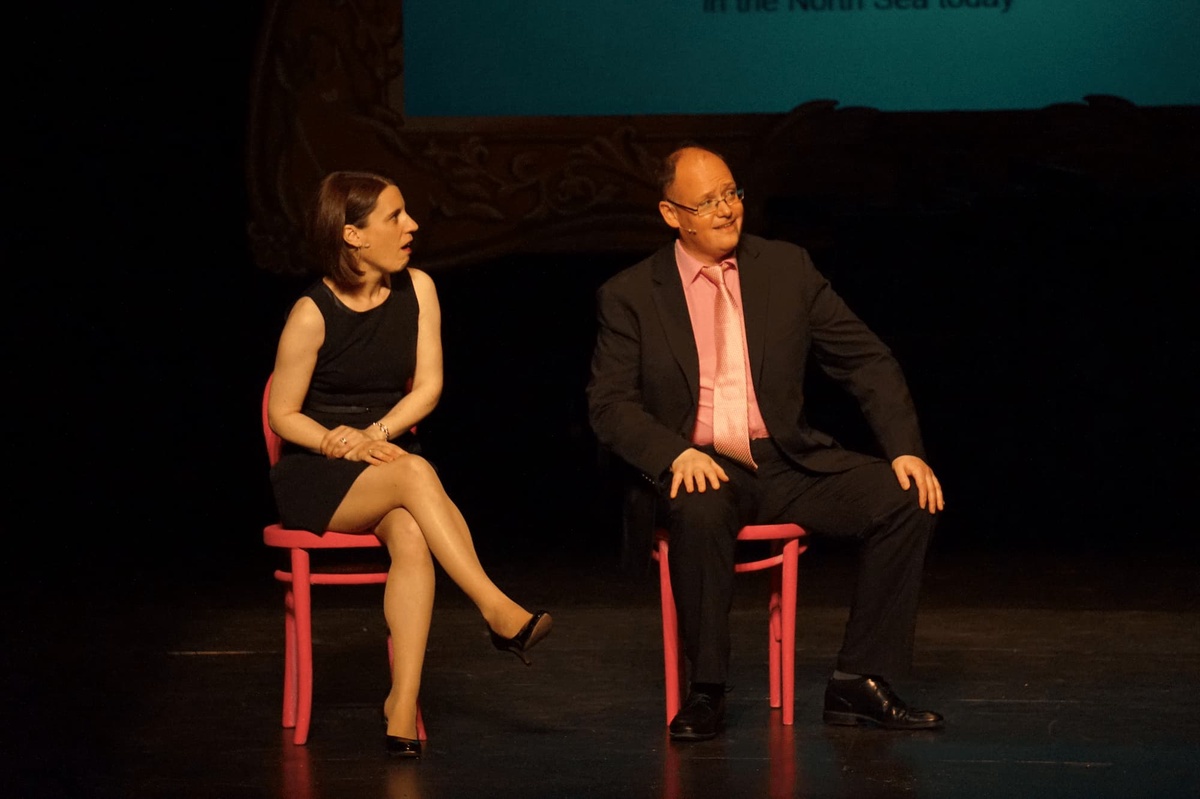
There are always a few sketches that have you as a group in stitches that don't work when you put them in front of an audience. Over time you get better at spotting the ones that are a bit of an "in-joke" and might not connect with the audience, but every show there are a few that don't fly as high as you hoped they would. and every now and then a real stinker that just gets no audience reaction at all. These totally kill the momentum of the show, and you have to start the audience off almost from cold again with the next one, so they are poison and have to be cut out if at all possible - but sometimes position in the running order and the need for costume change cover makes that impossible. Having to persevere with a stinker is just the most horrible feeling.
It was disappointing not to be offered a series after the TV pilot. I think we all recognised that we were still very much learning the ropes of writing and performing for TV through the pilot, but we hoped we'd done enough to get a few episodes to prove ourselves. Even more disappointing was losing our radio slot as a result of the unsuccessful pilot. The BBC wanted to use it as a means to try to pick up new talent for TV, which was fair enough, but we really loved and worked well on radio and would have happily continued with that for another few series.
But really all of this pales into insignificance compared to the frustration of having a show that is written and ready to go but which you can't perform, which is the situation we've been in for almost a year now. I'm so looking forward to seeing the theatres open again!
*In 2020, NHS Grampian asked The Flying Pigs to produce a series of light-hearted public service announcements about Covid-19 which is available on the NHS Grampian's Facebook page .
21 January 2021
